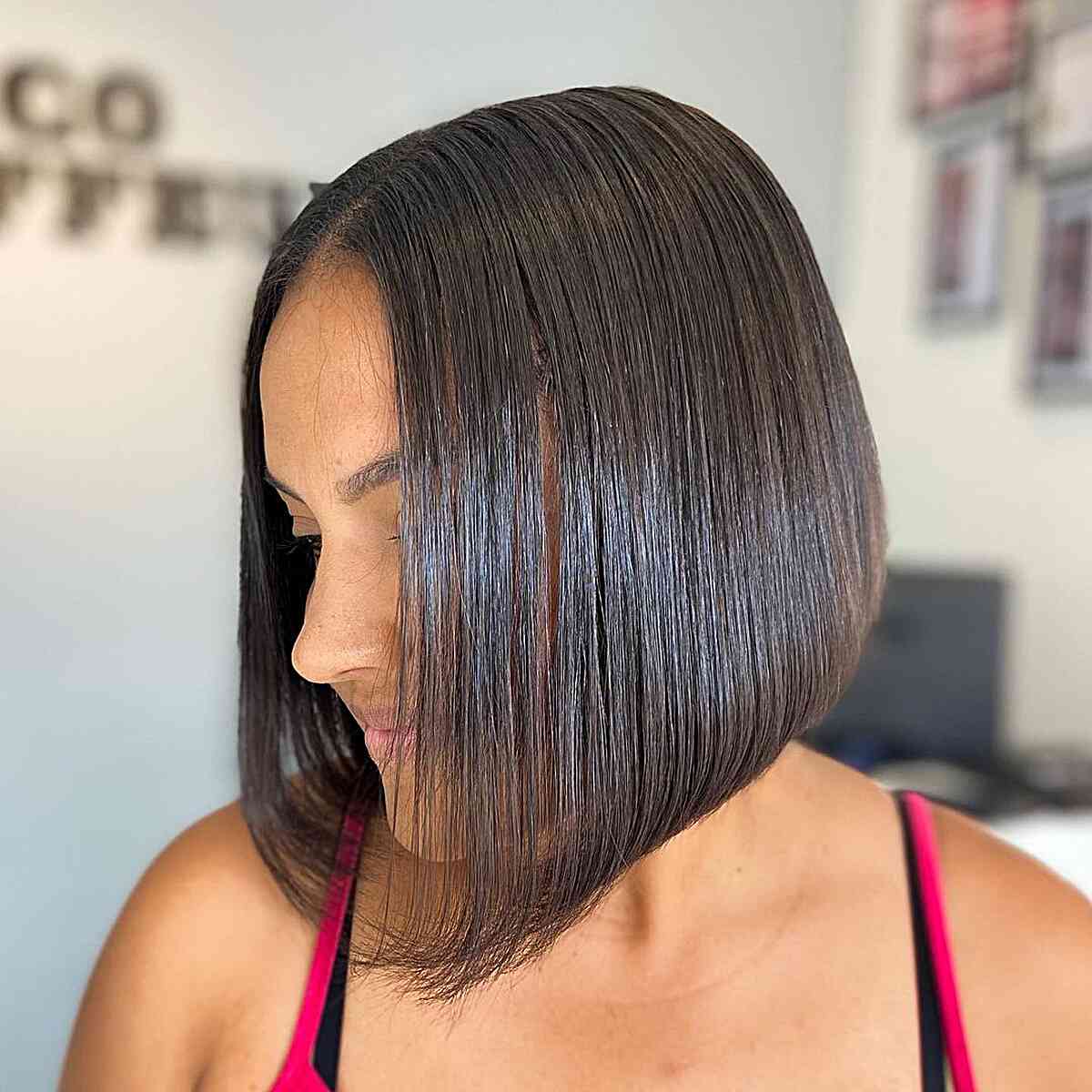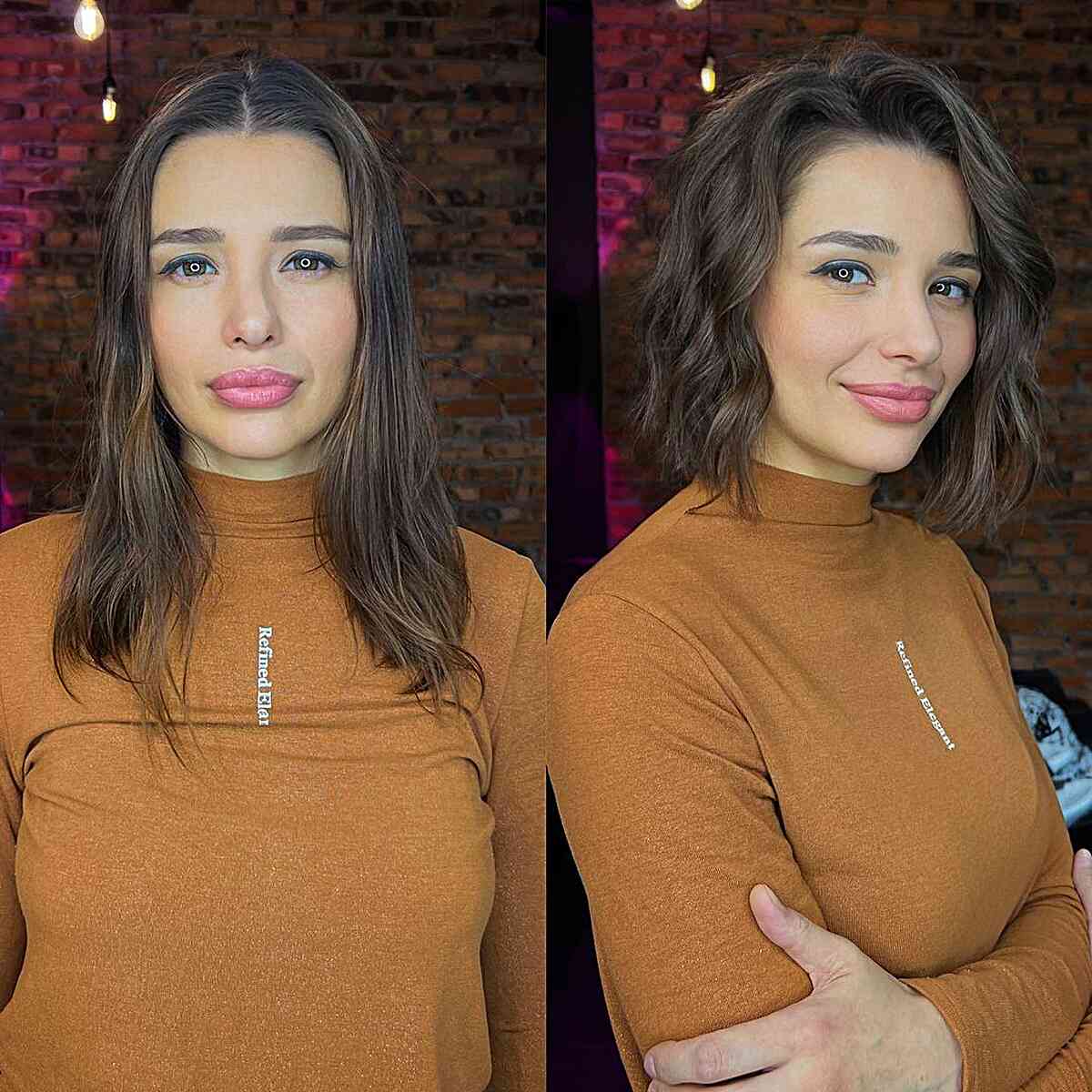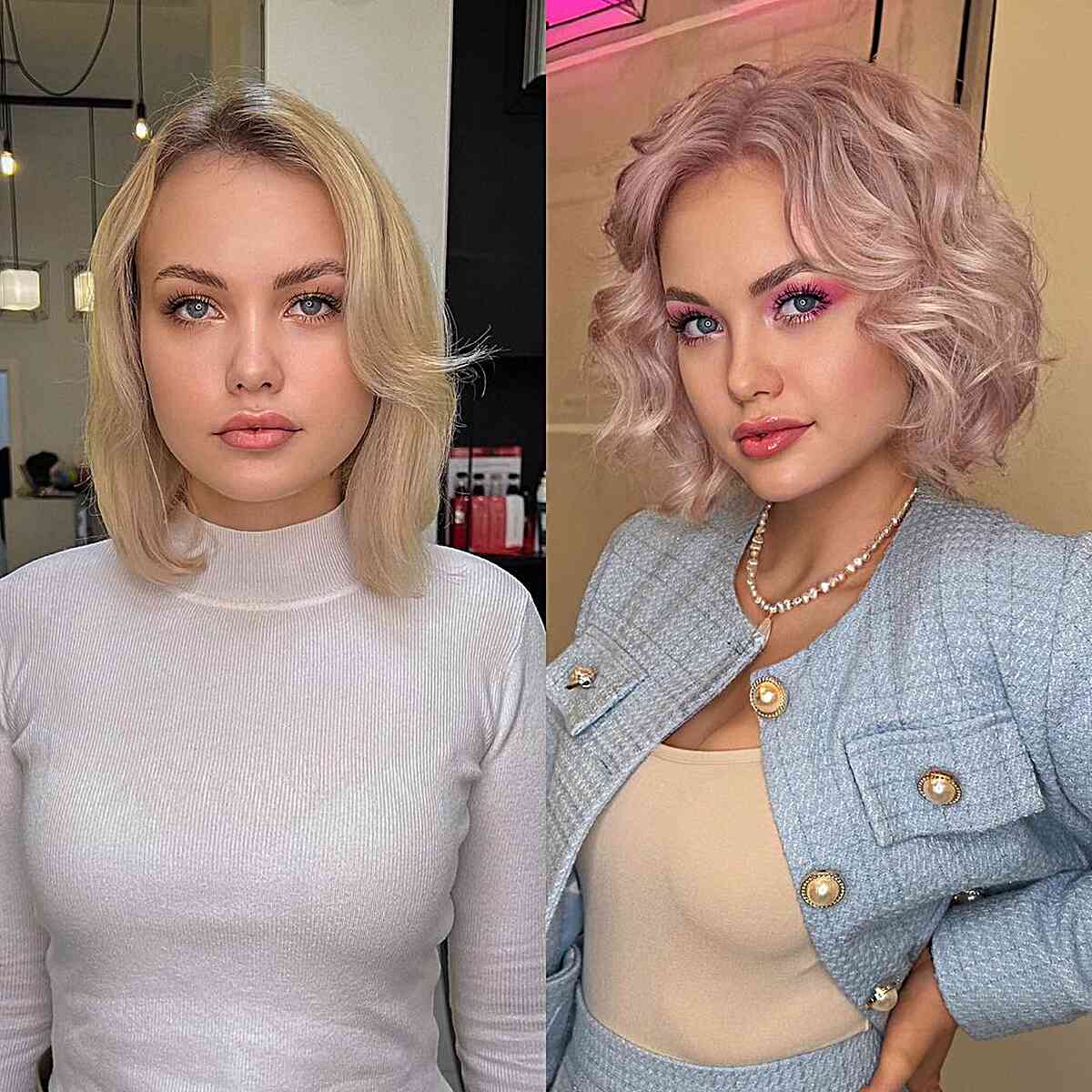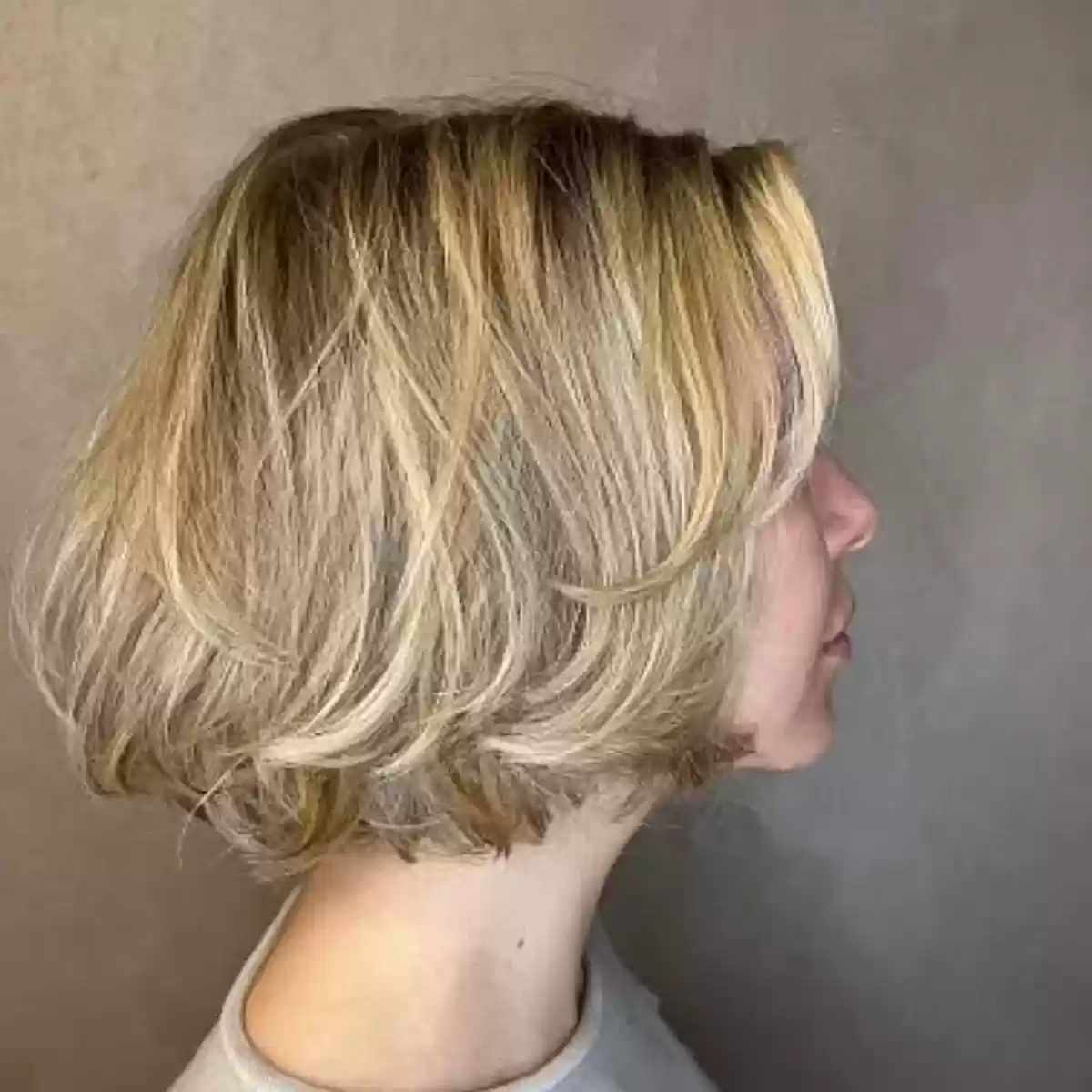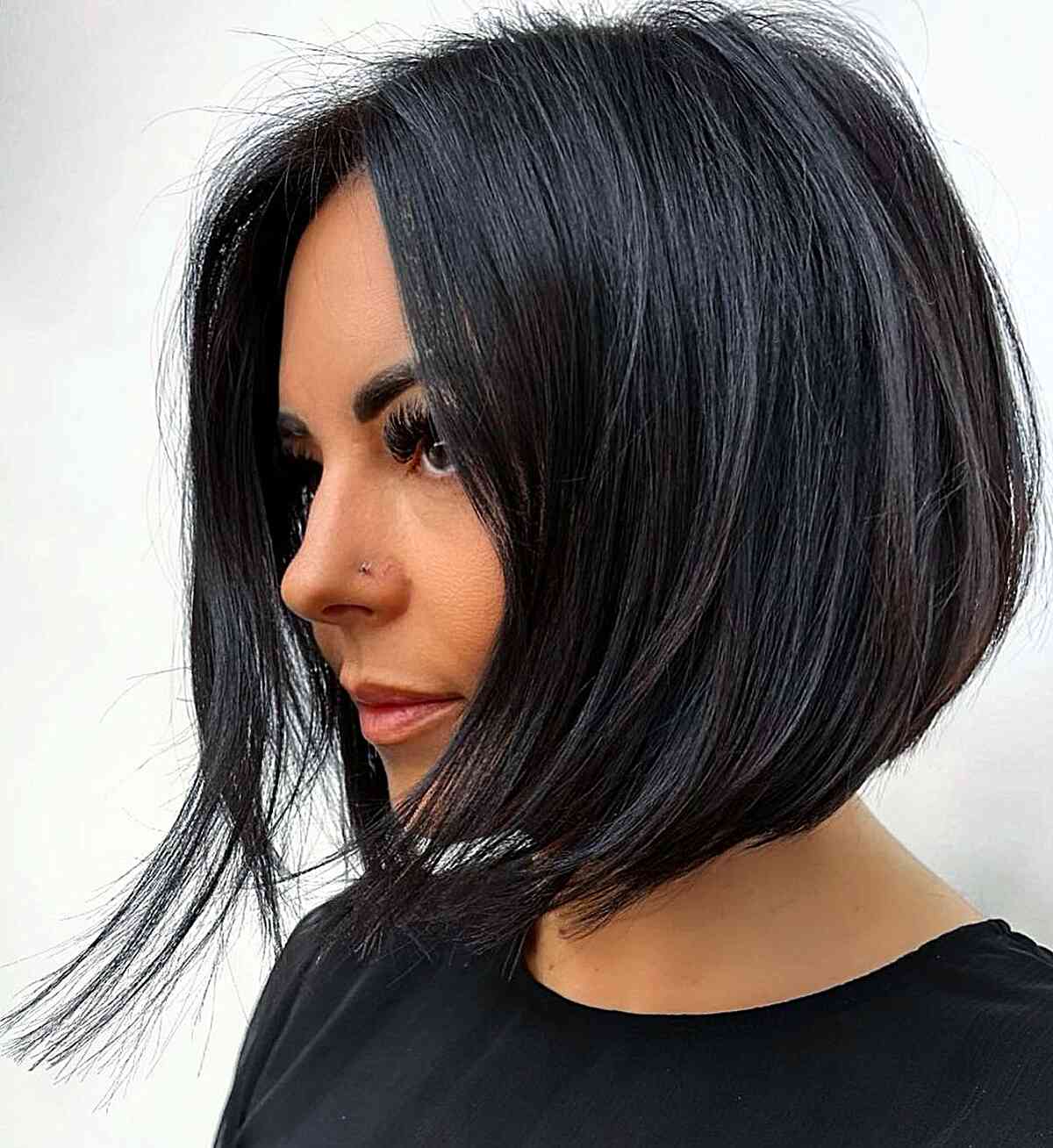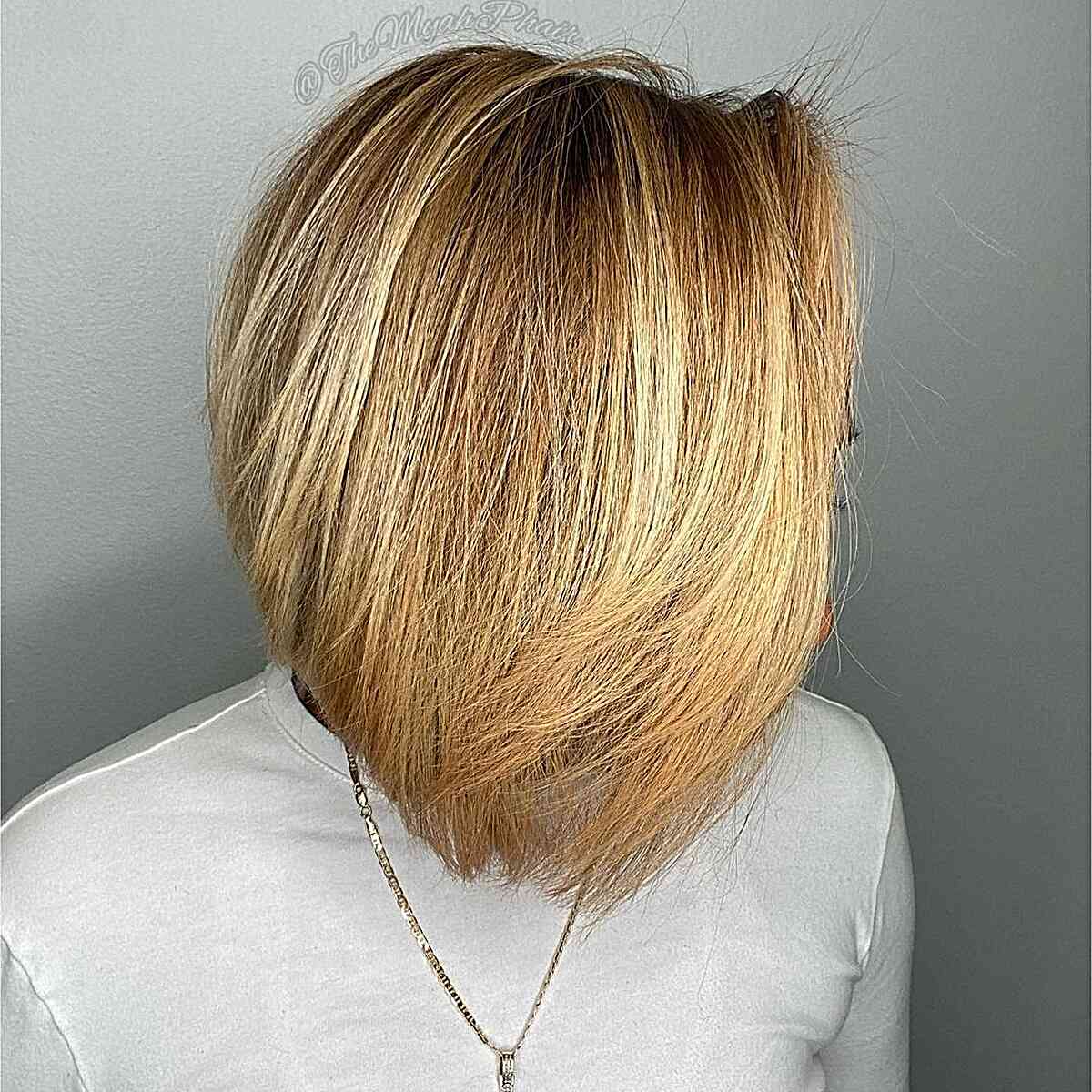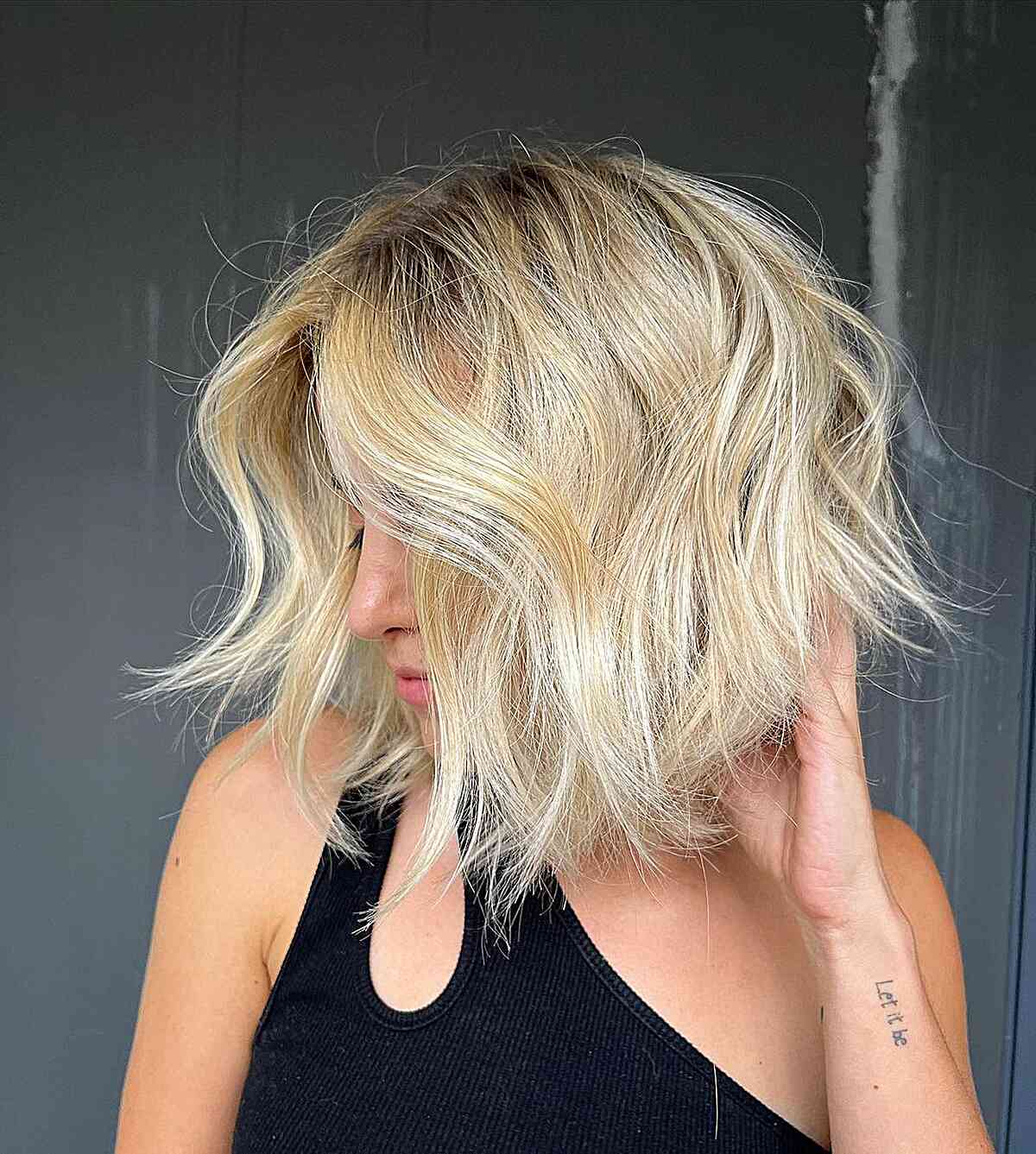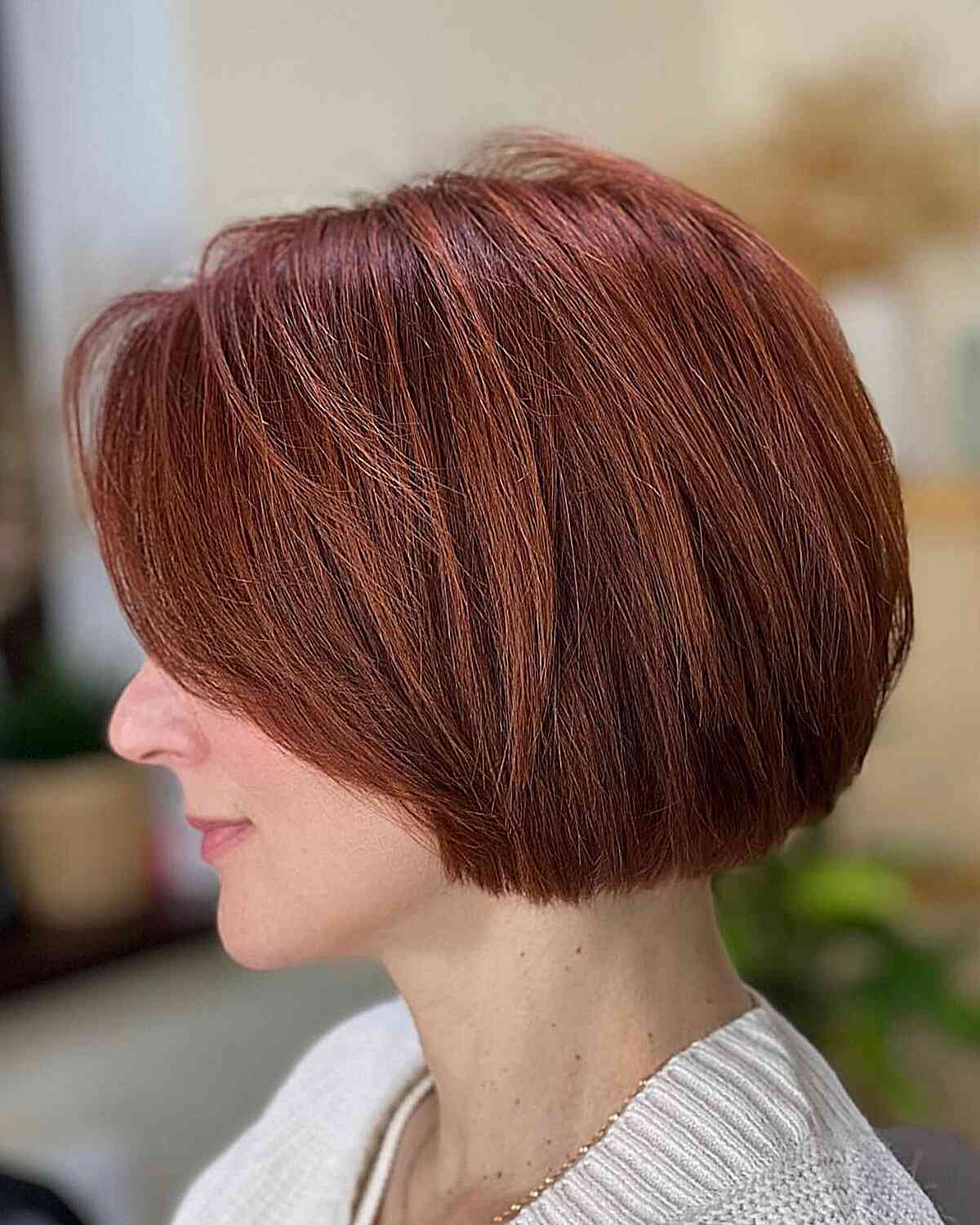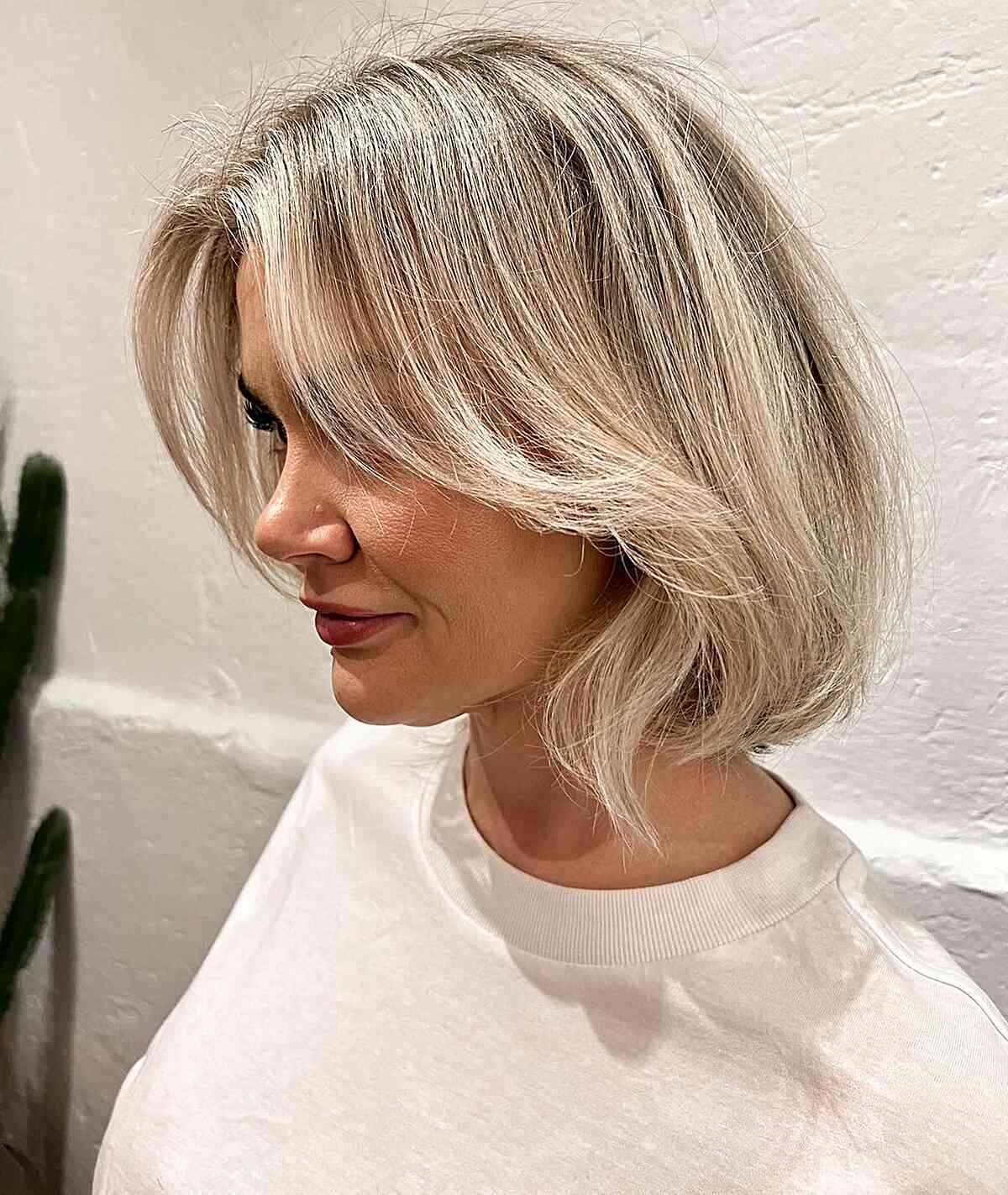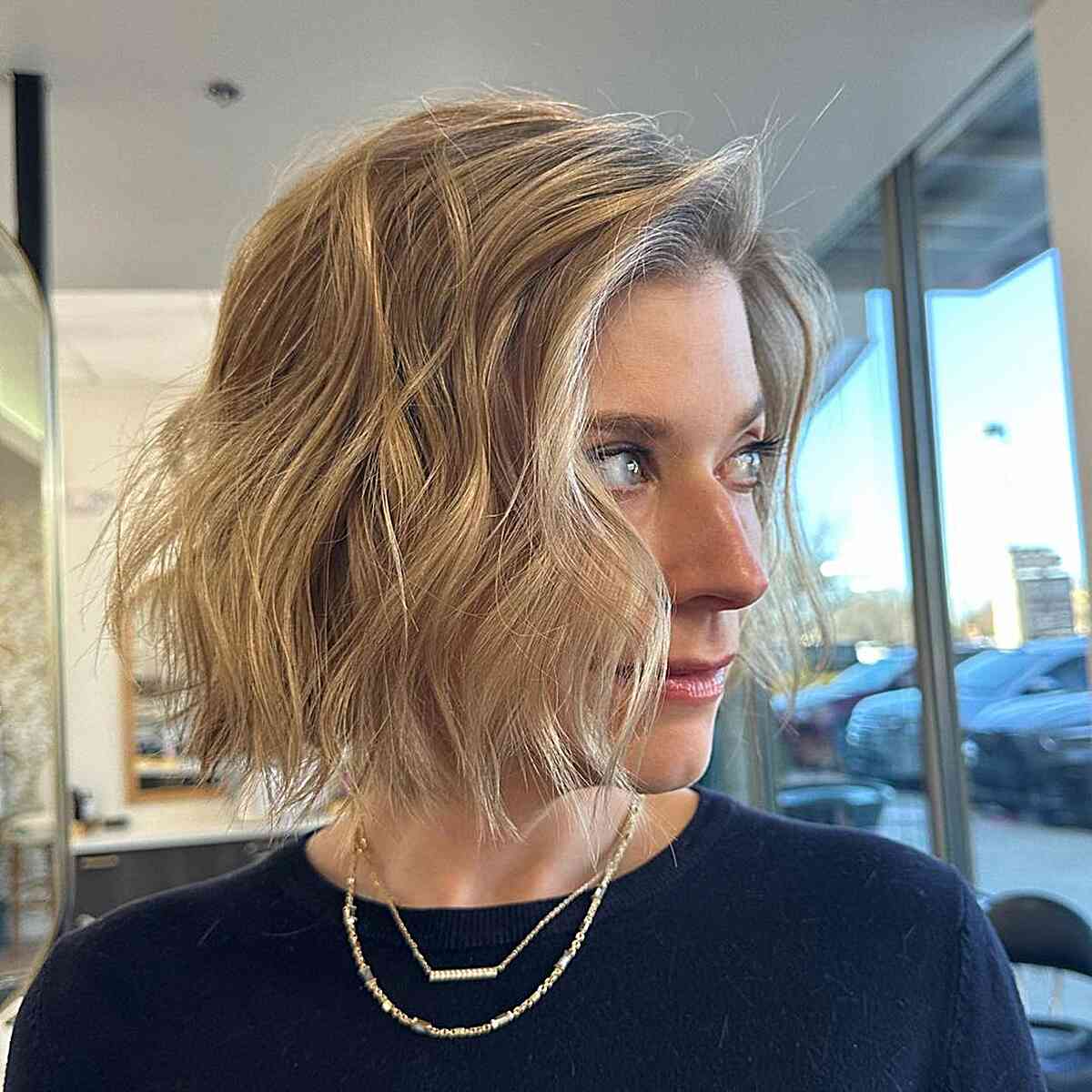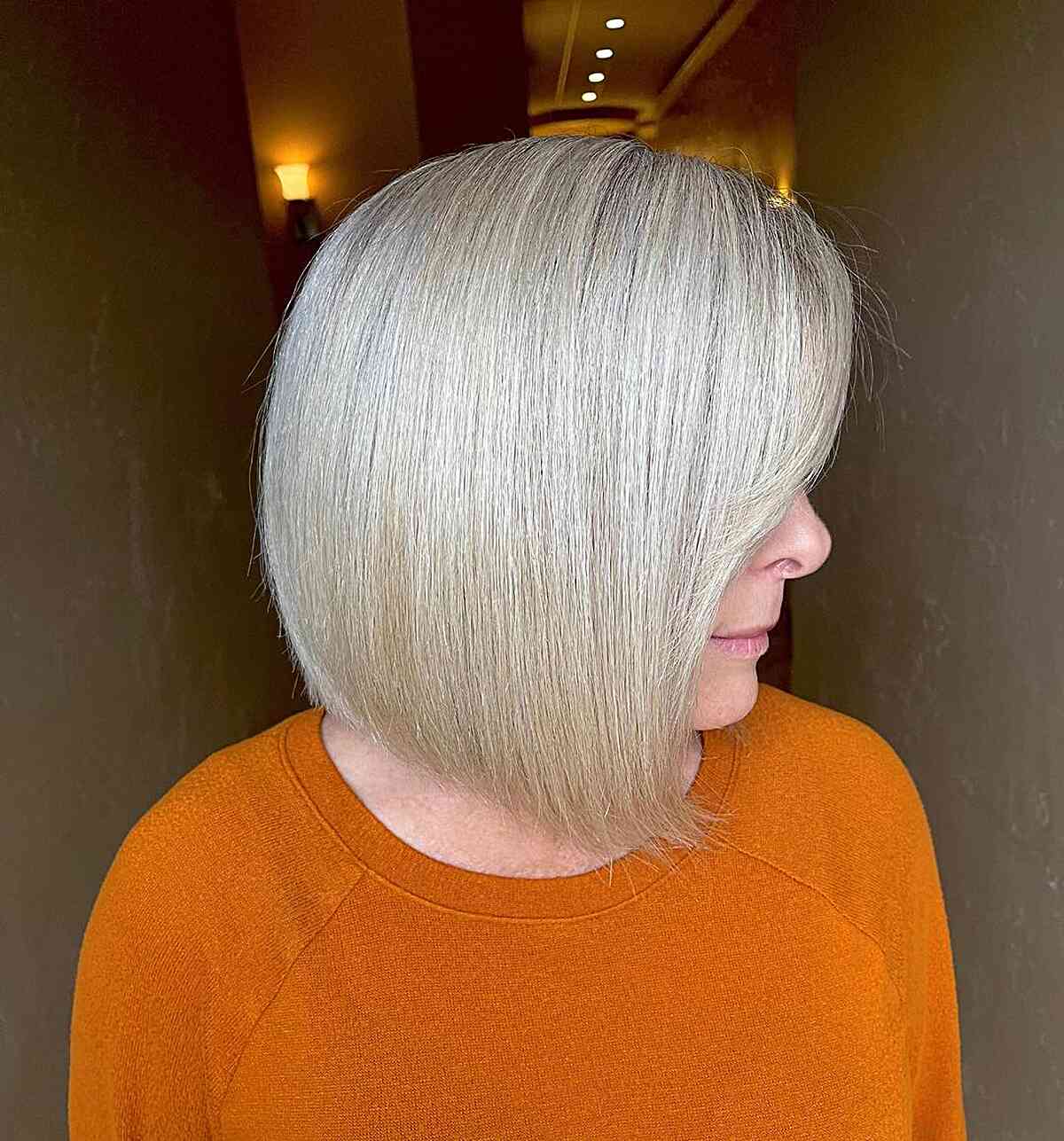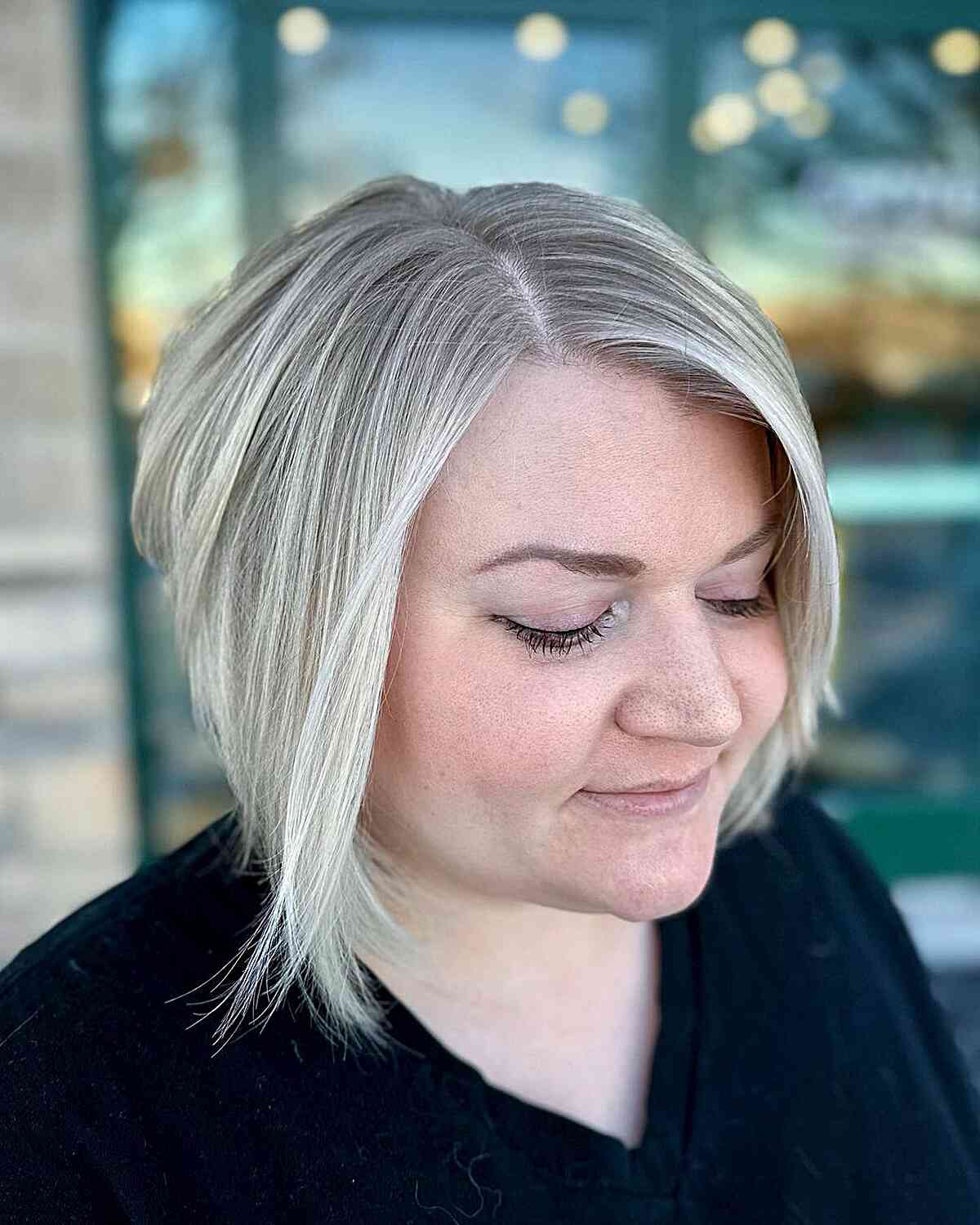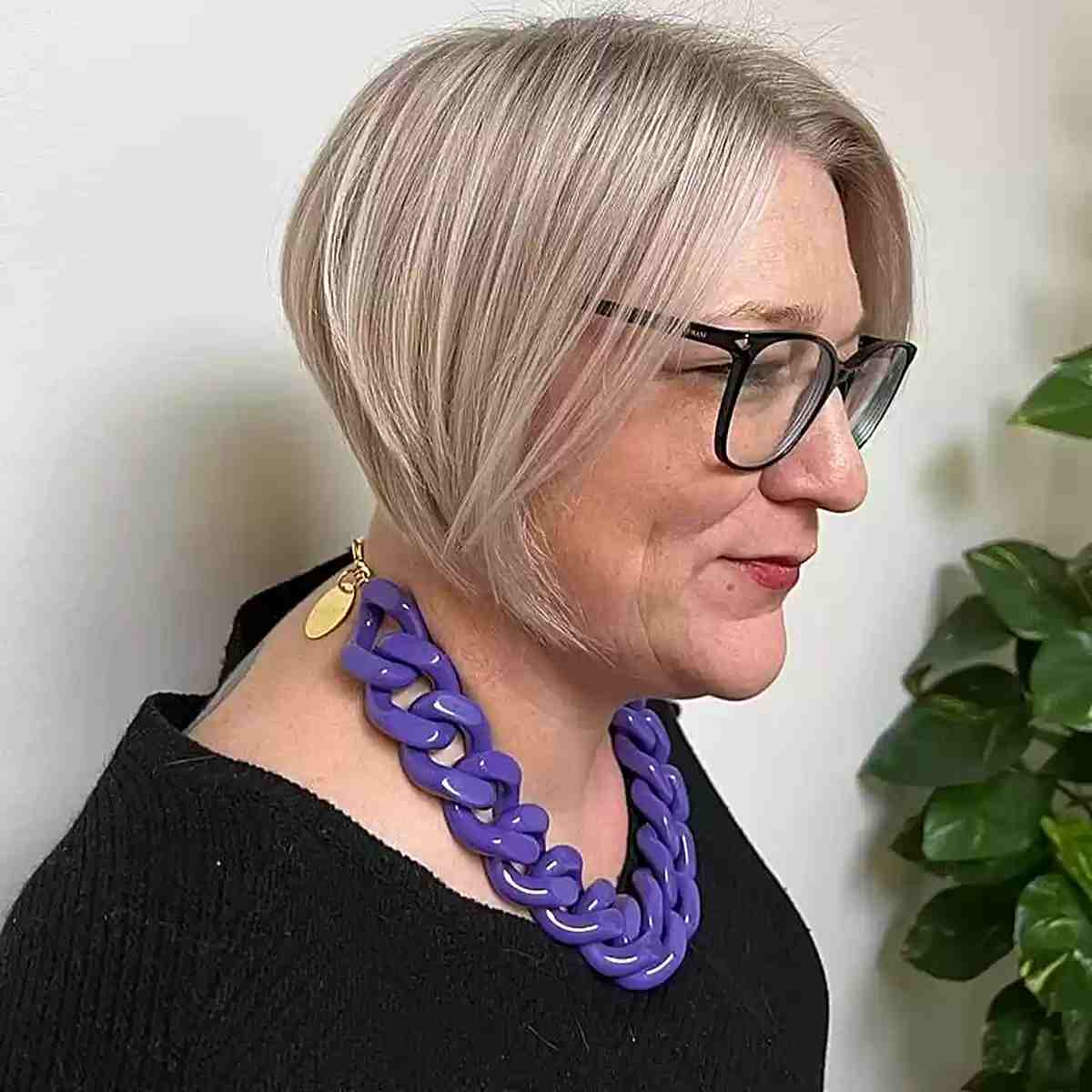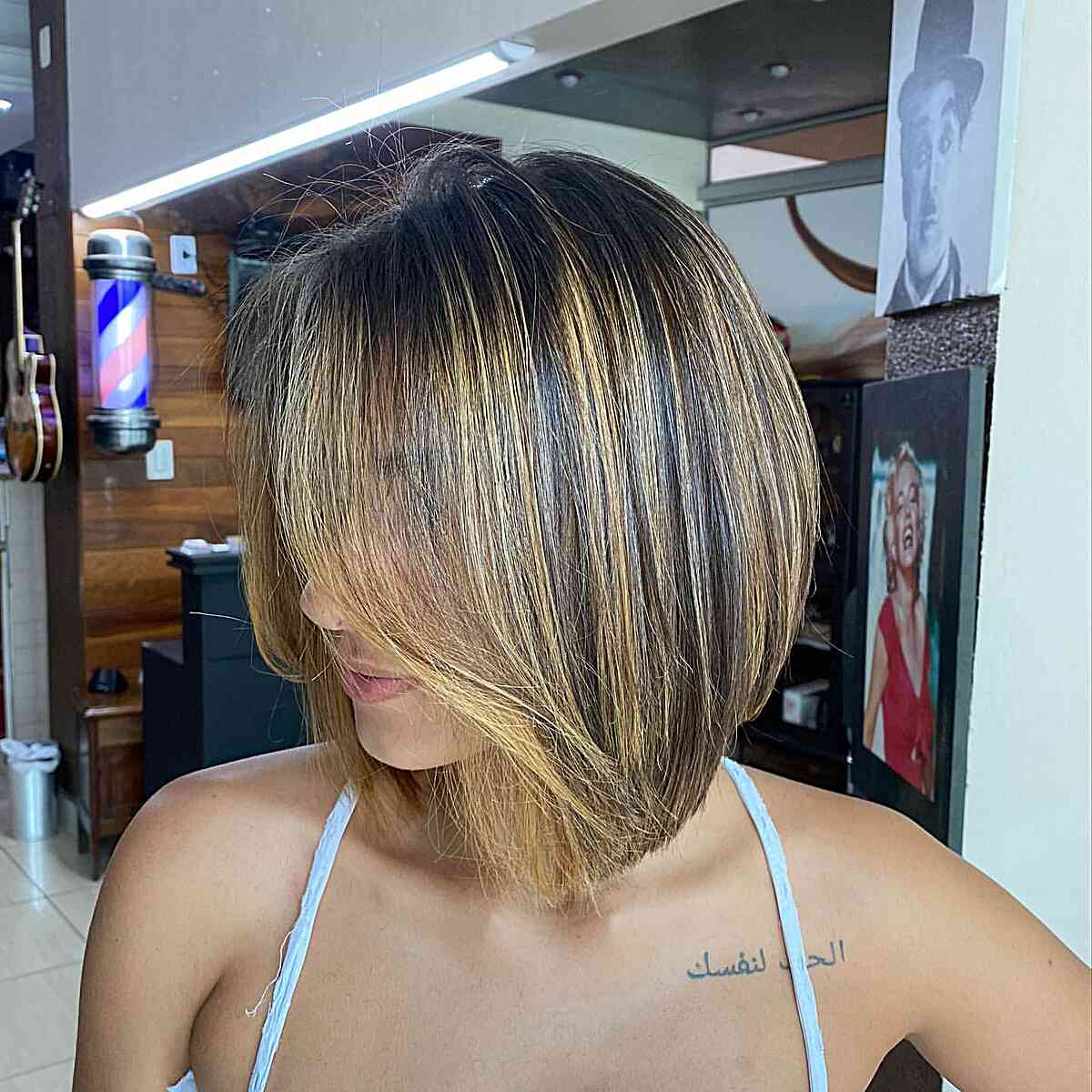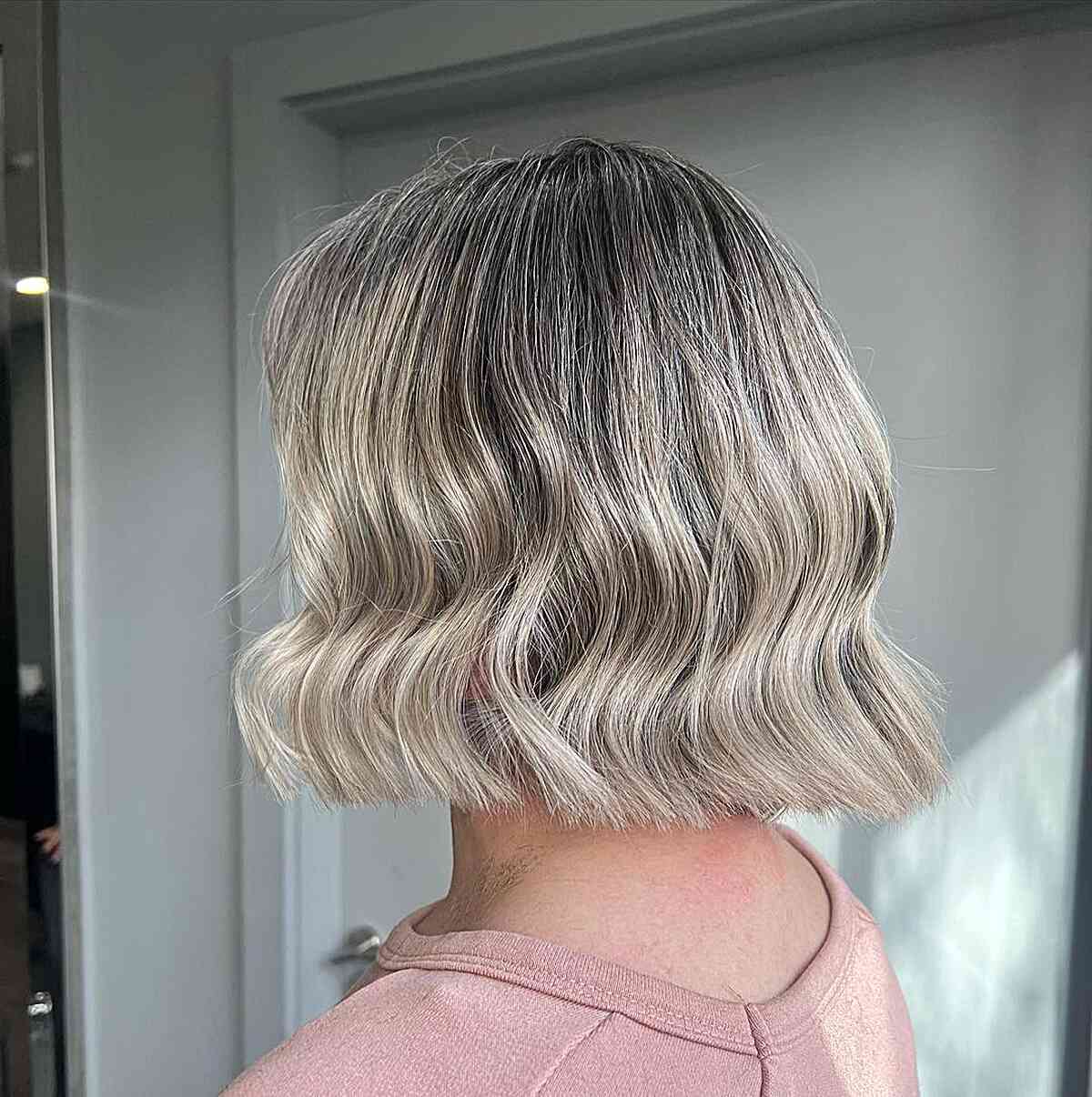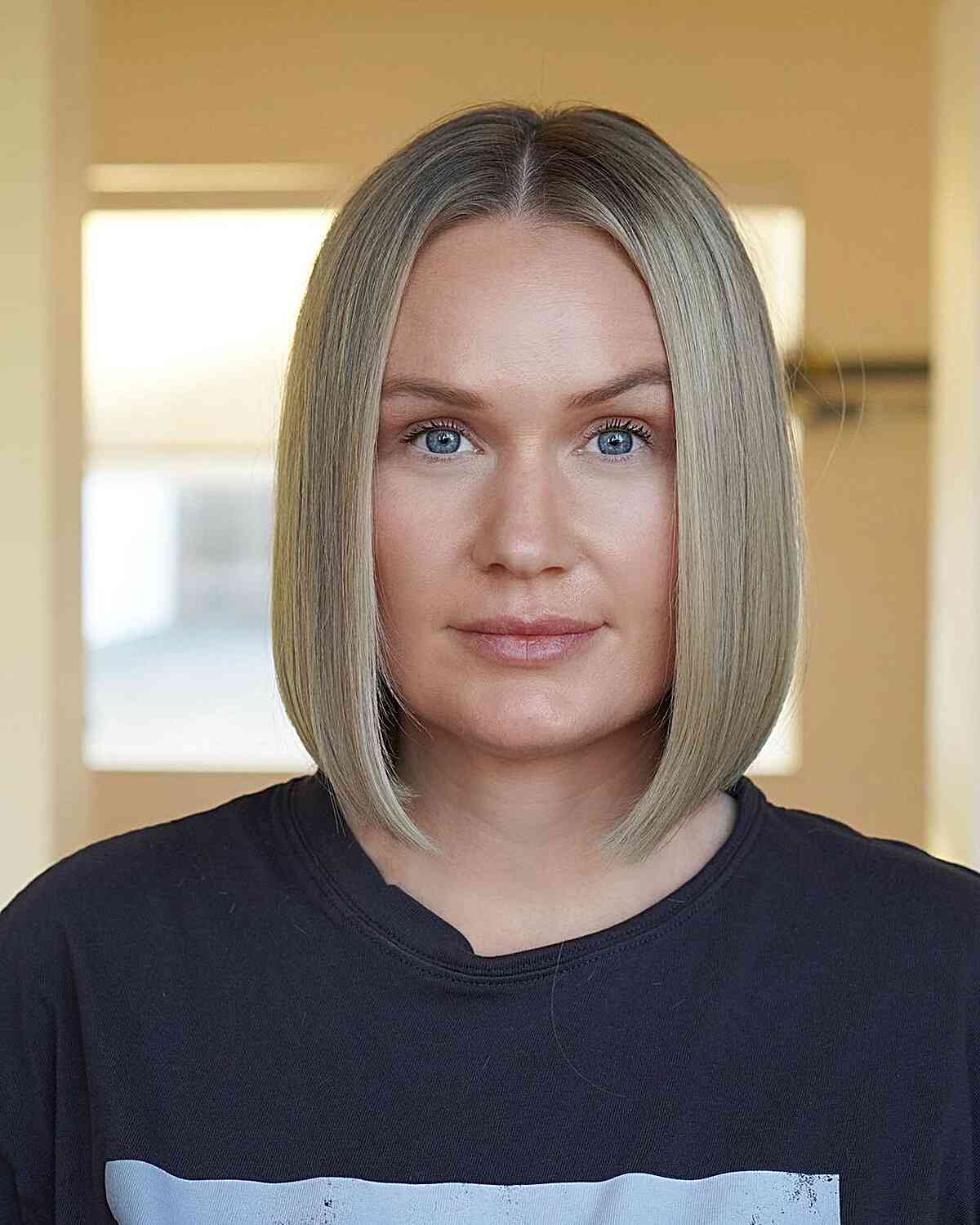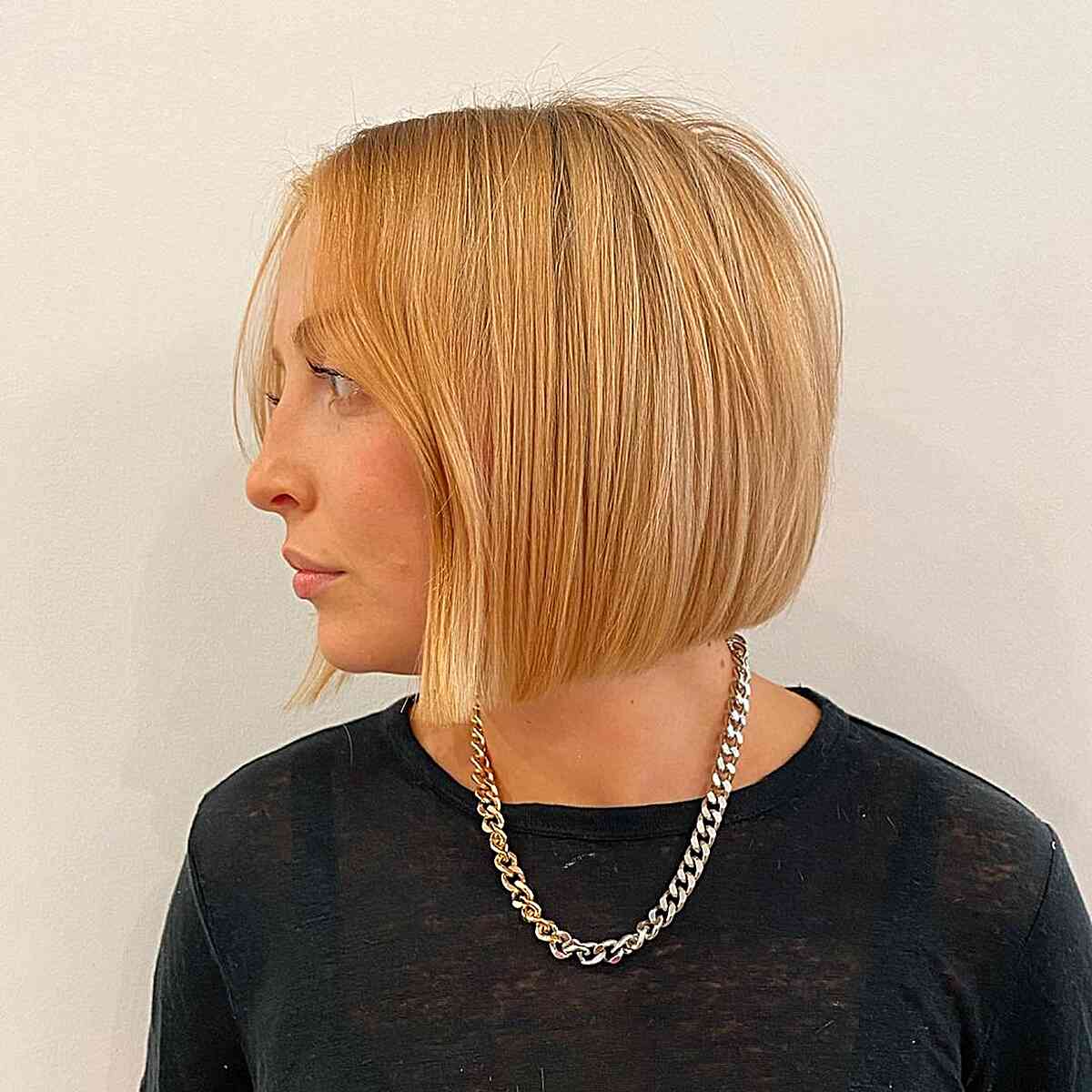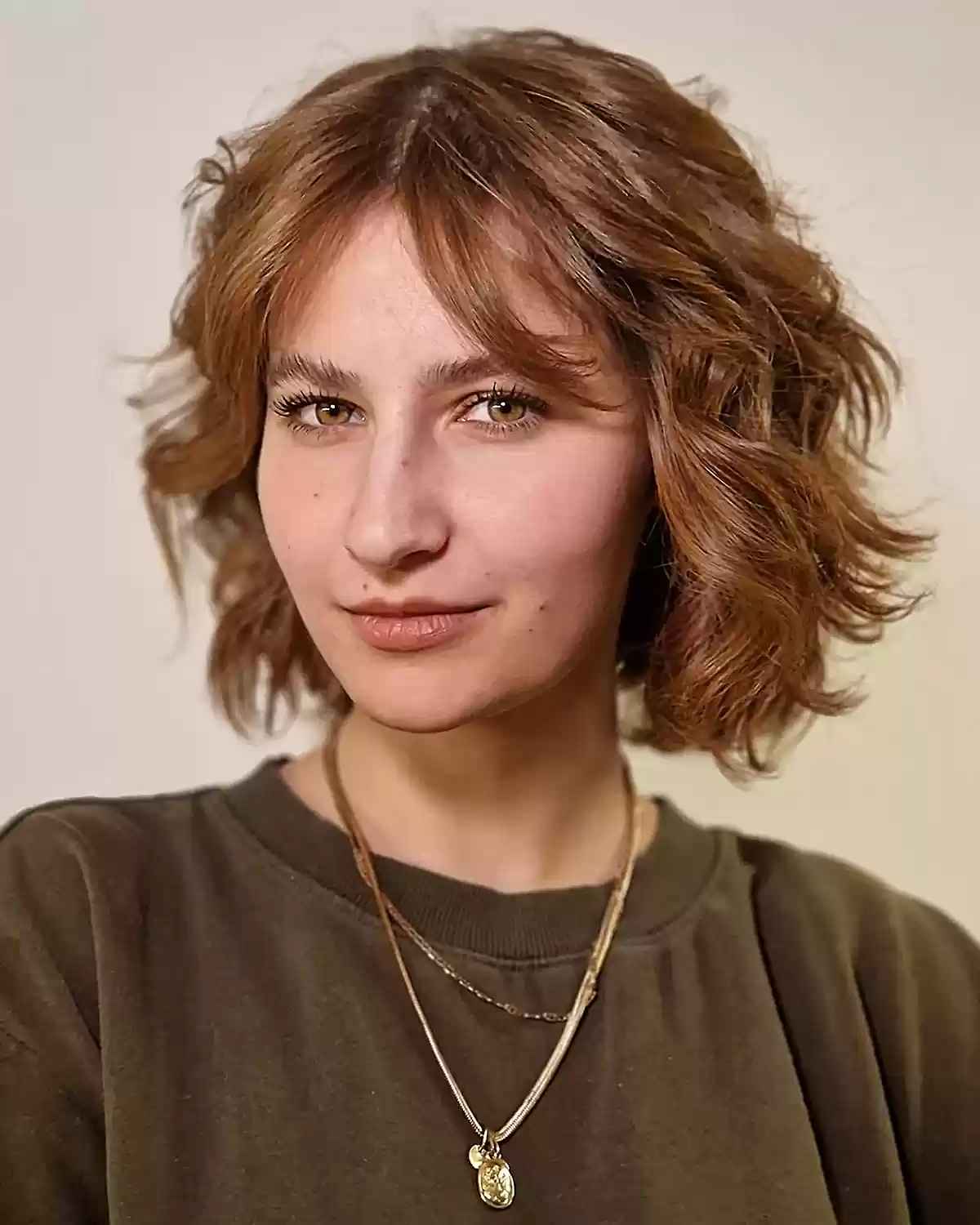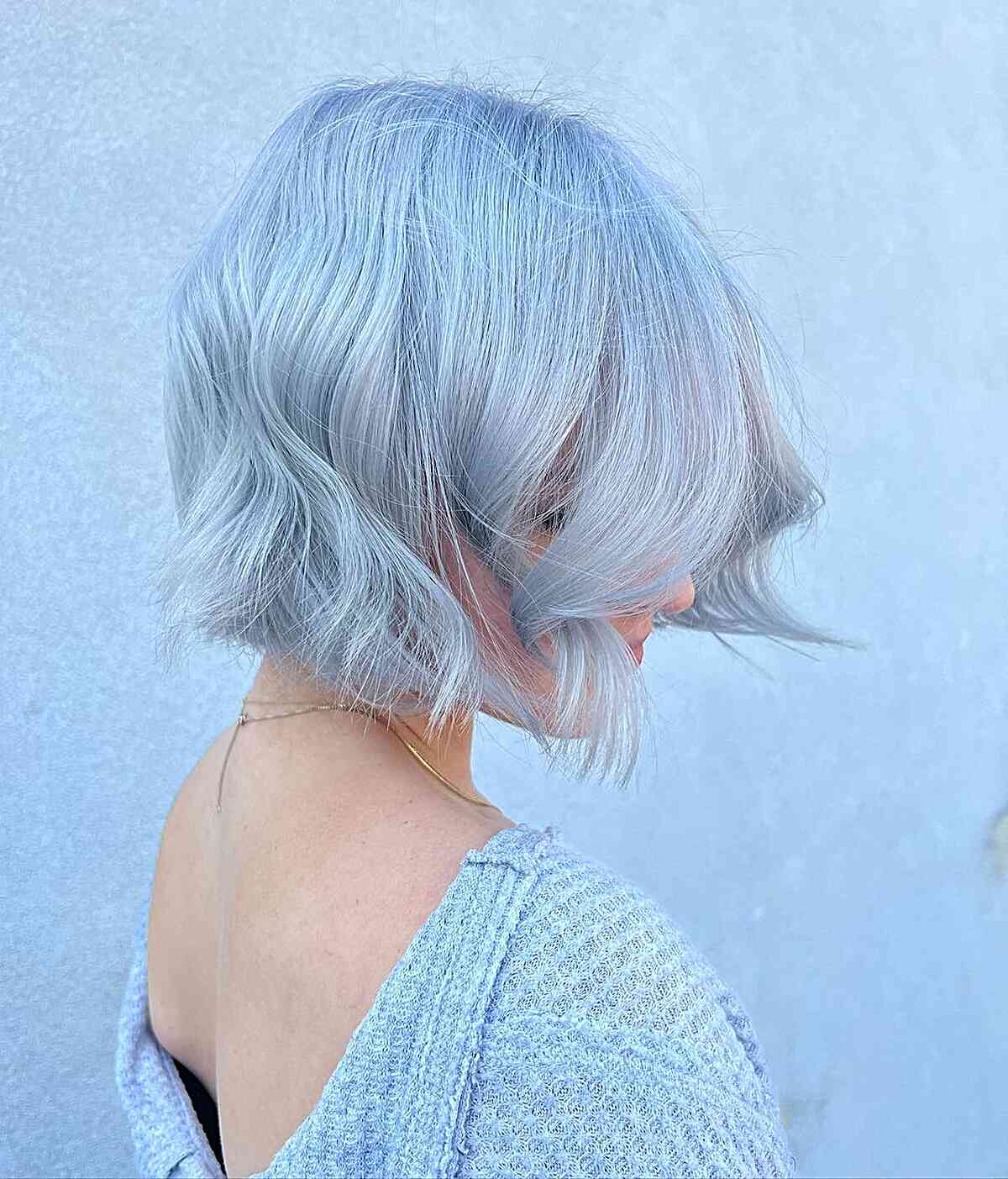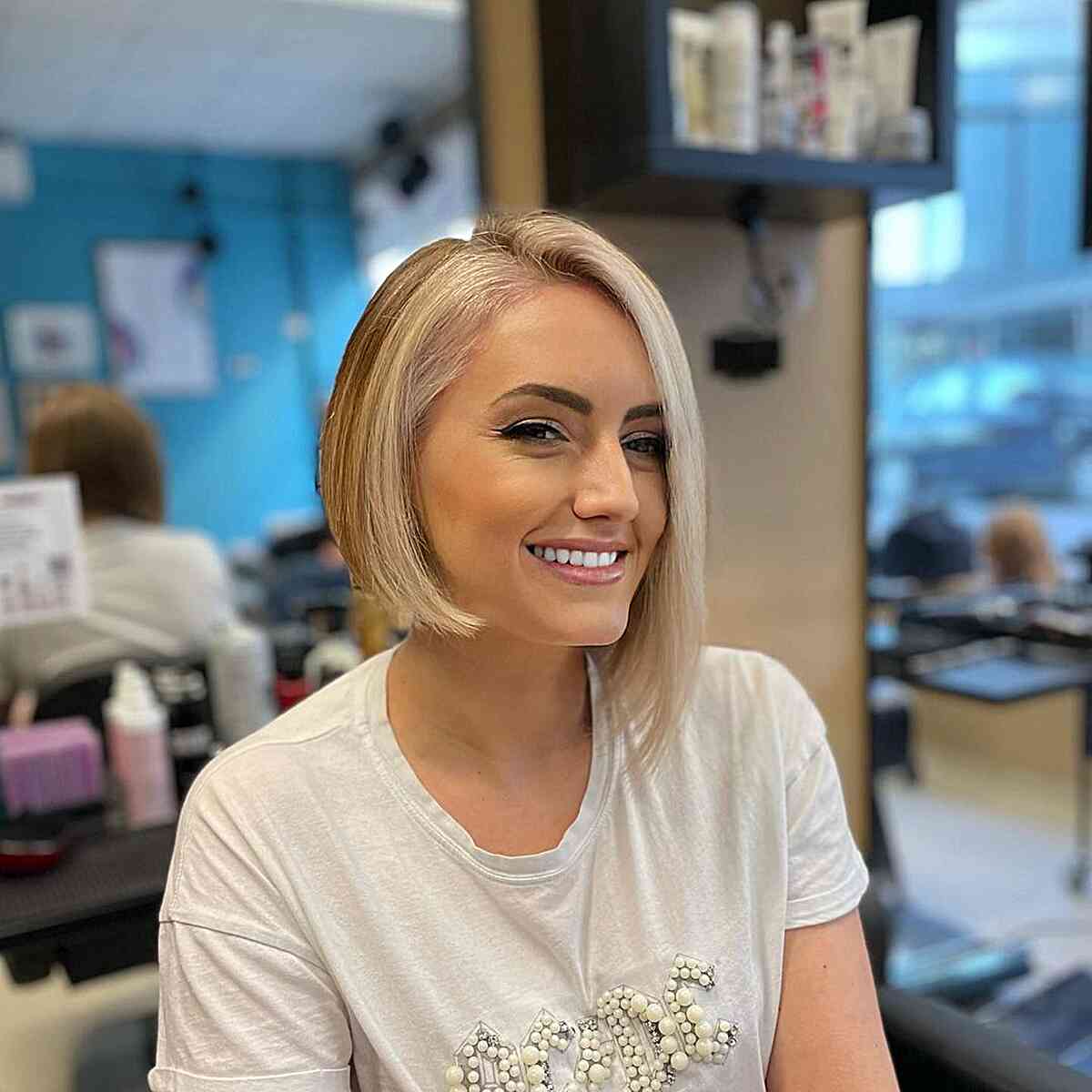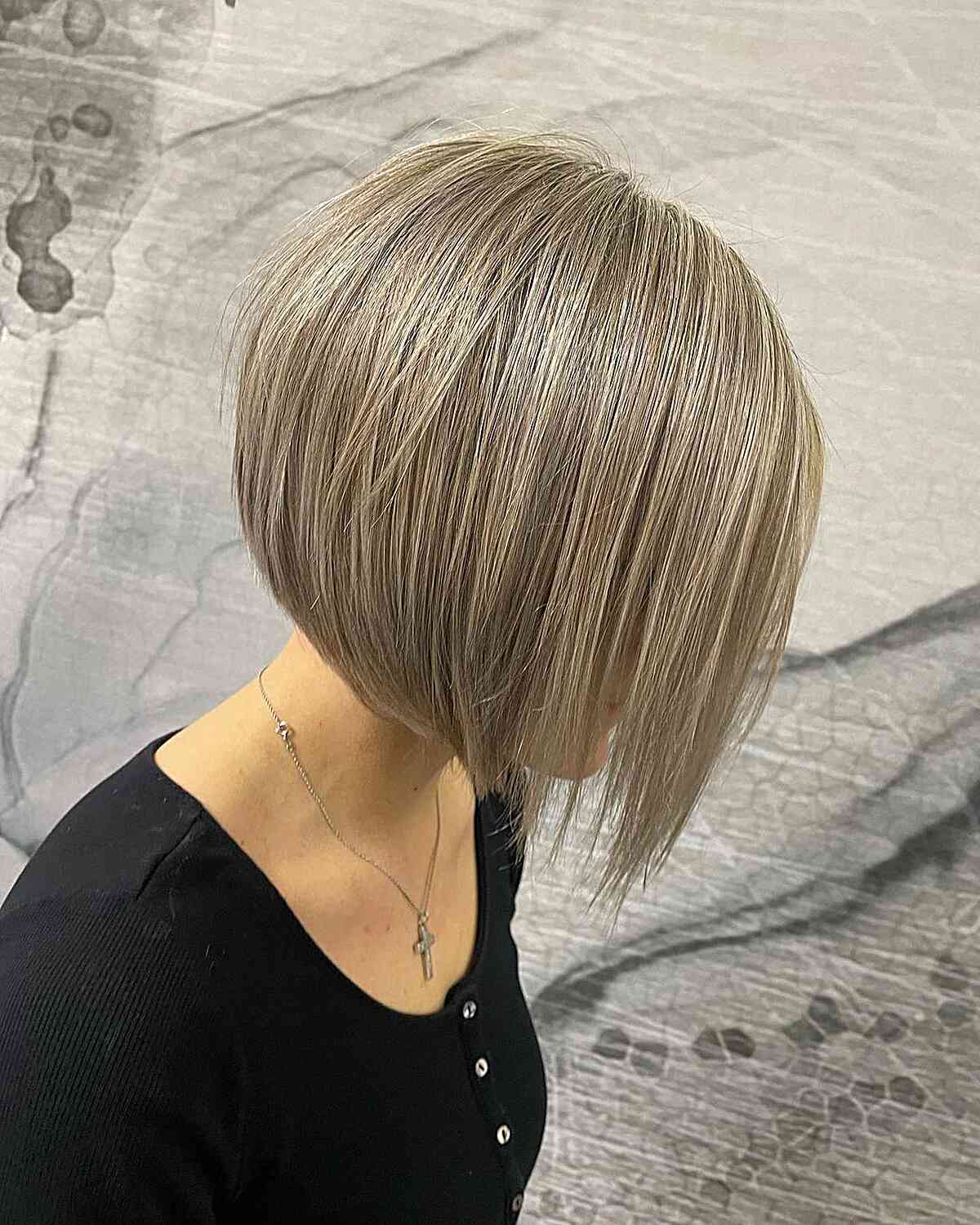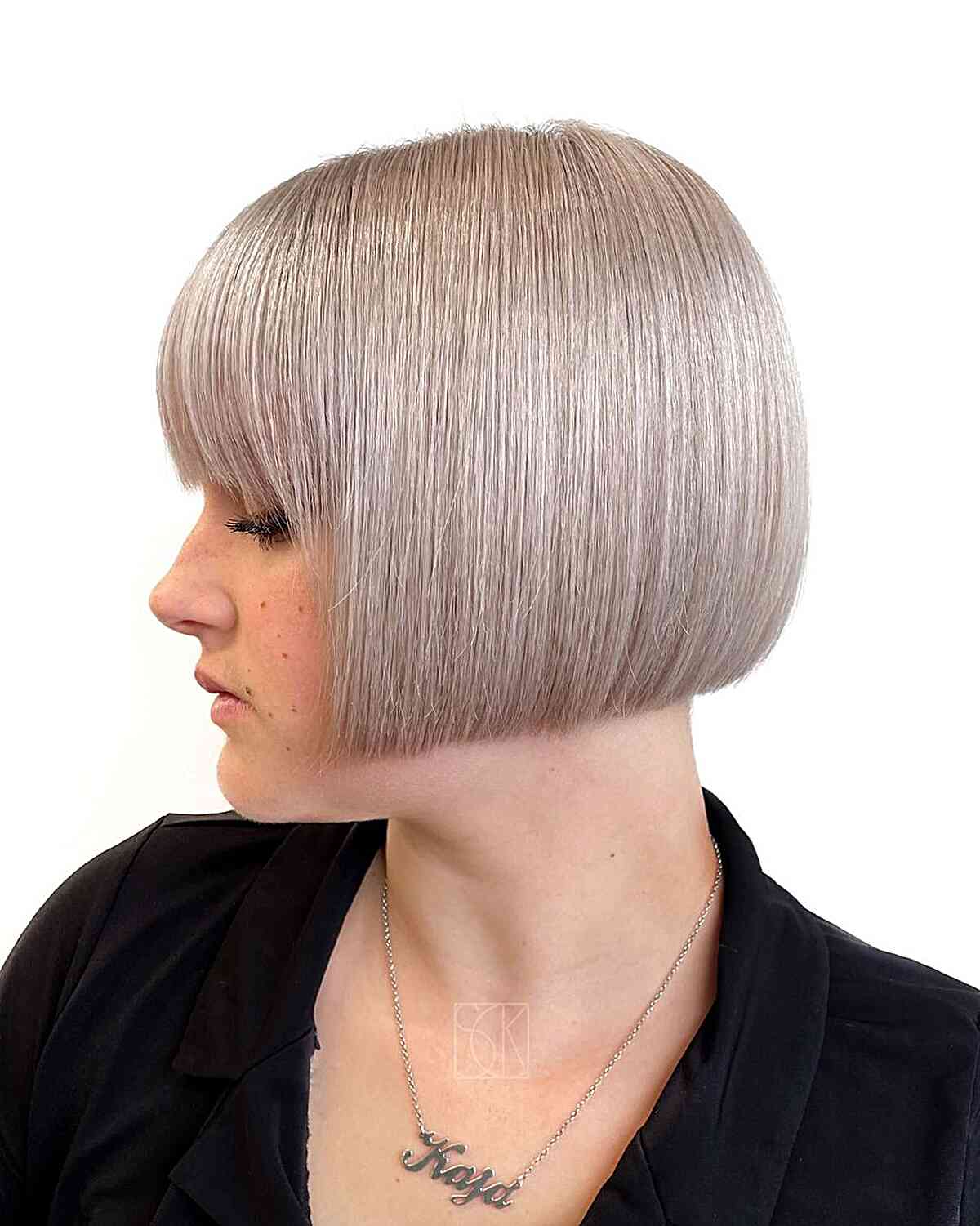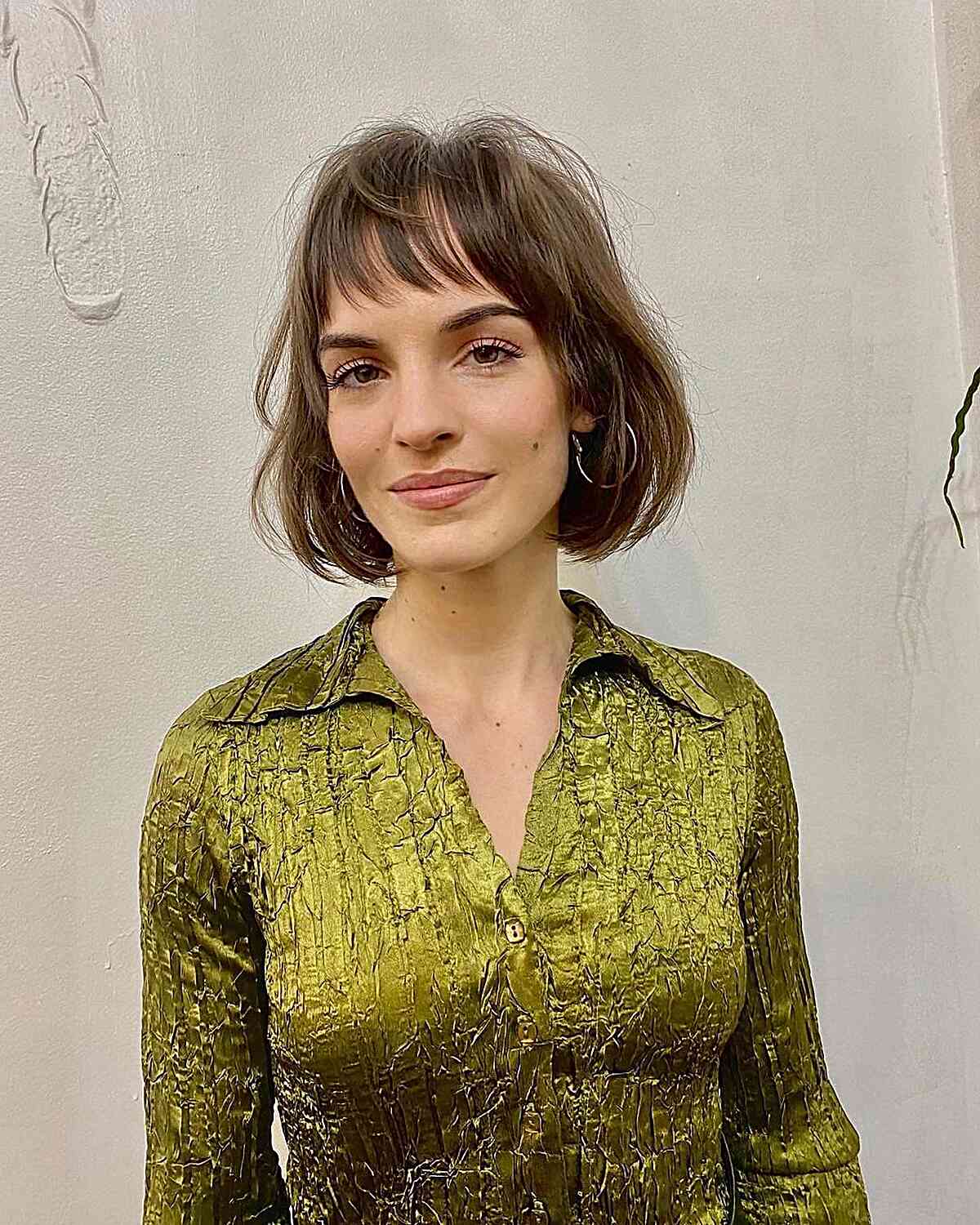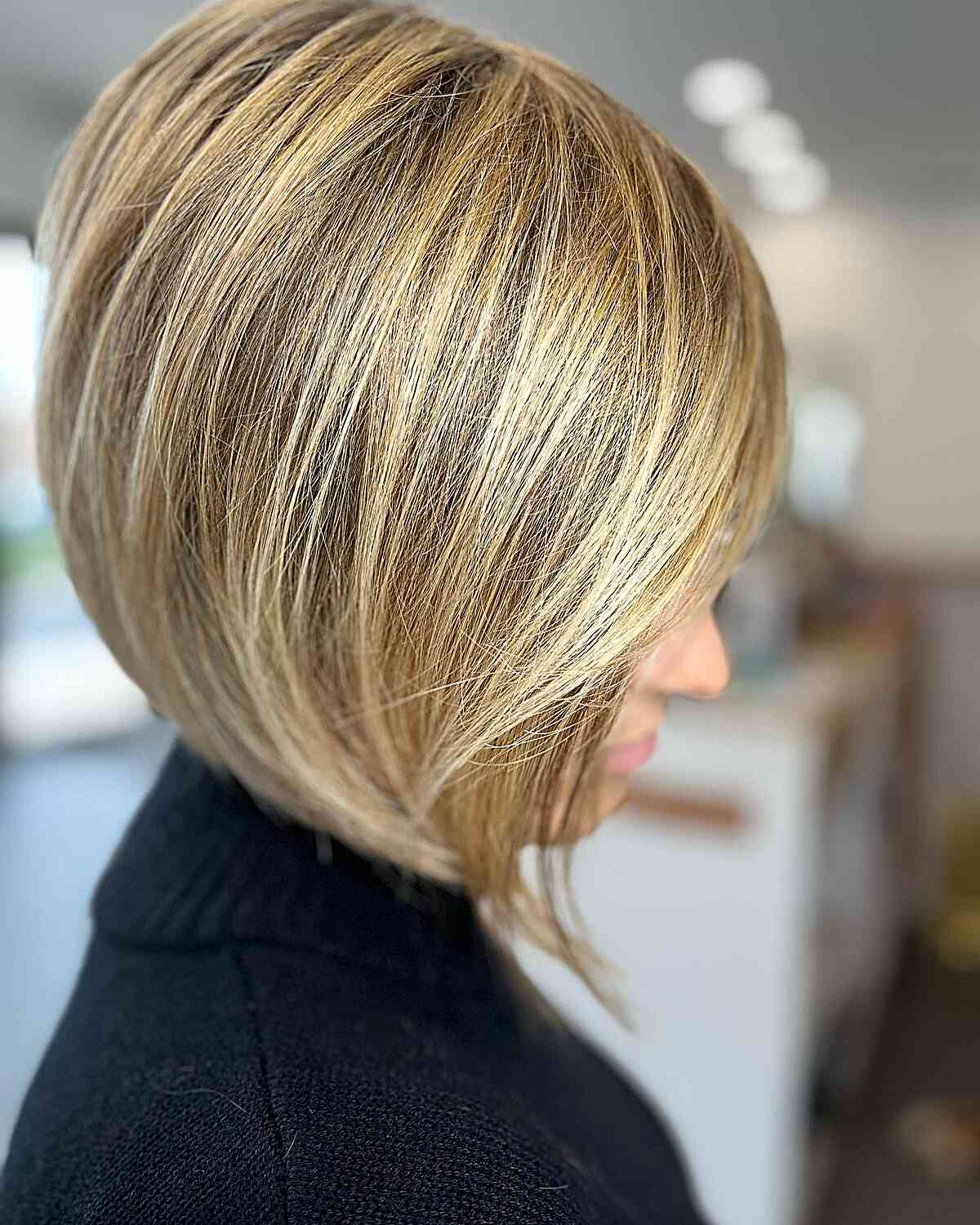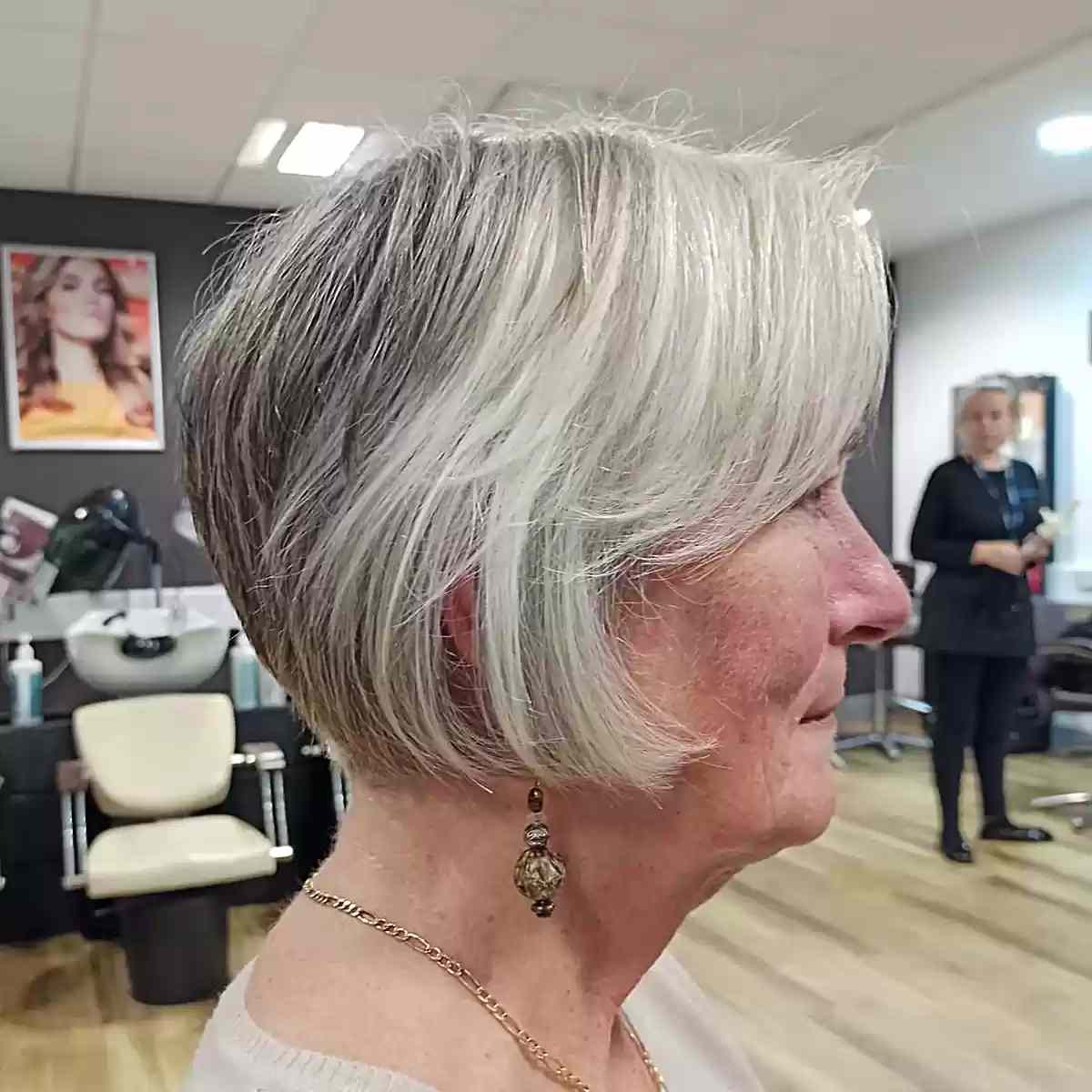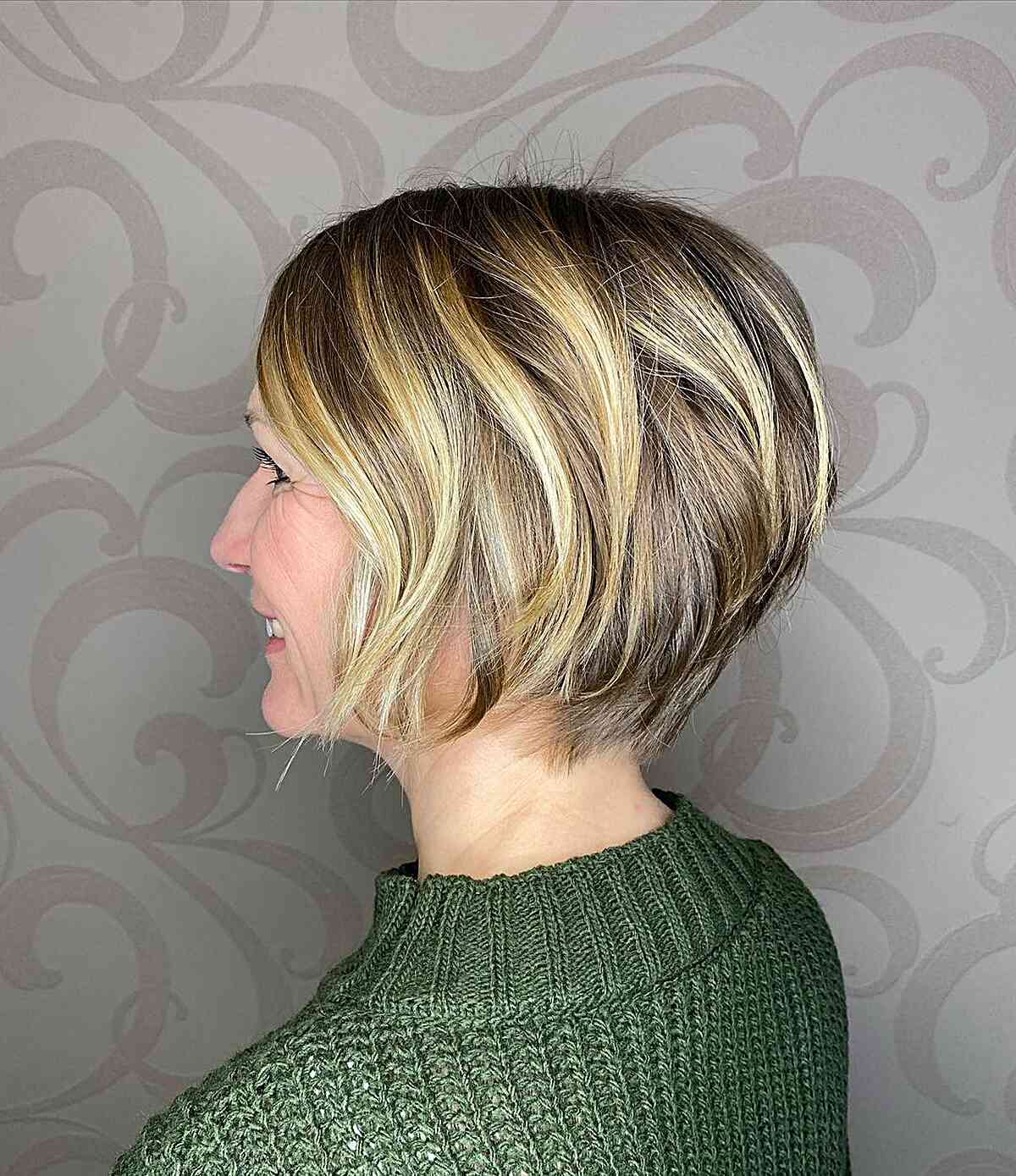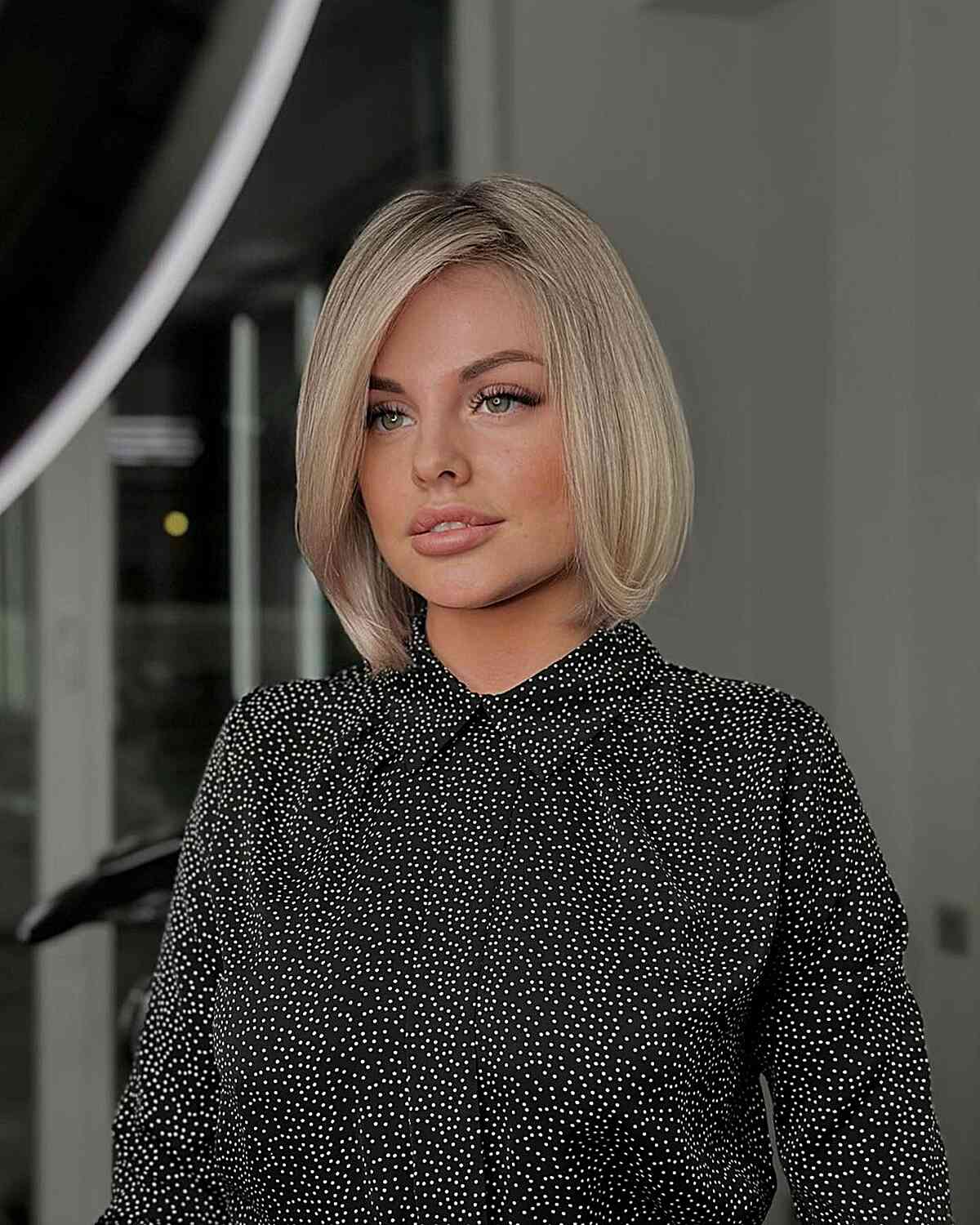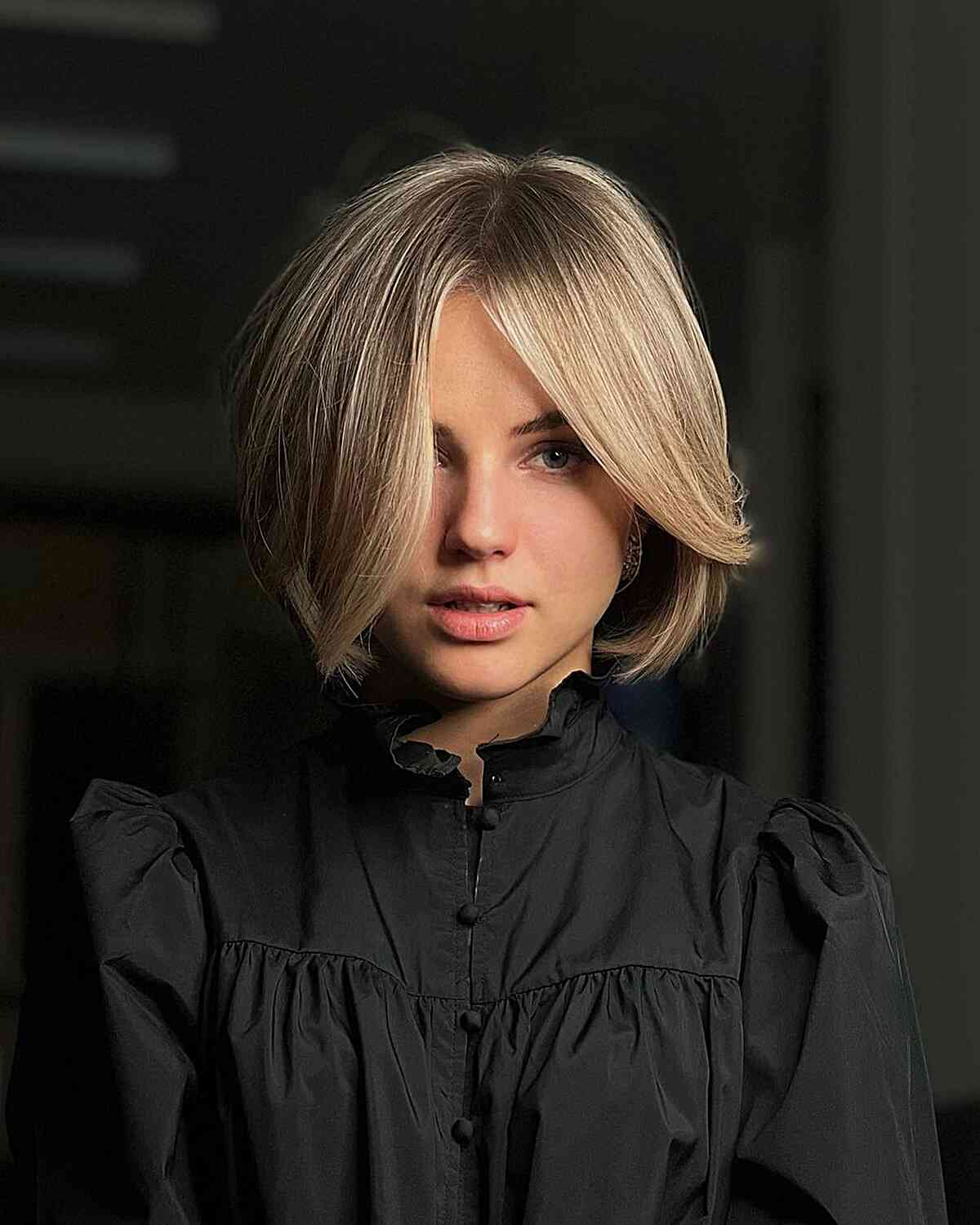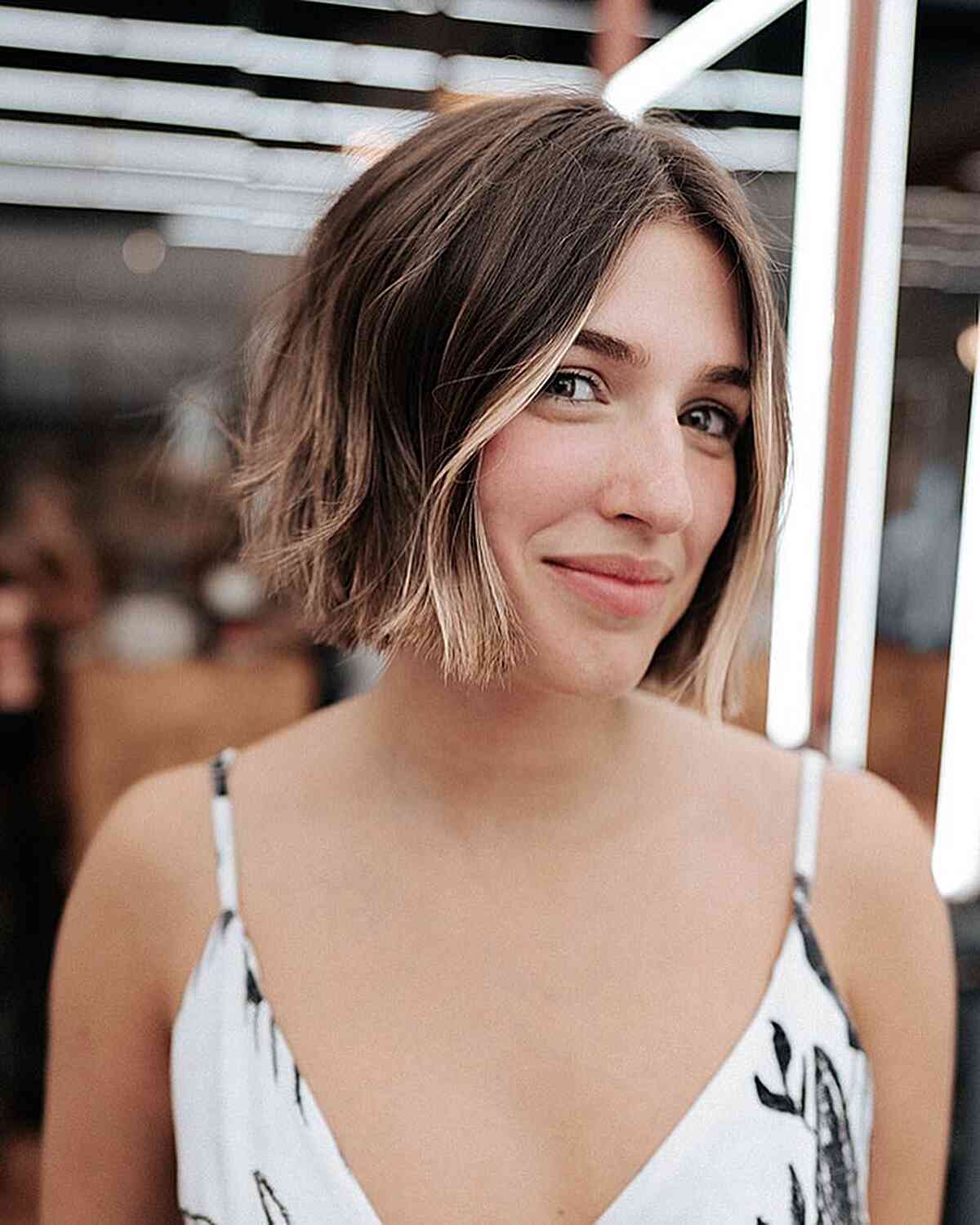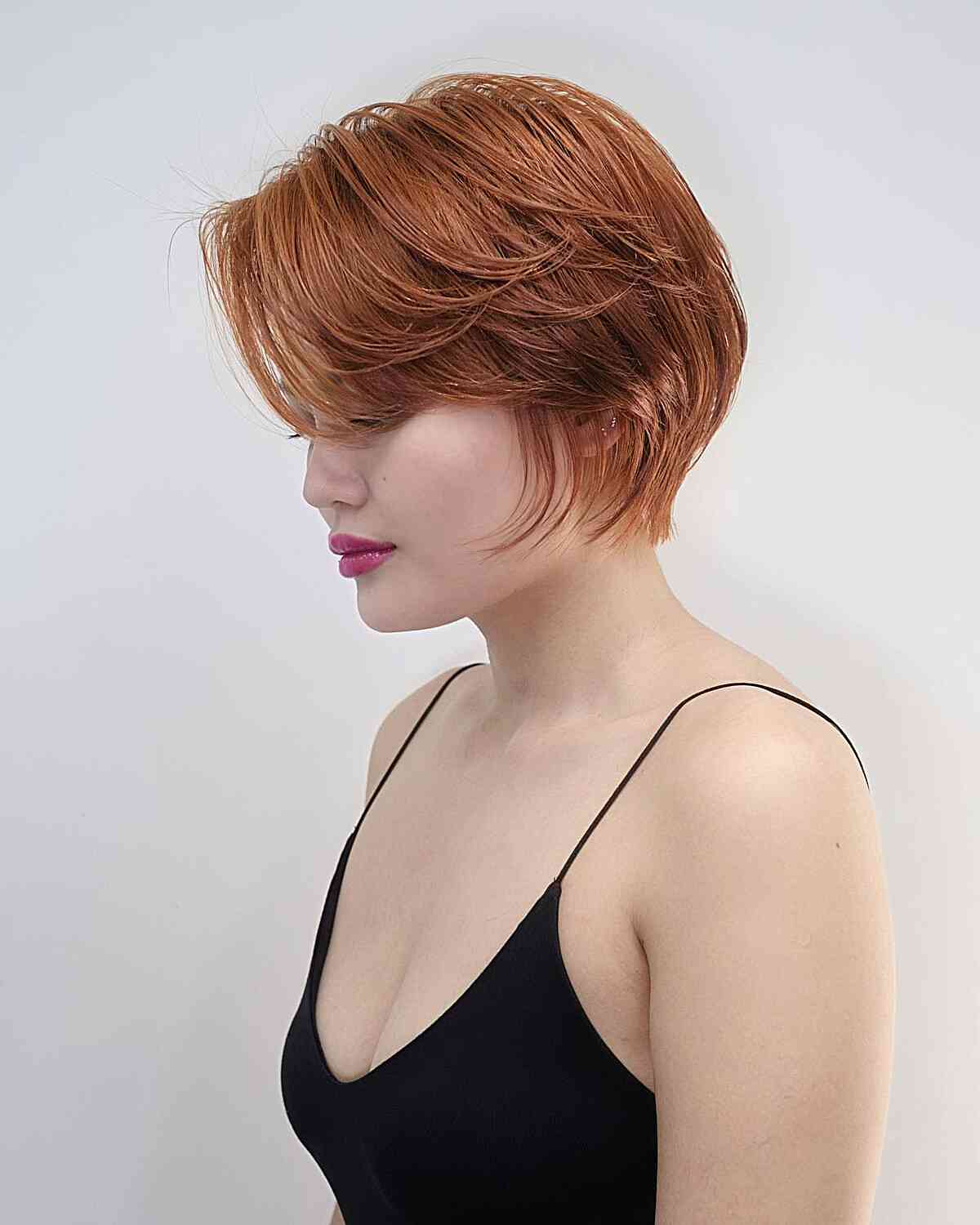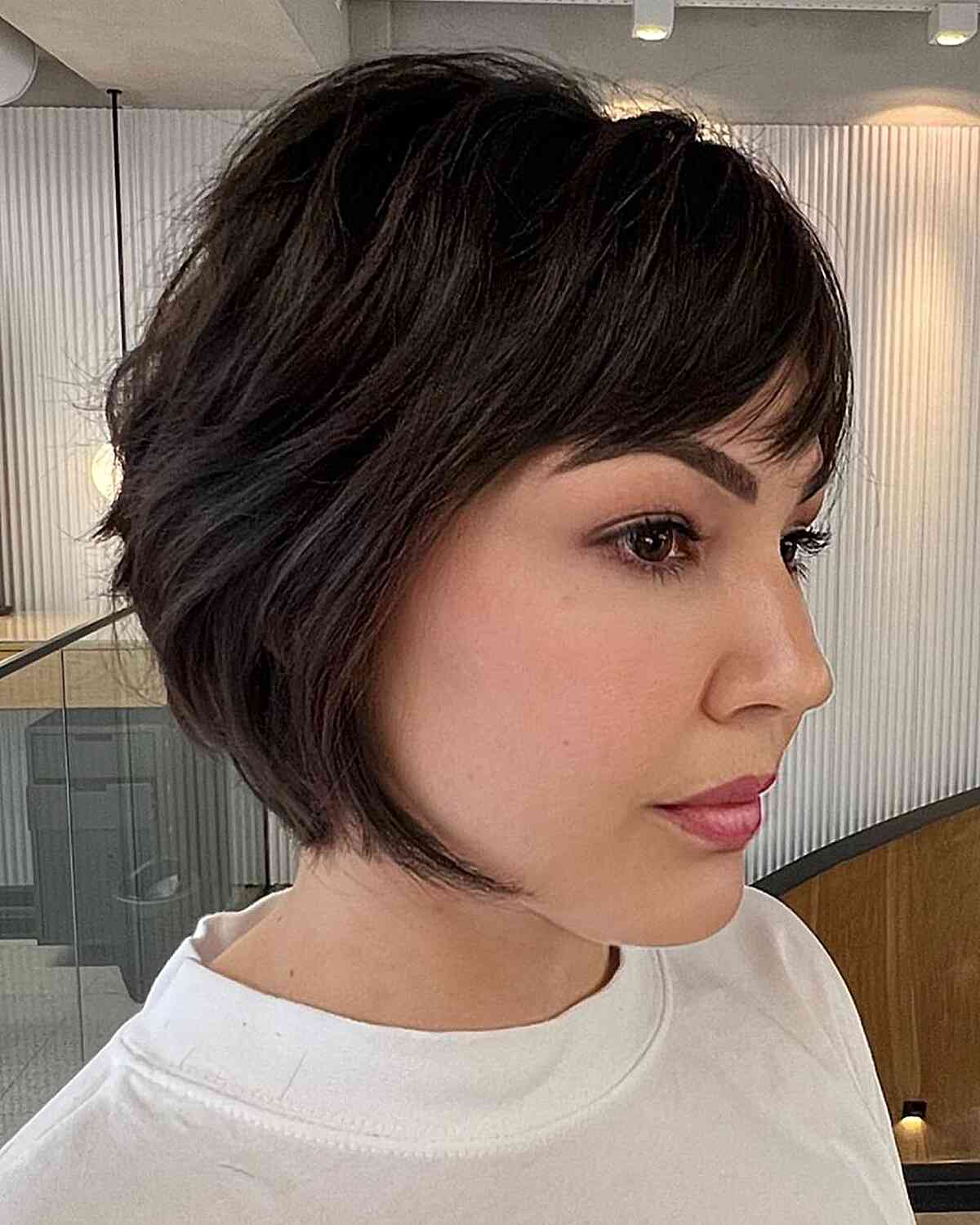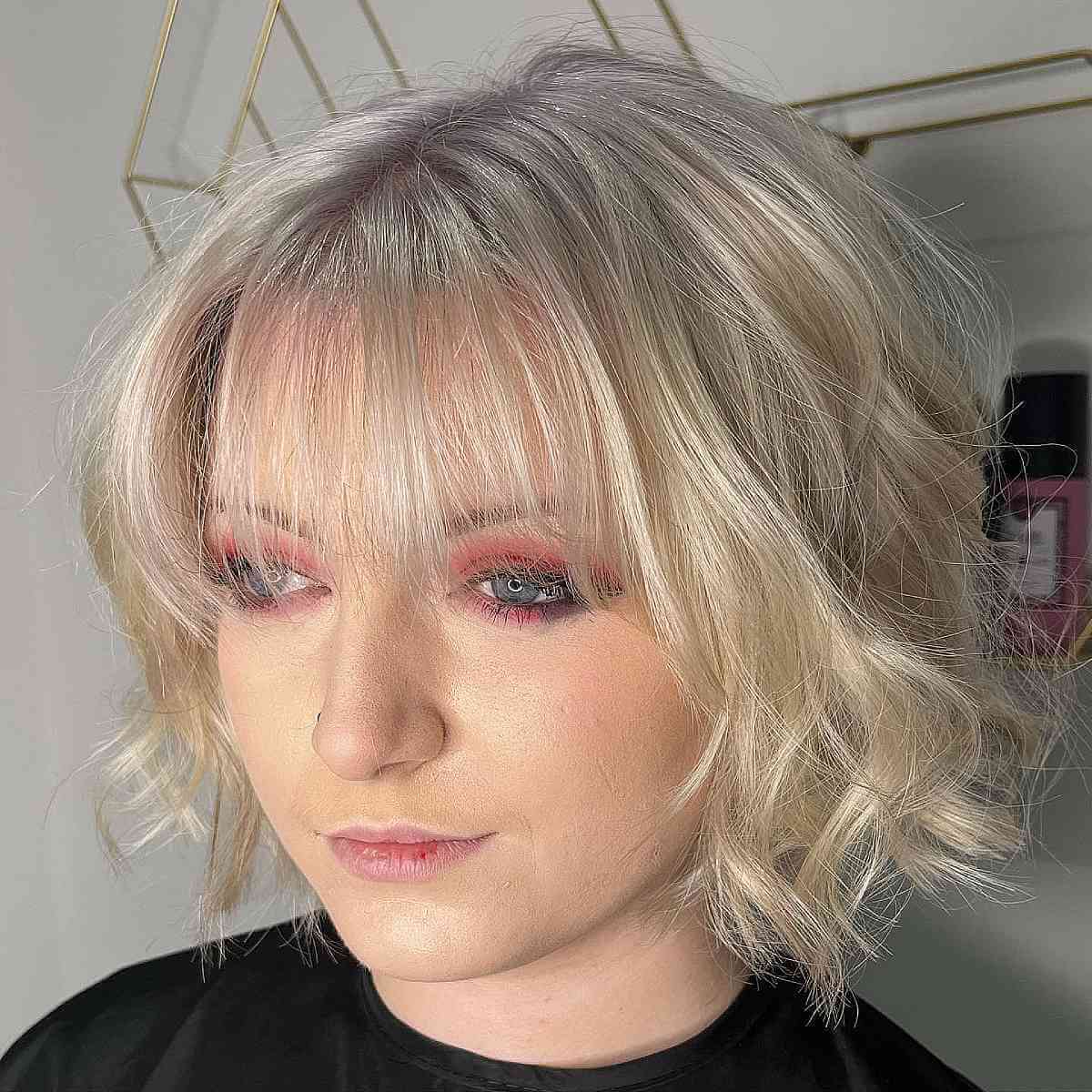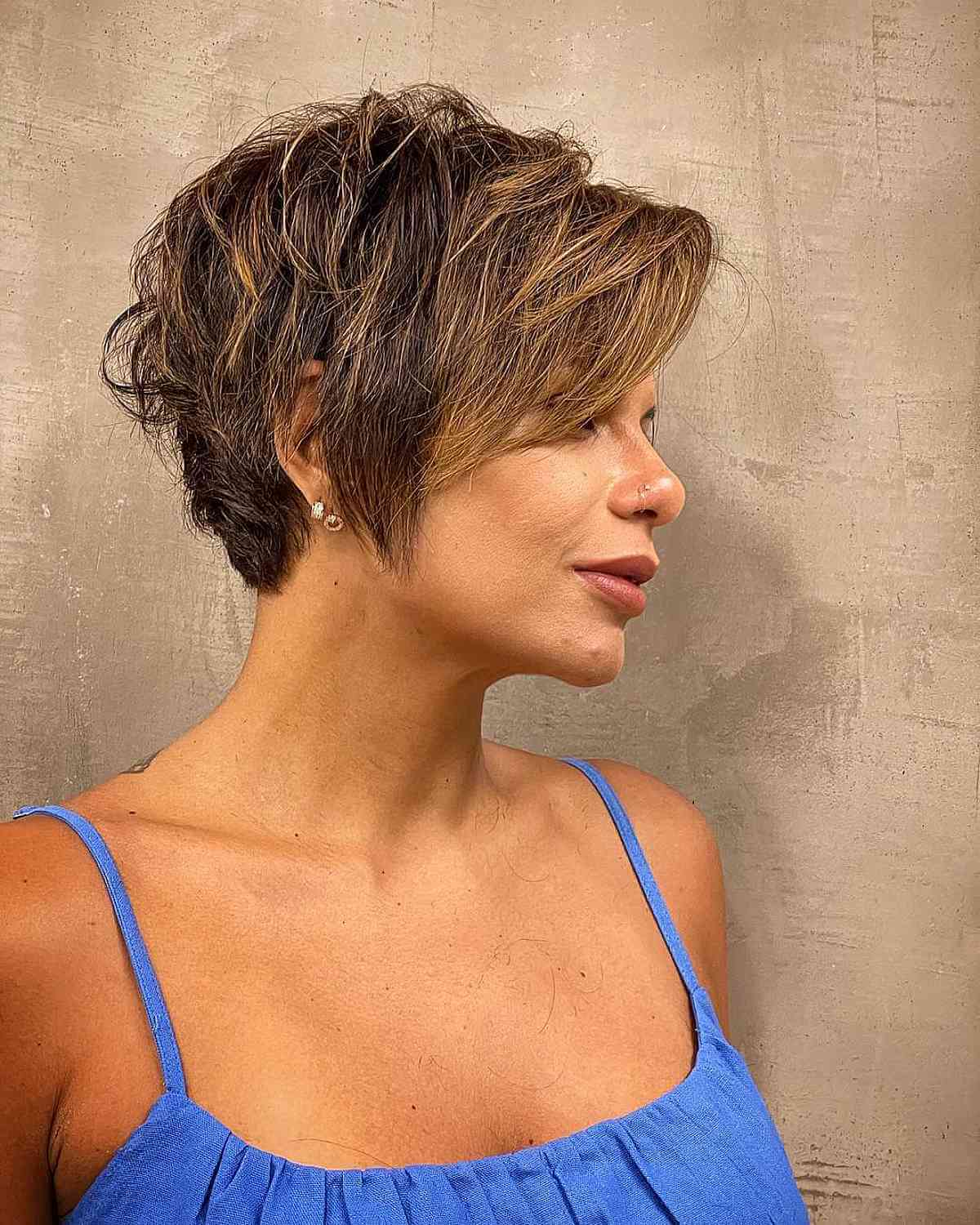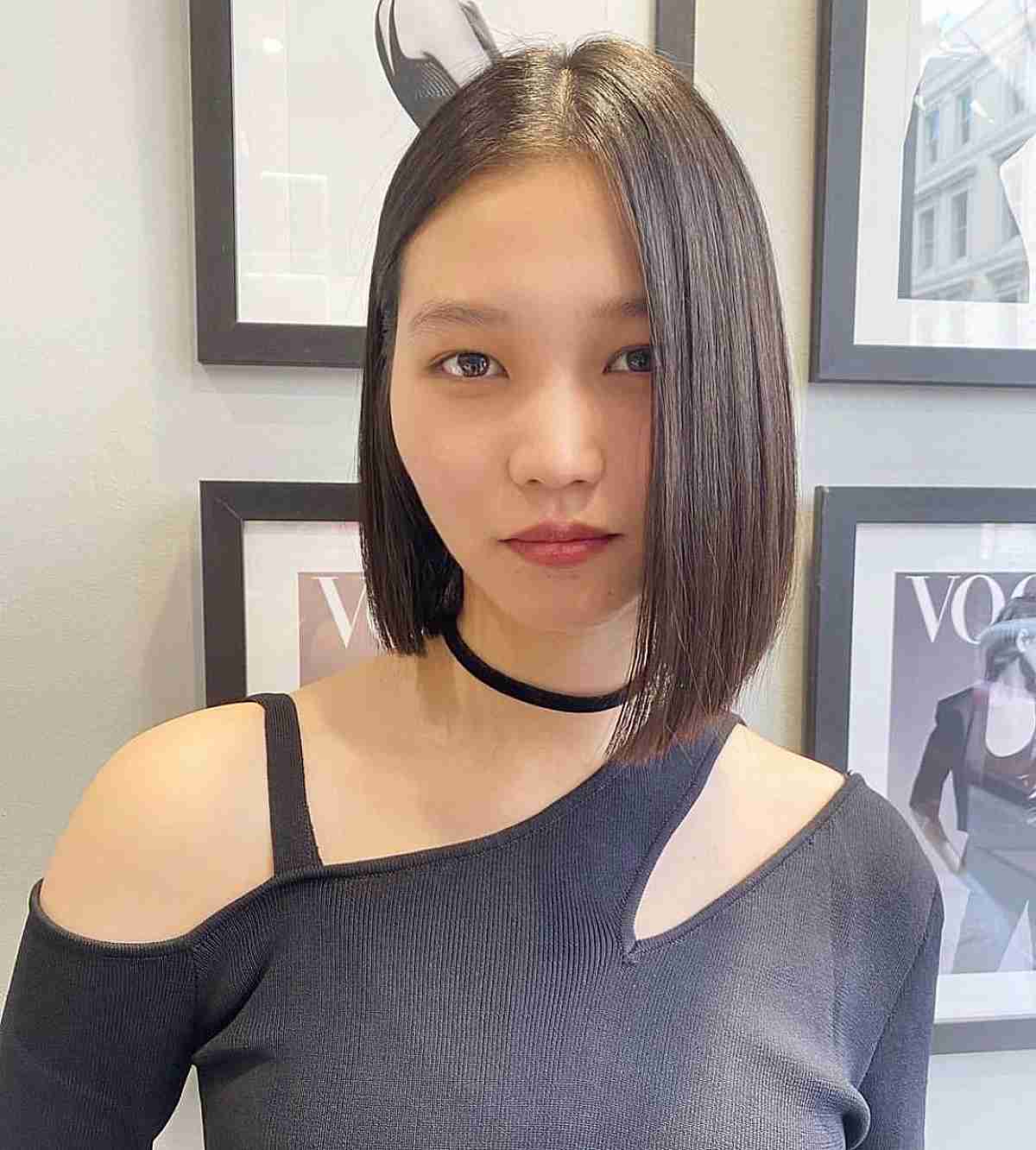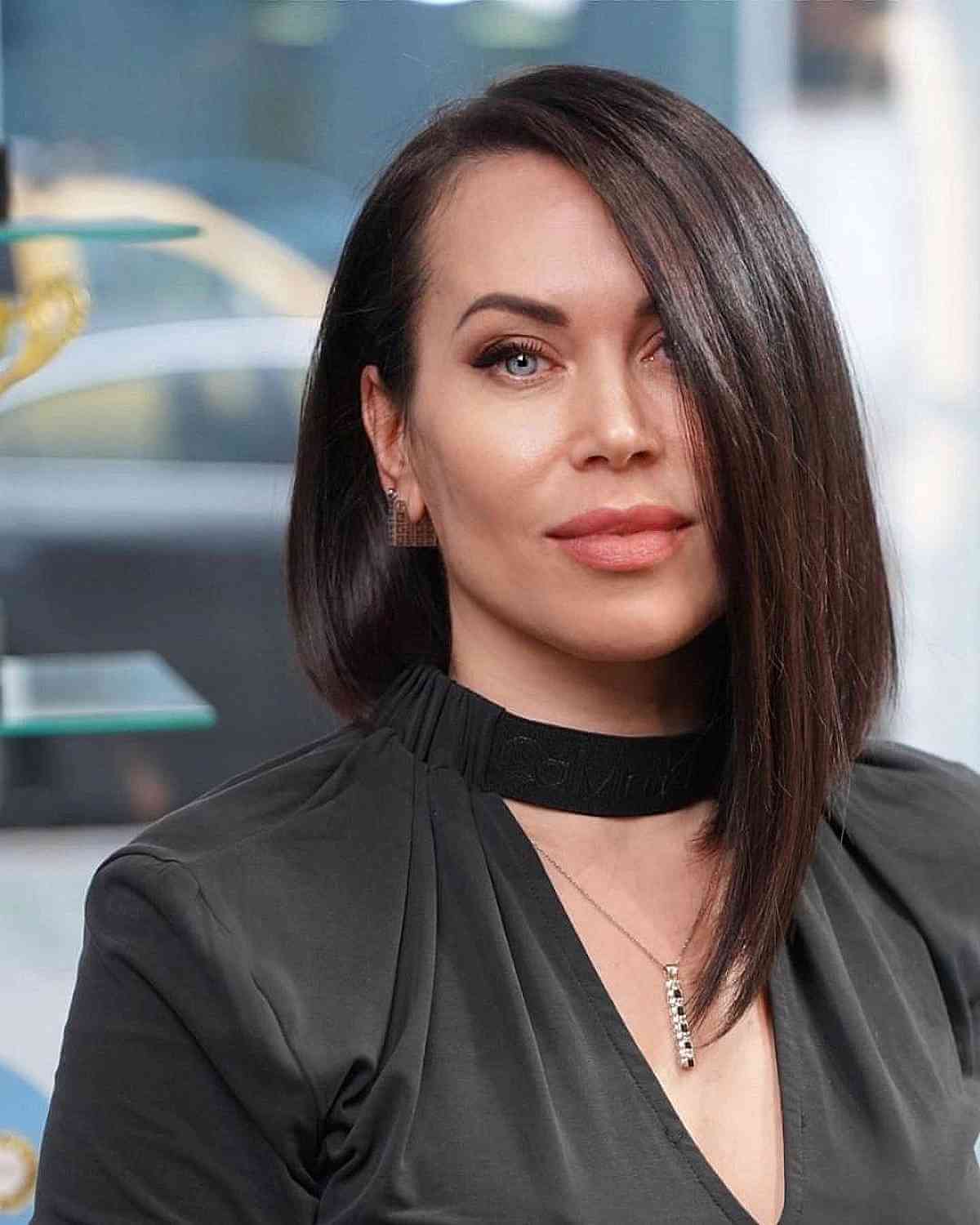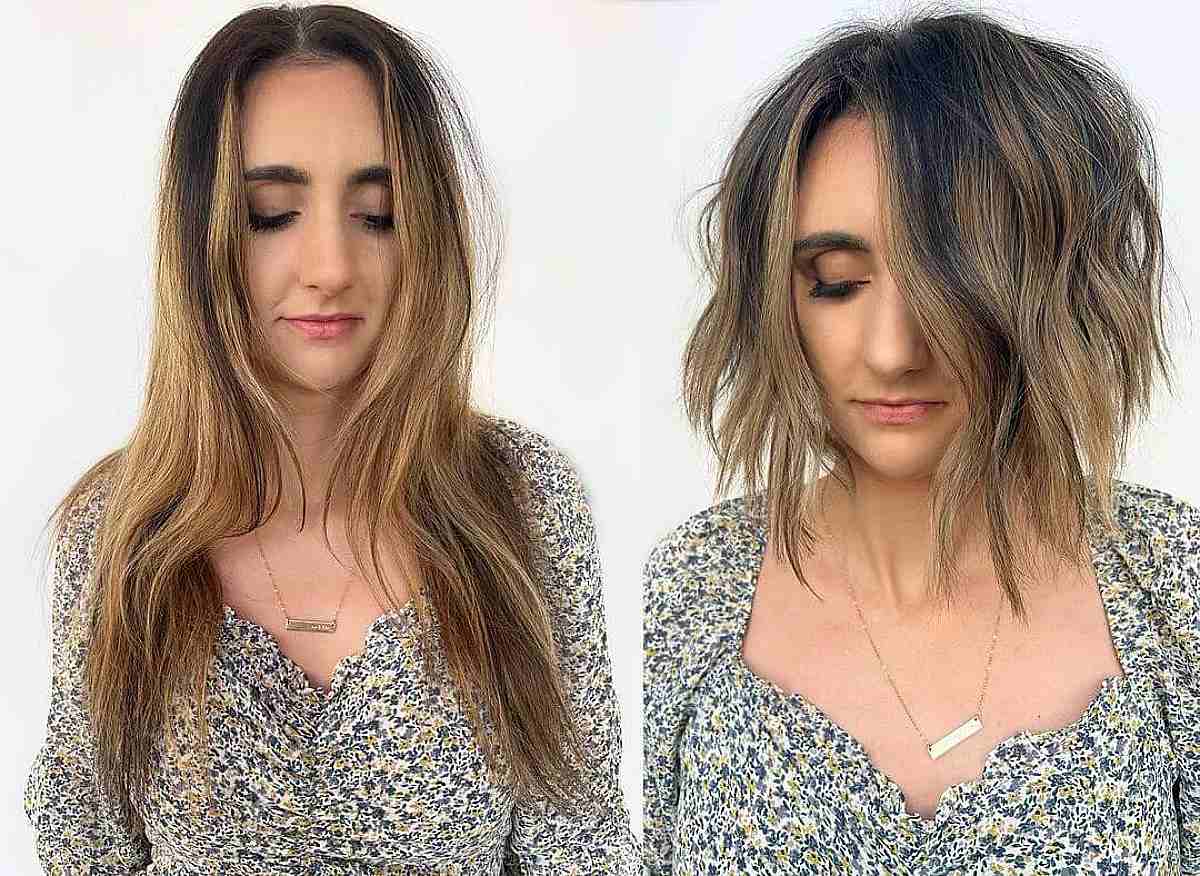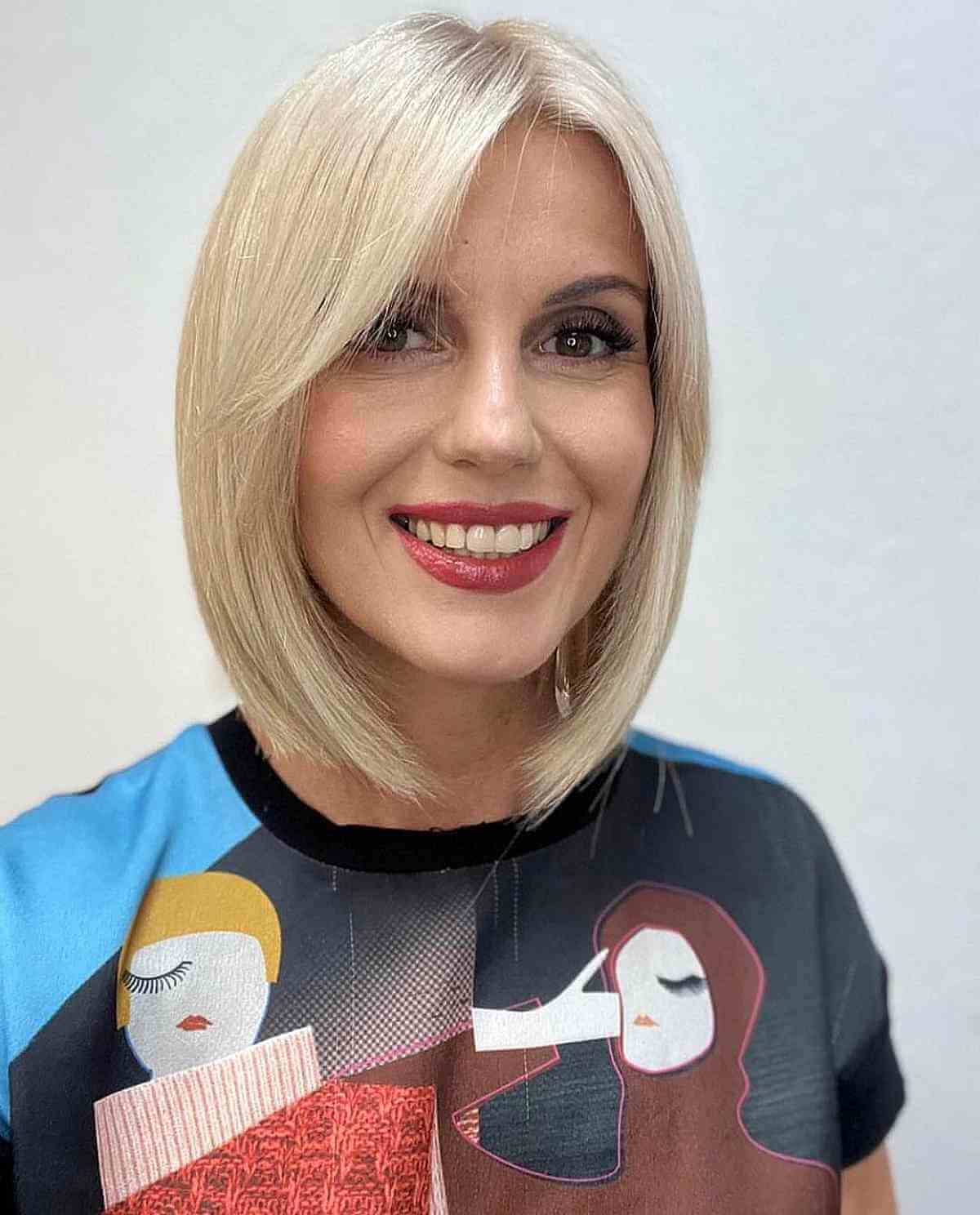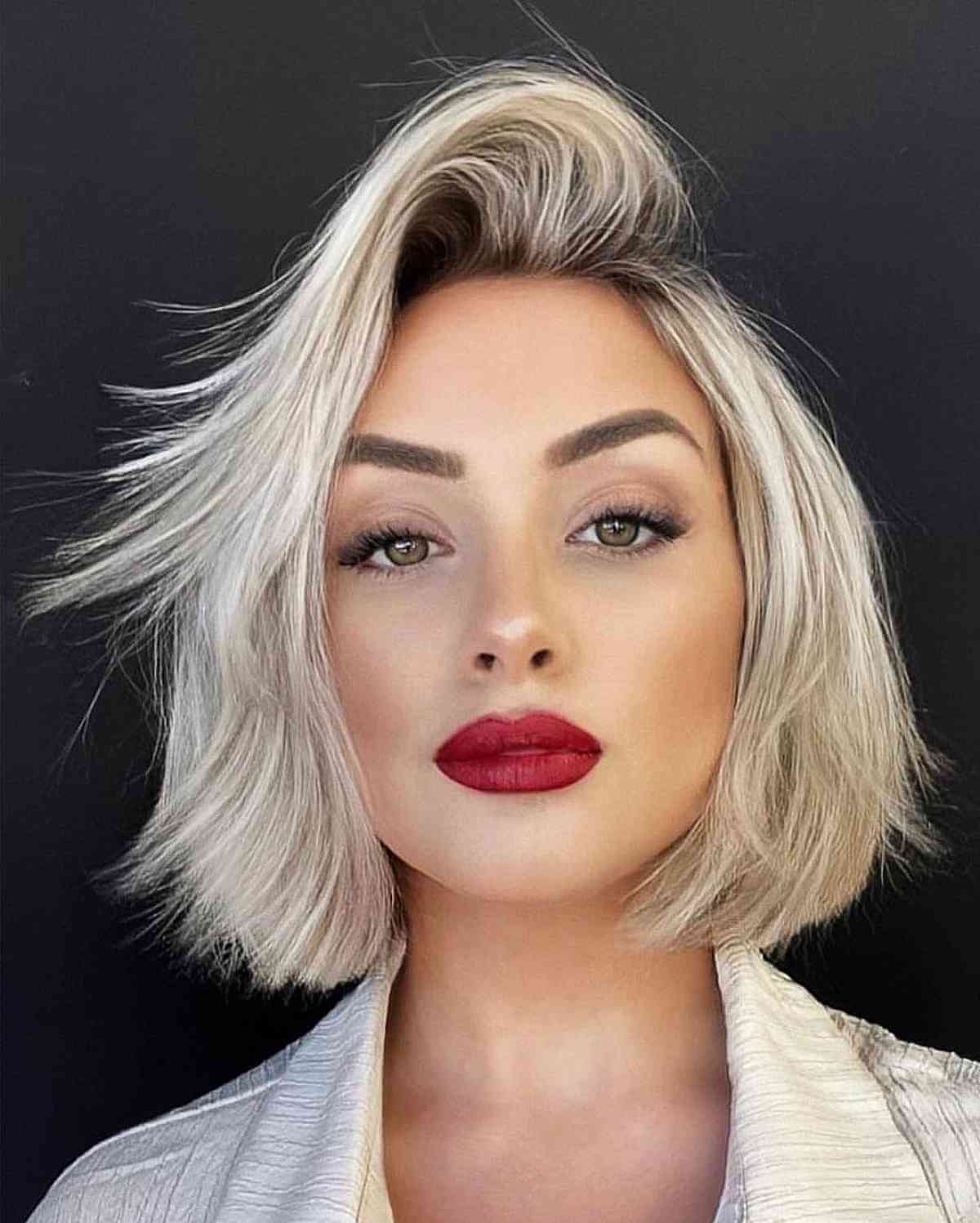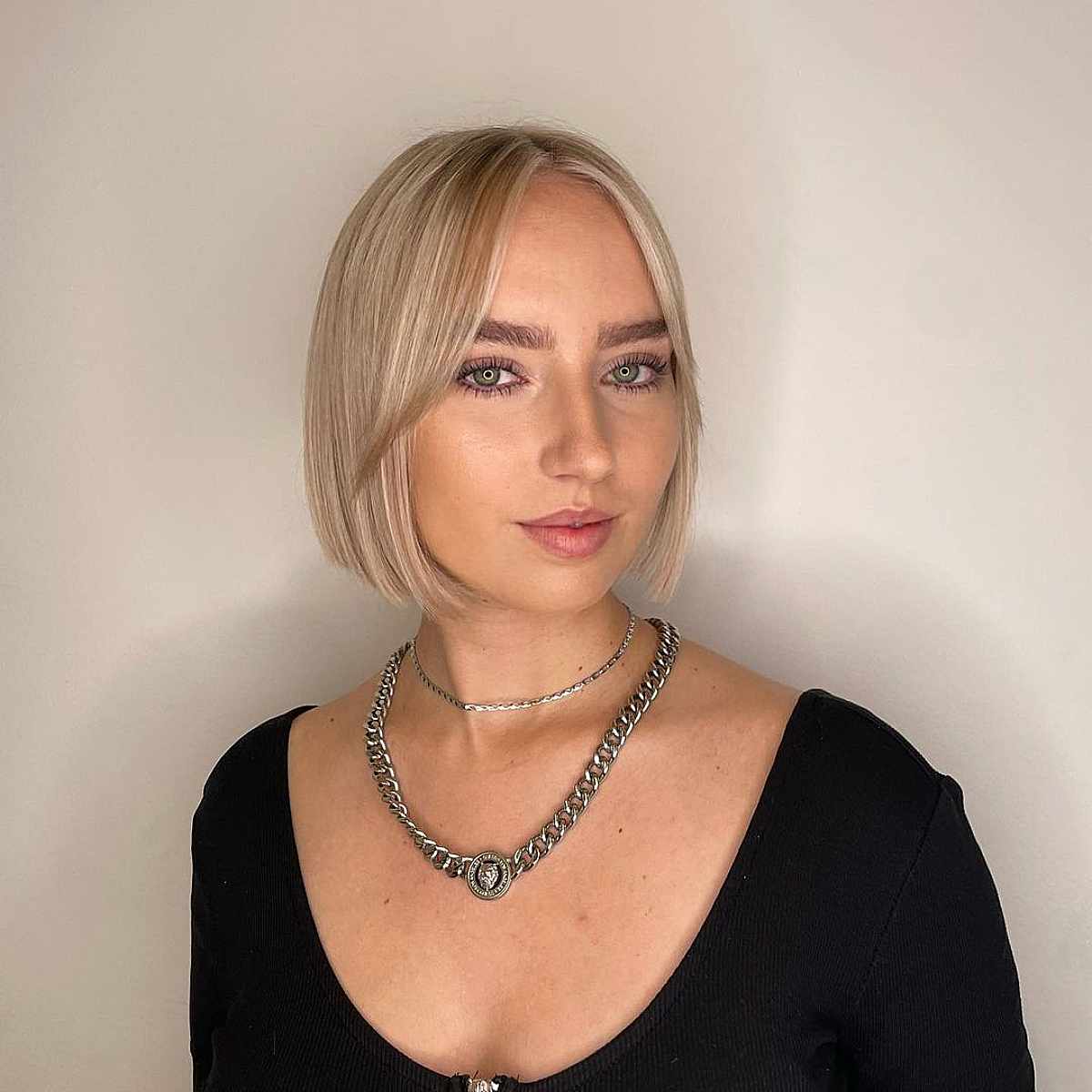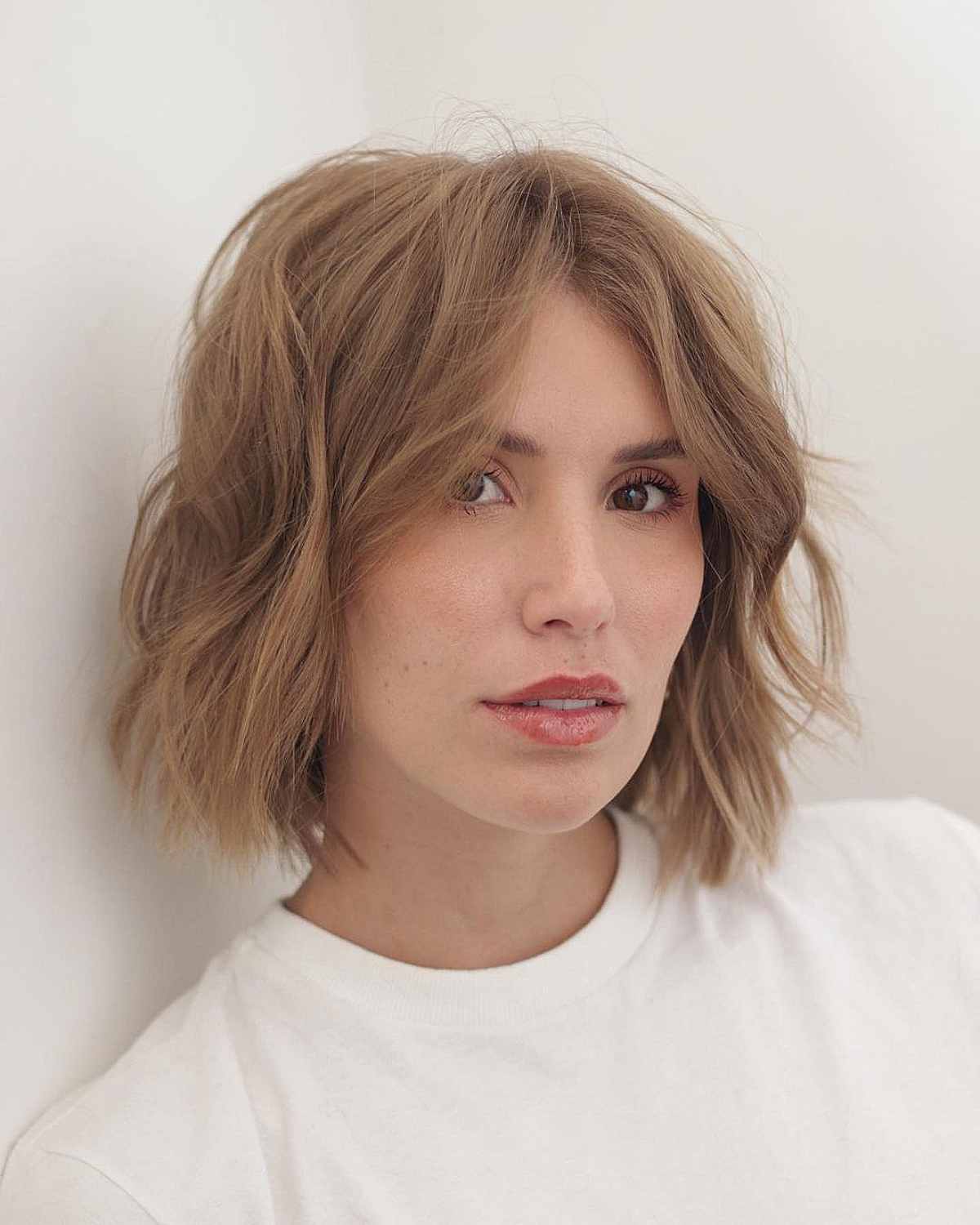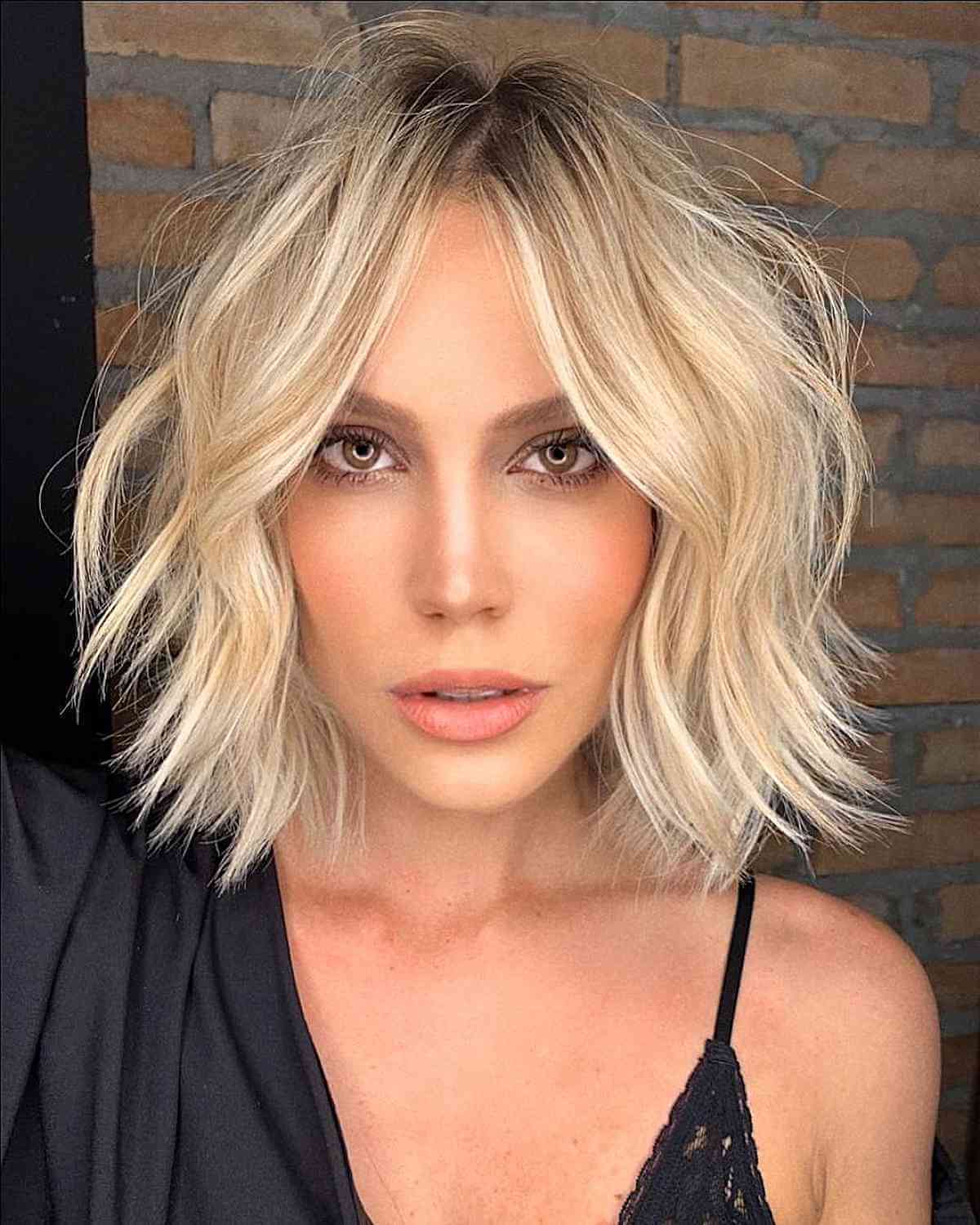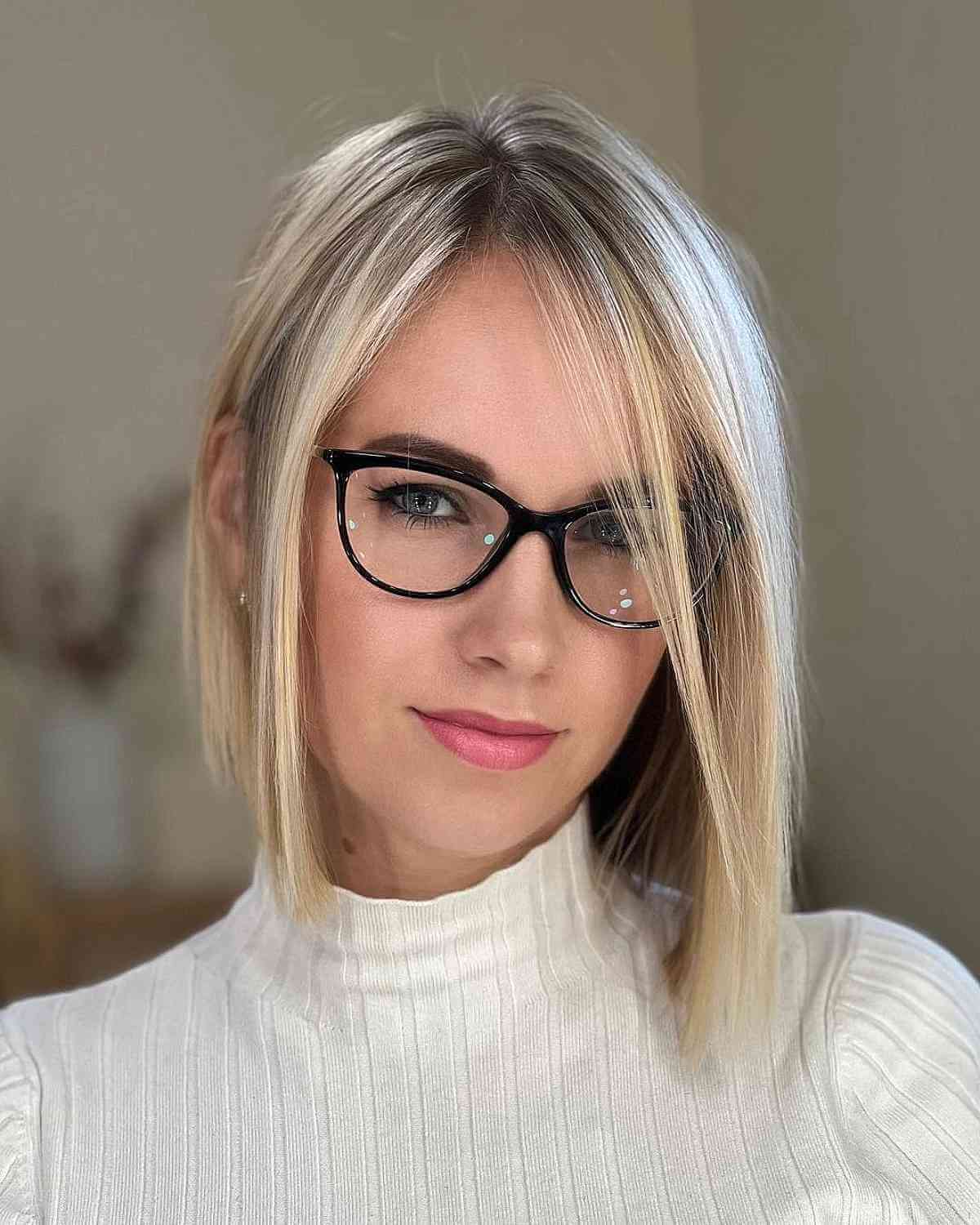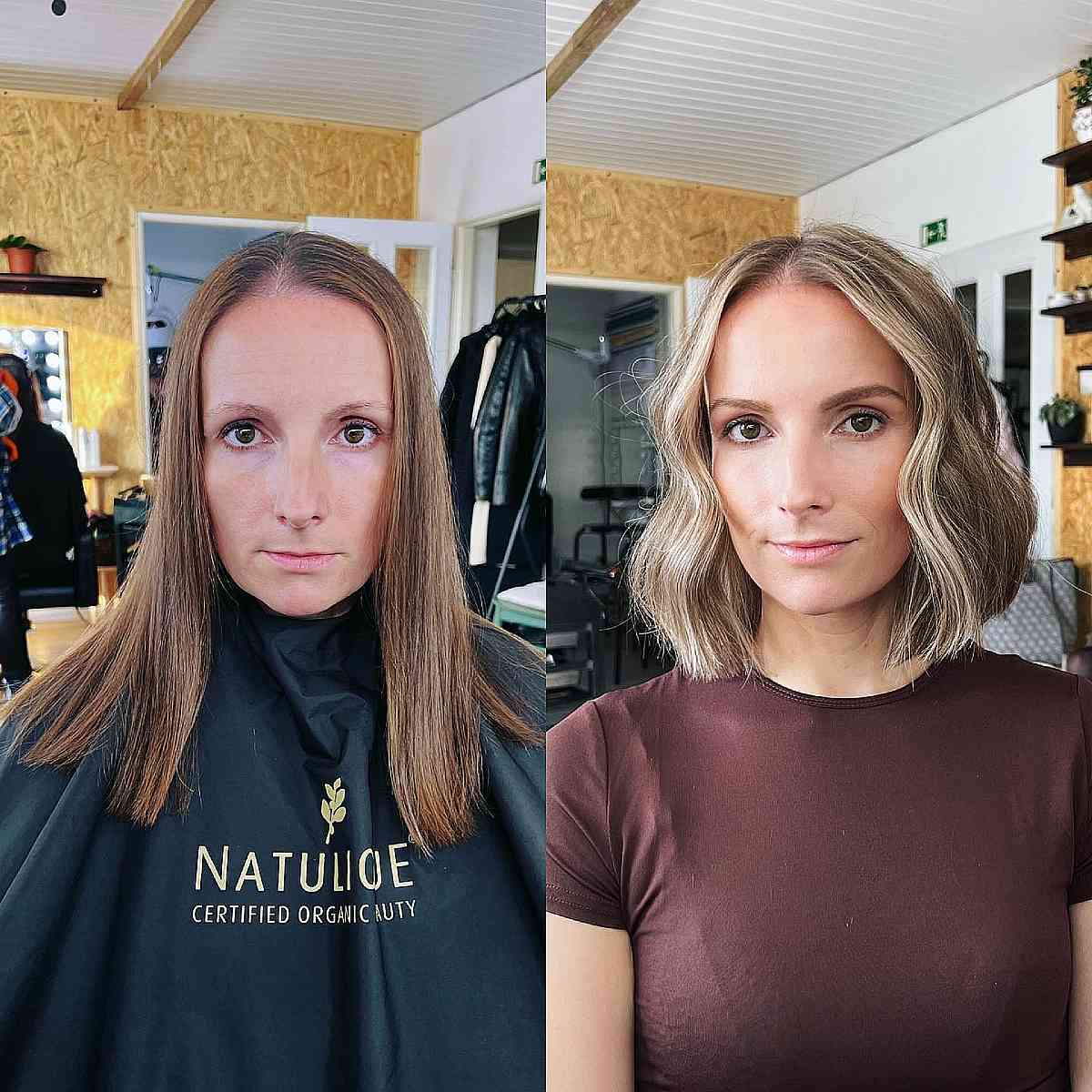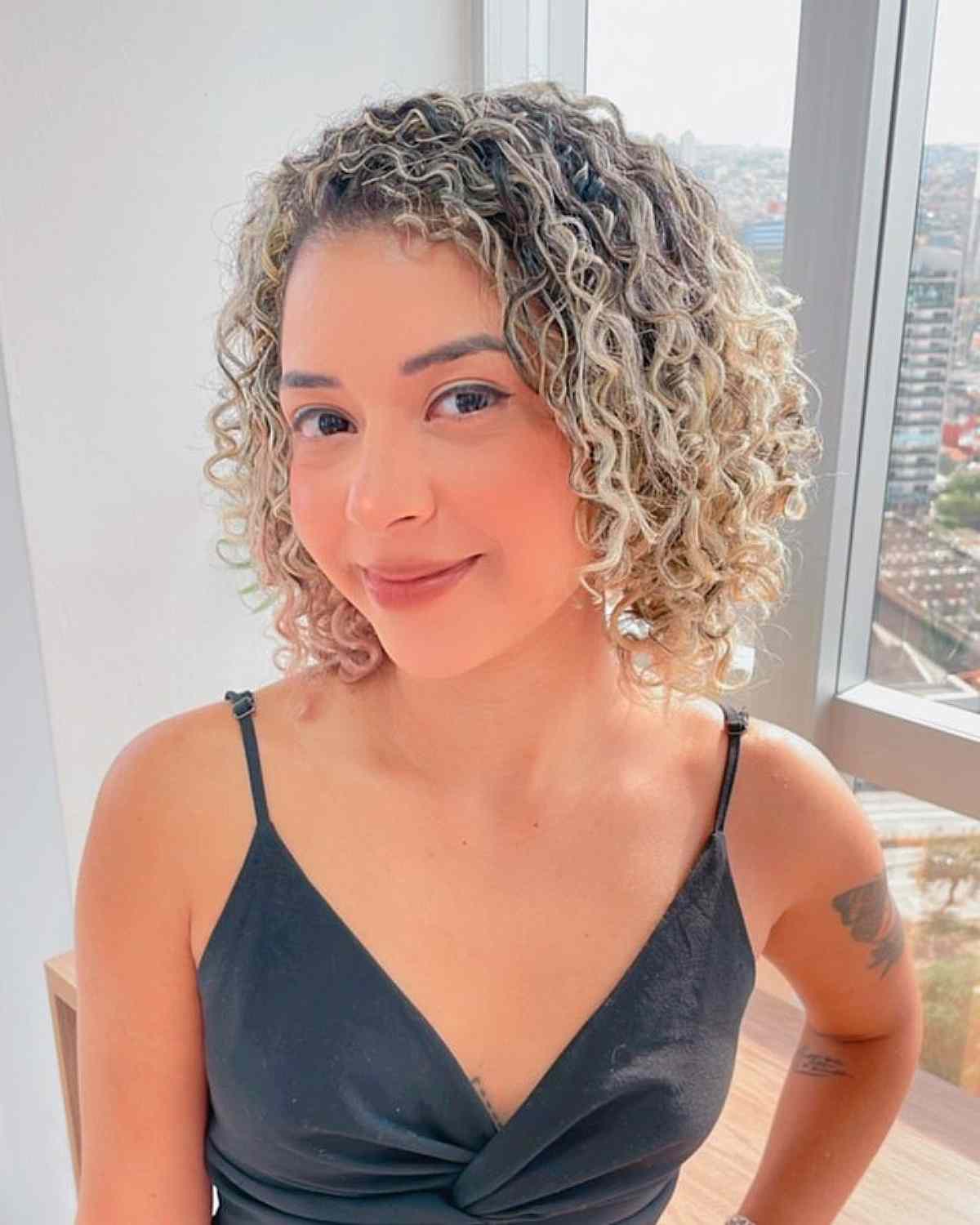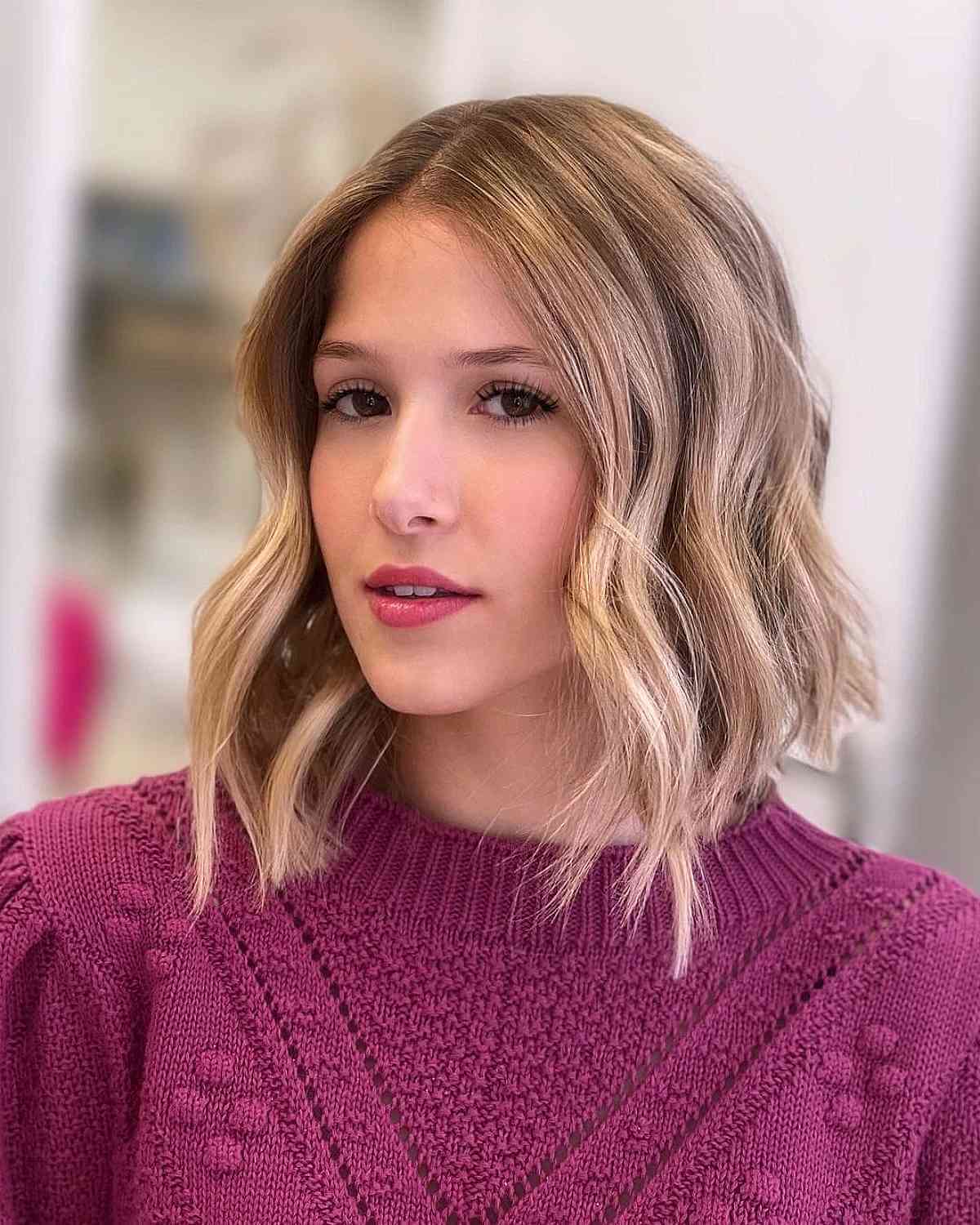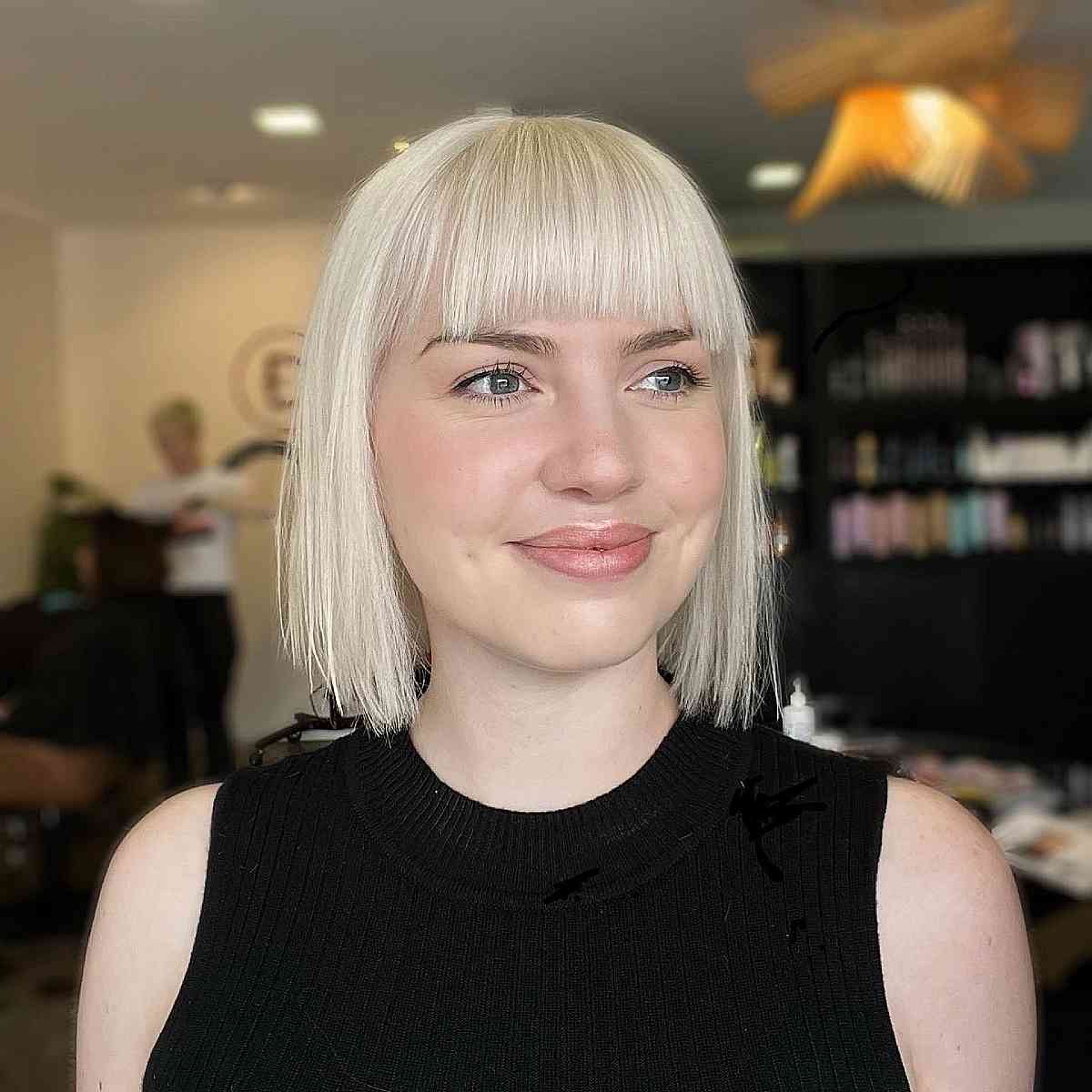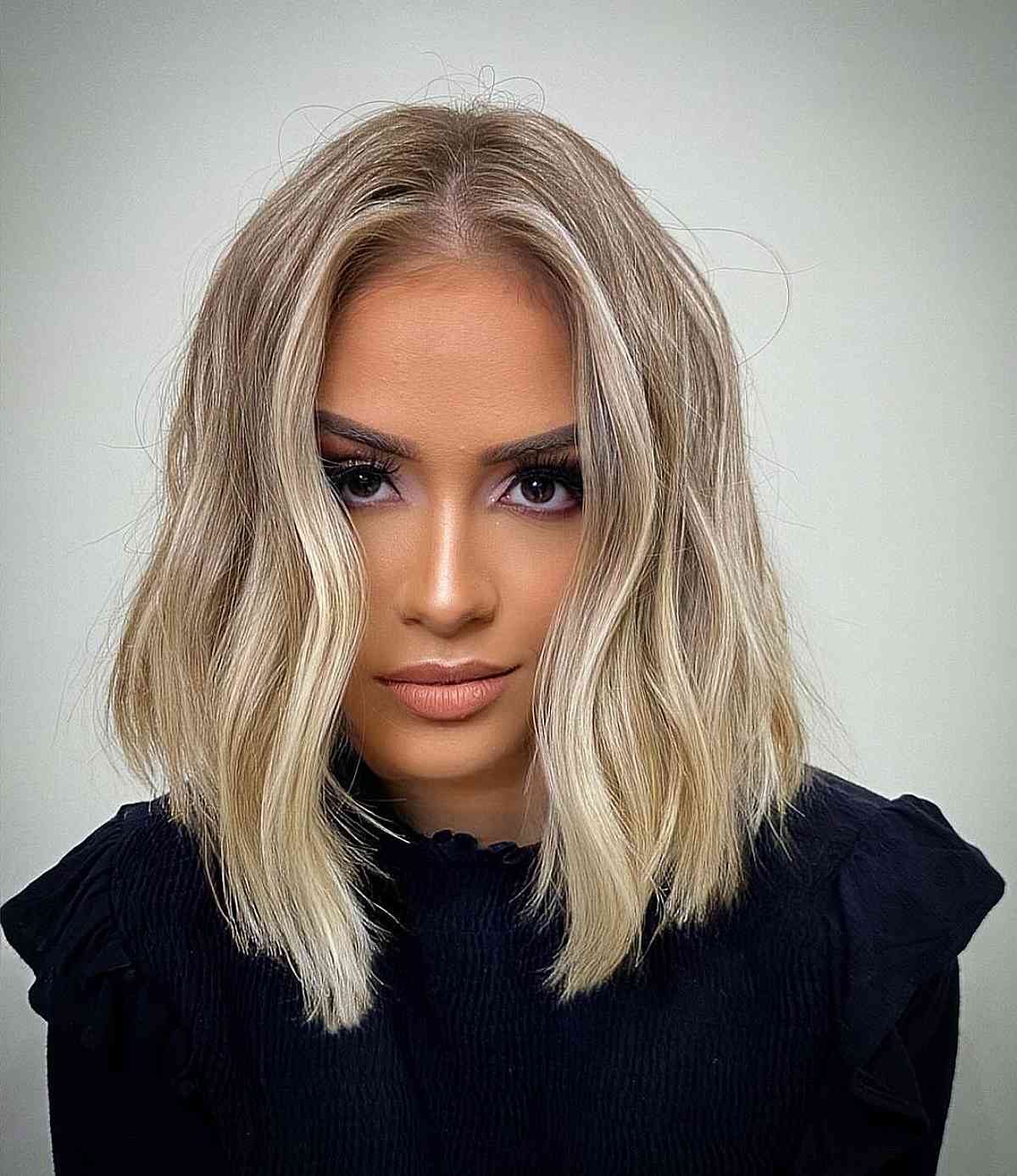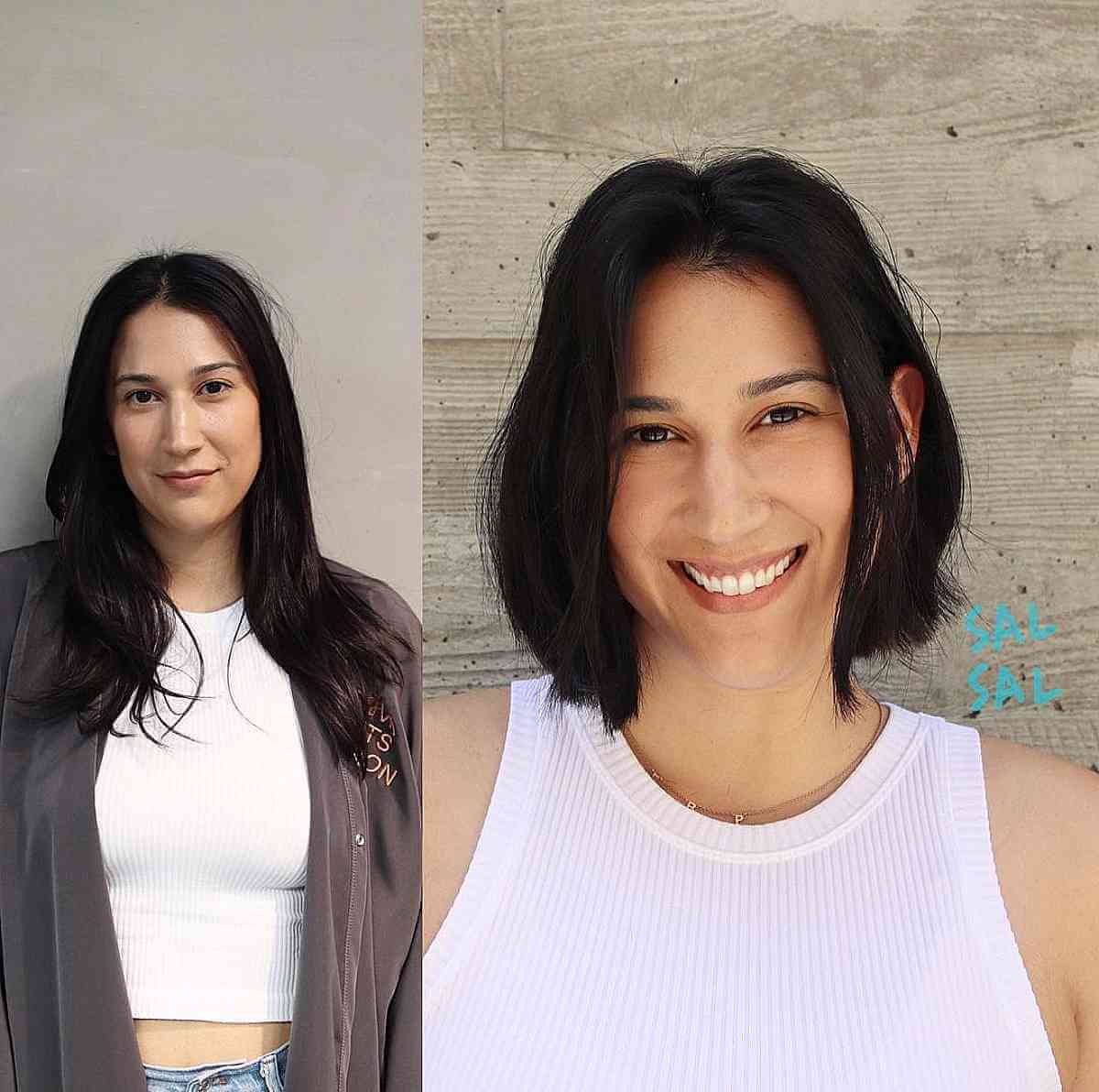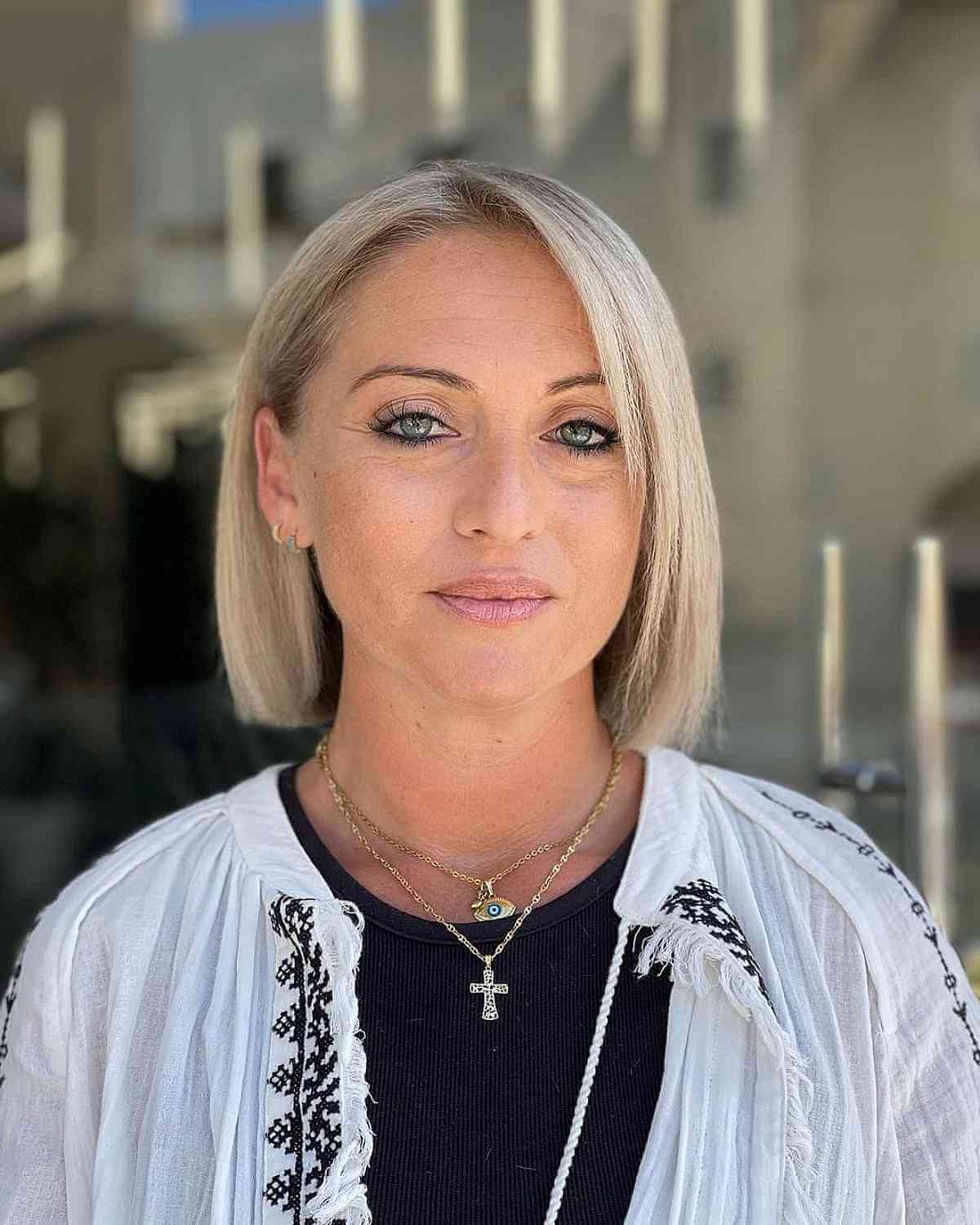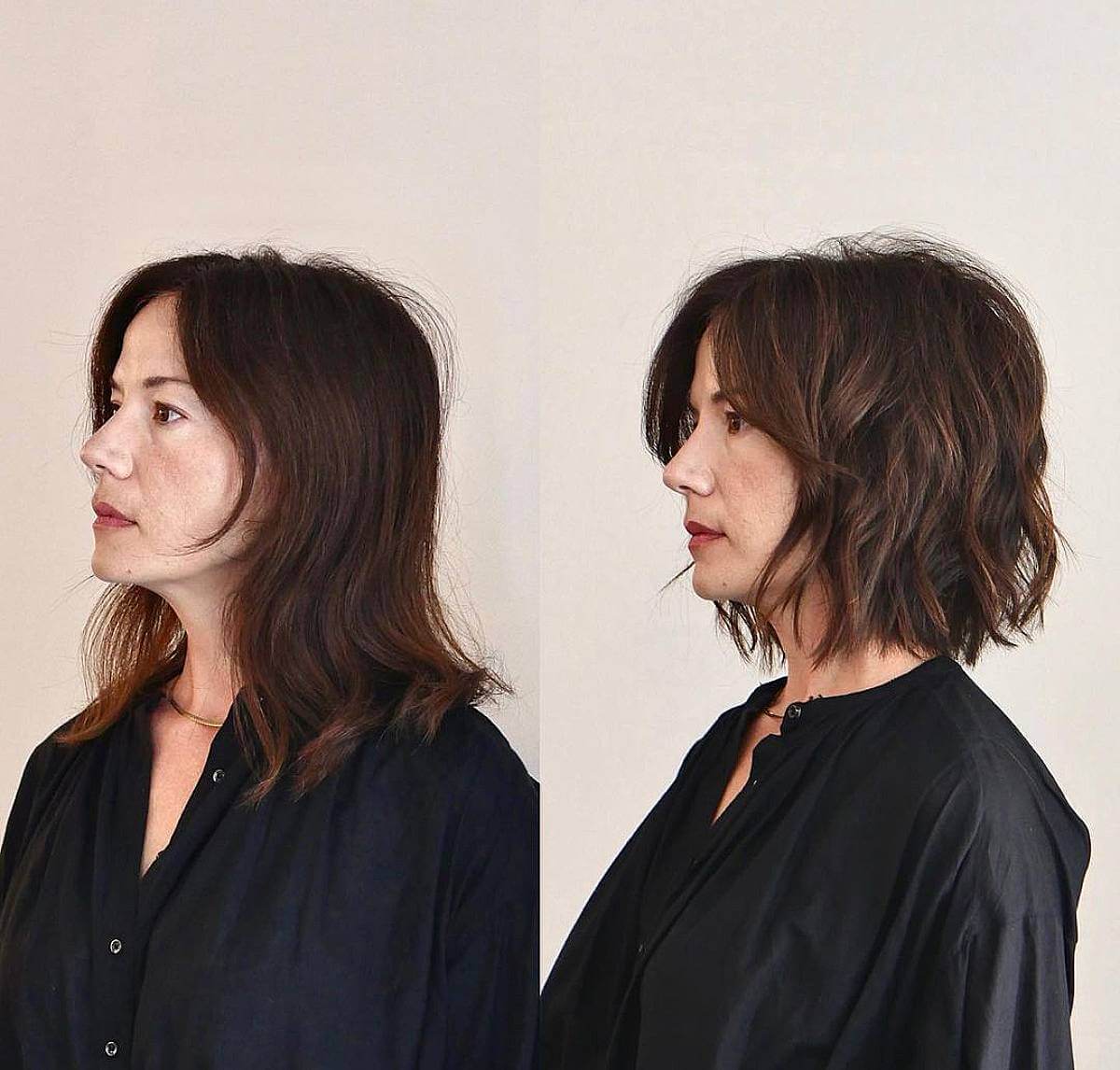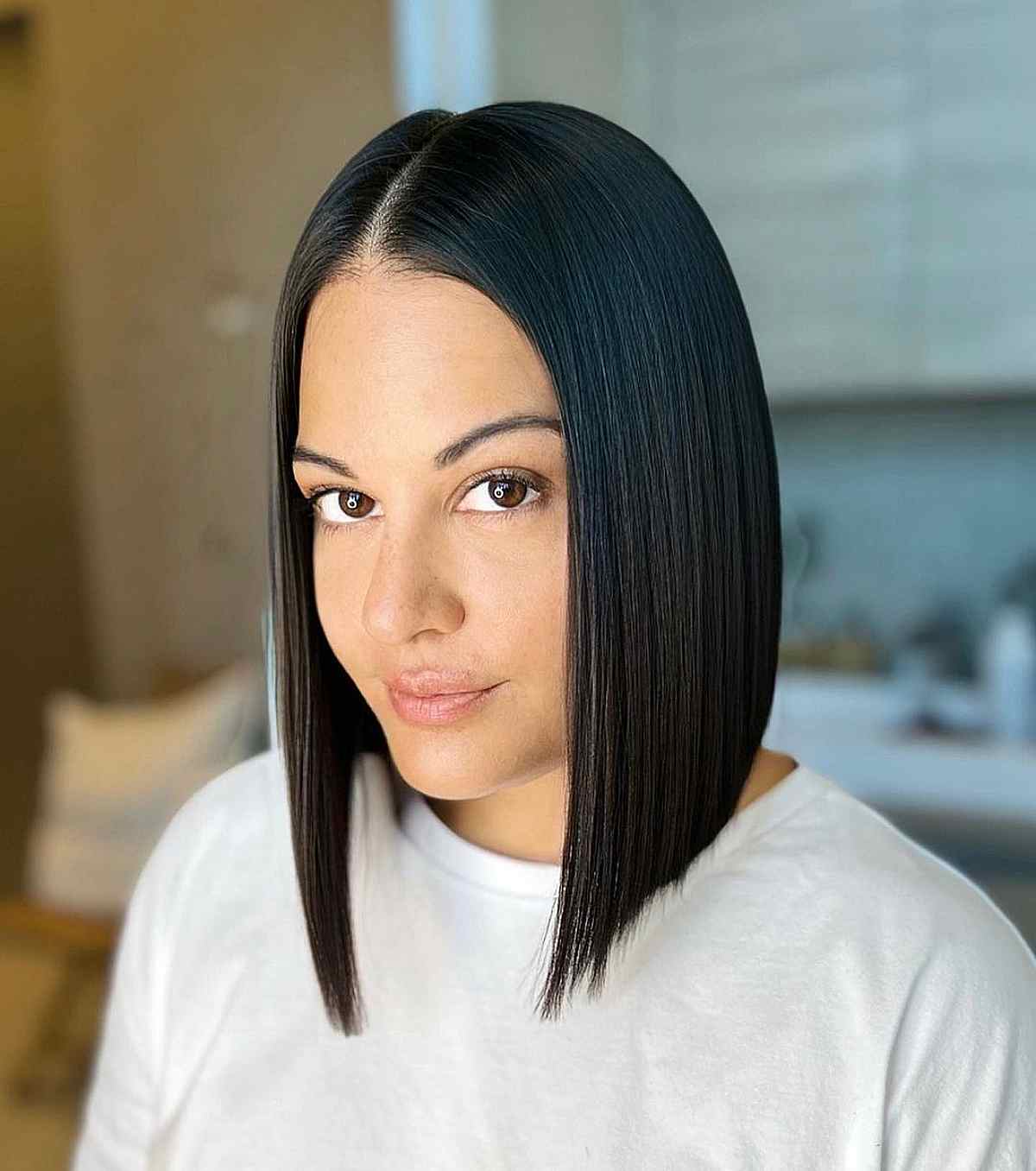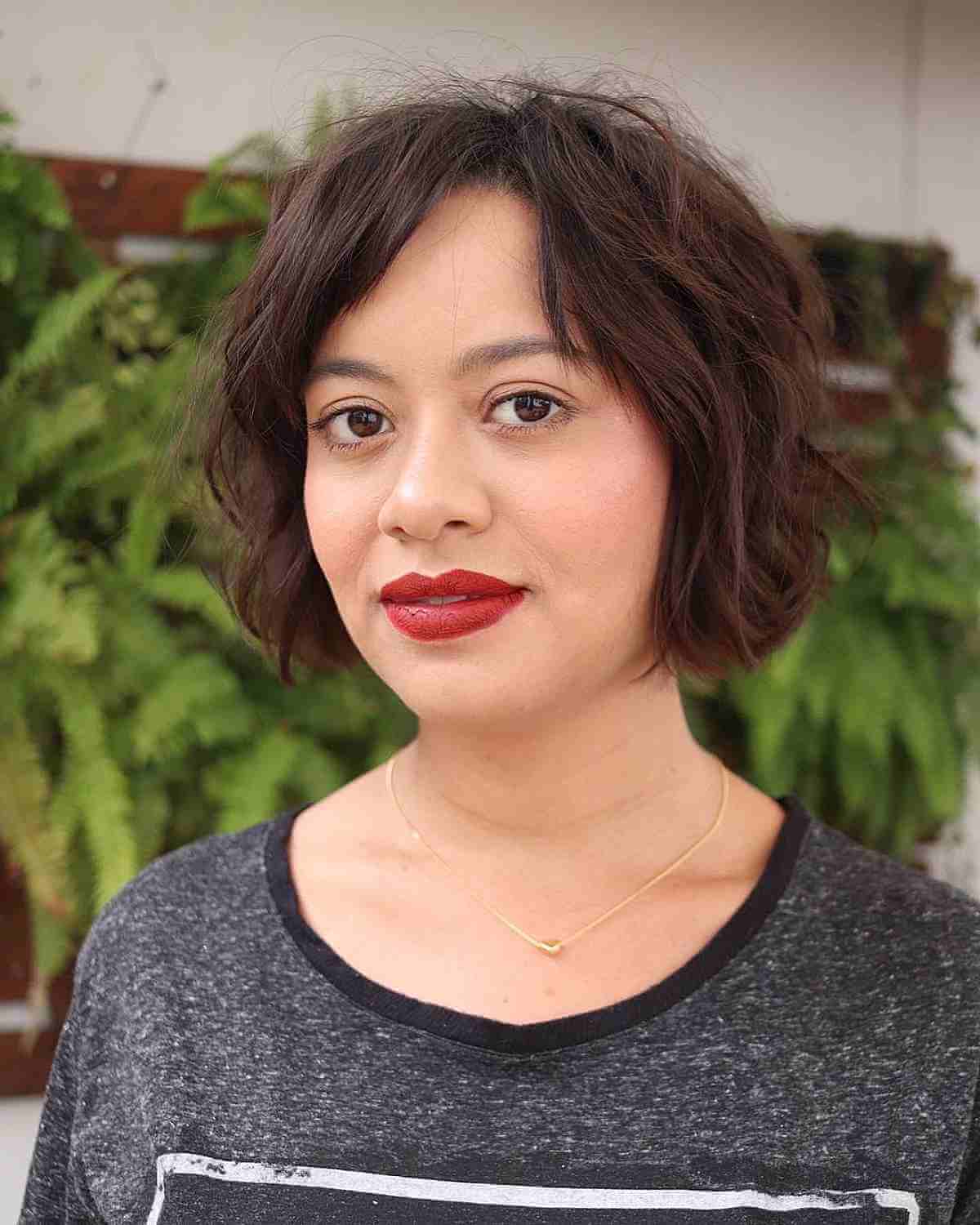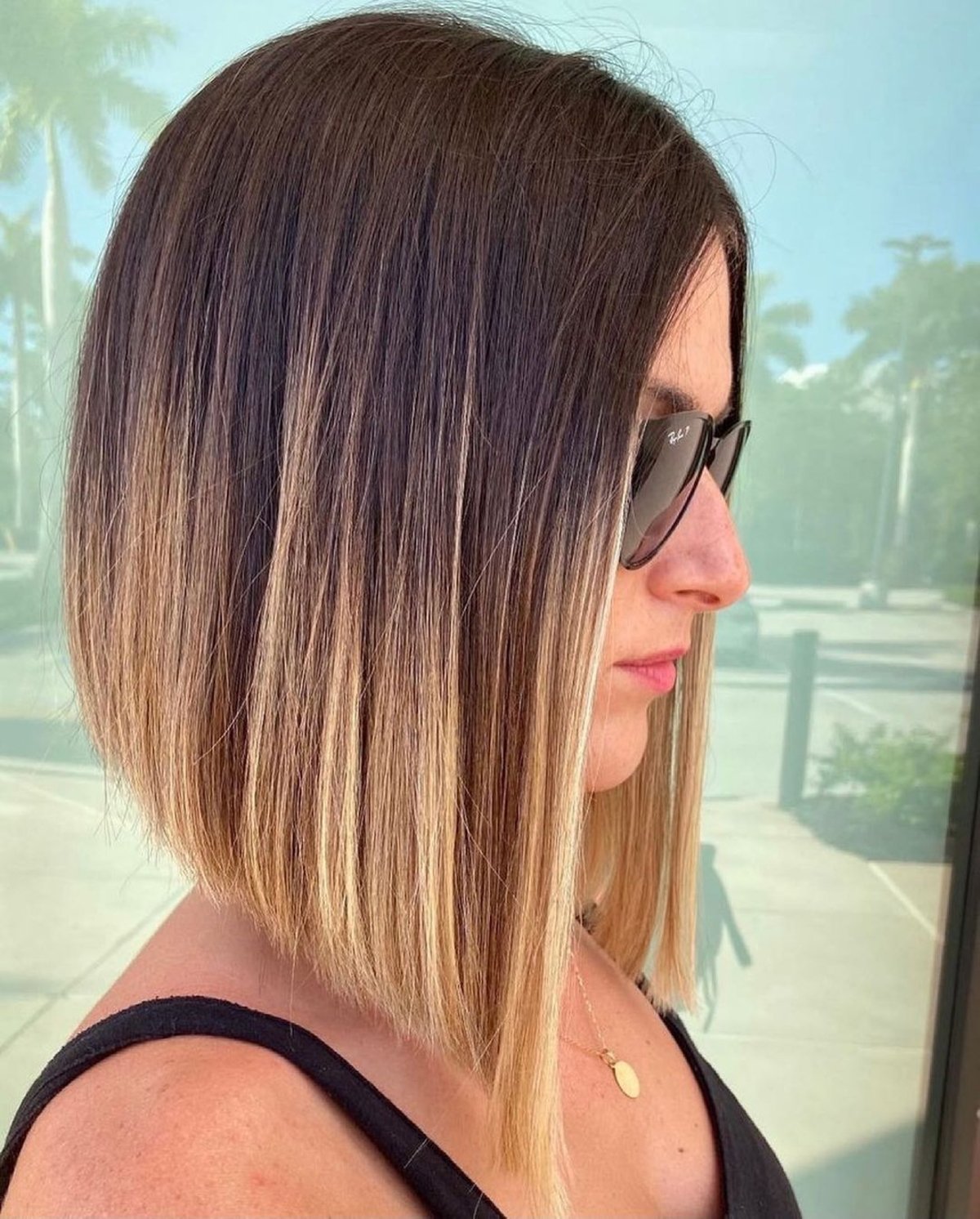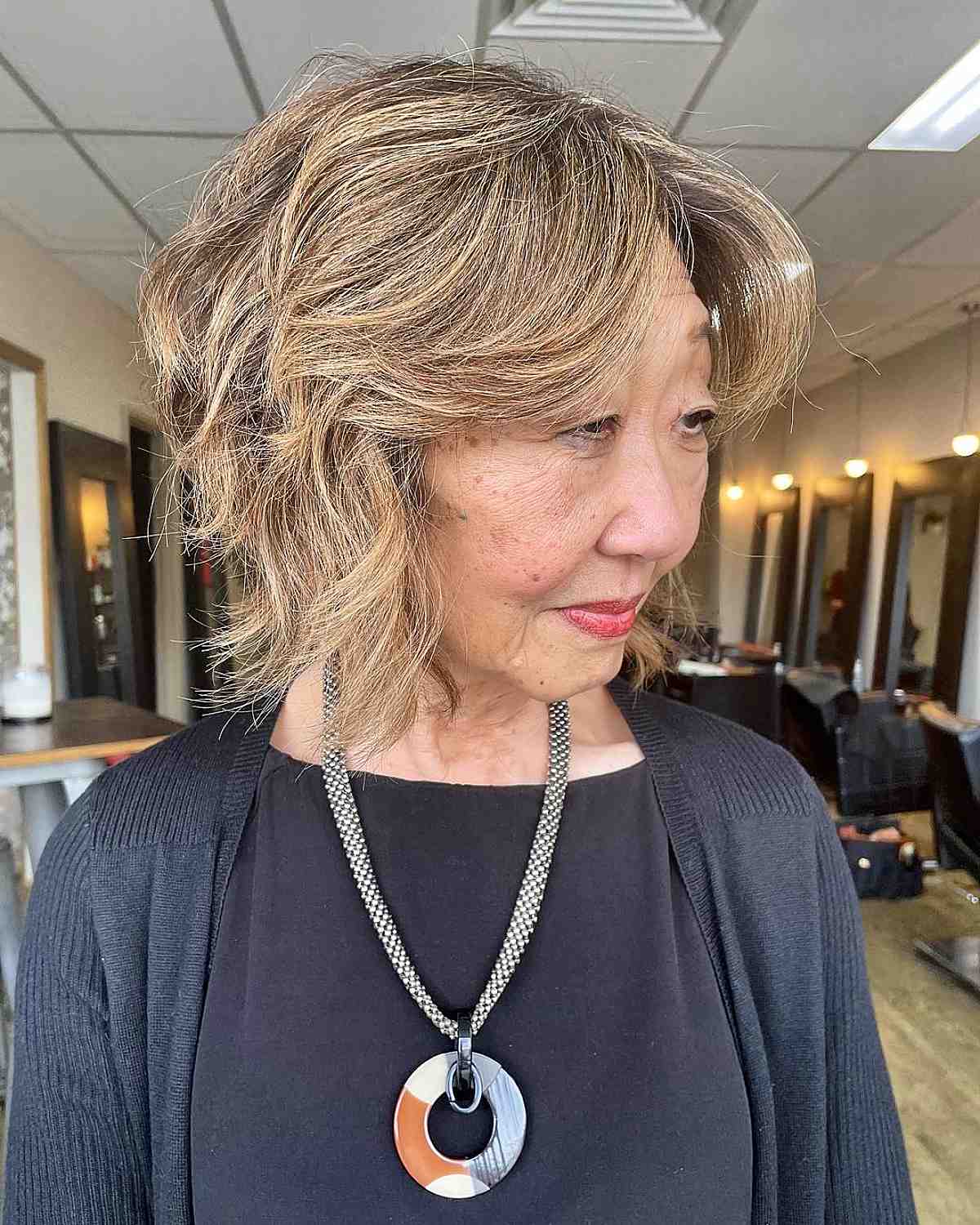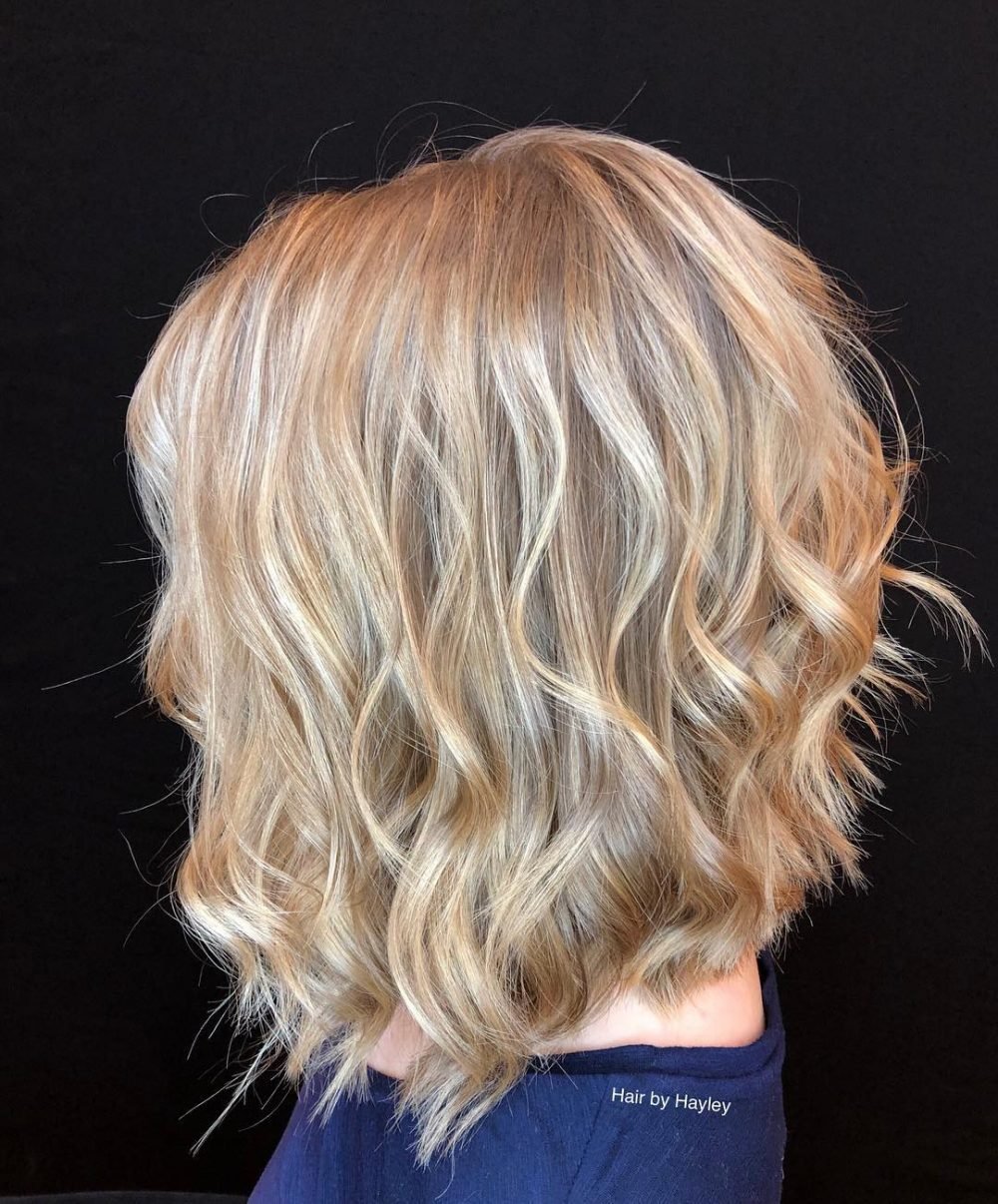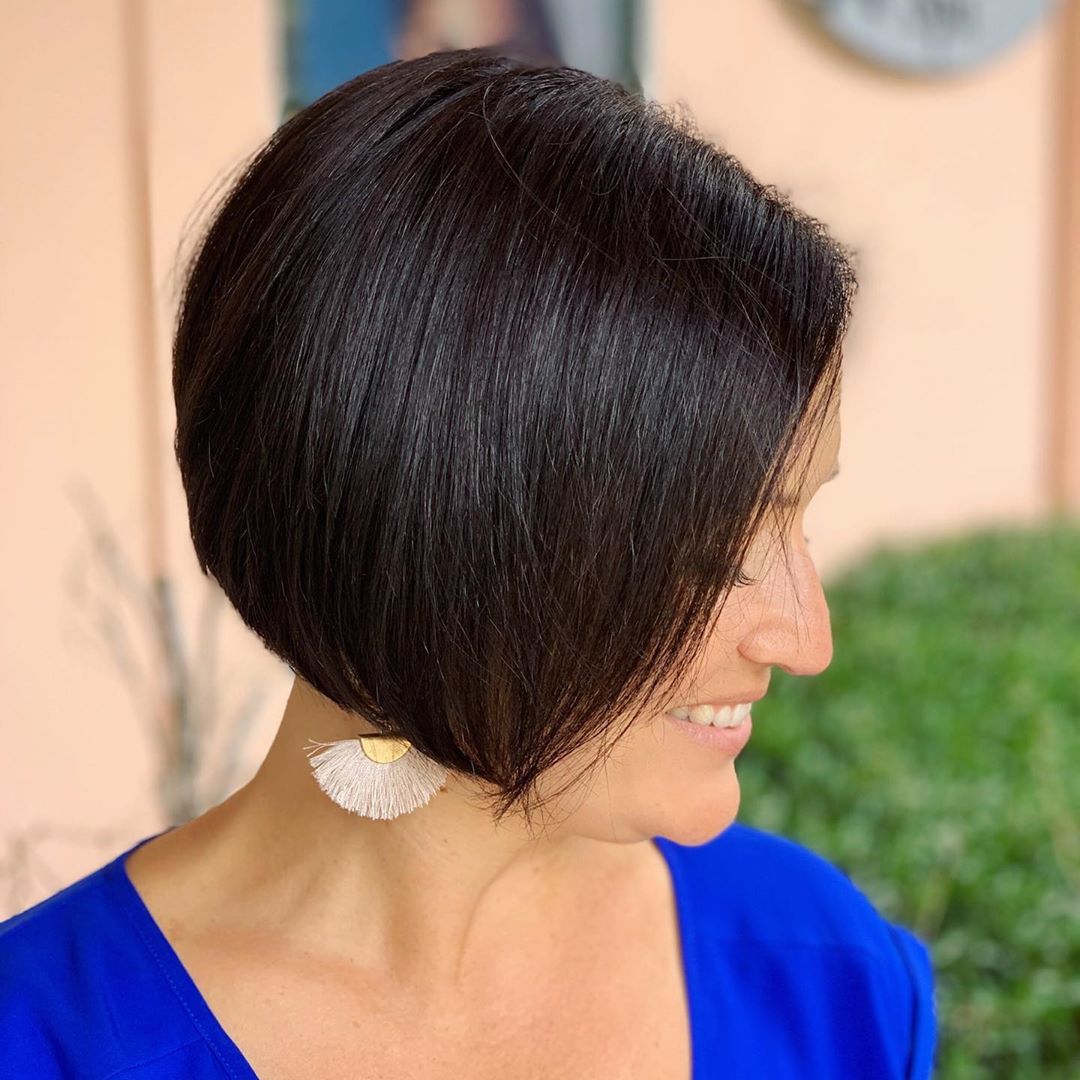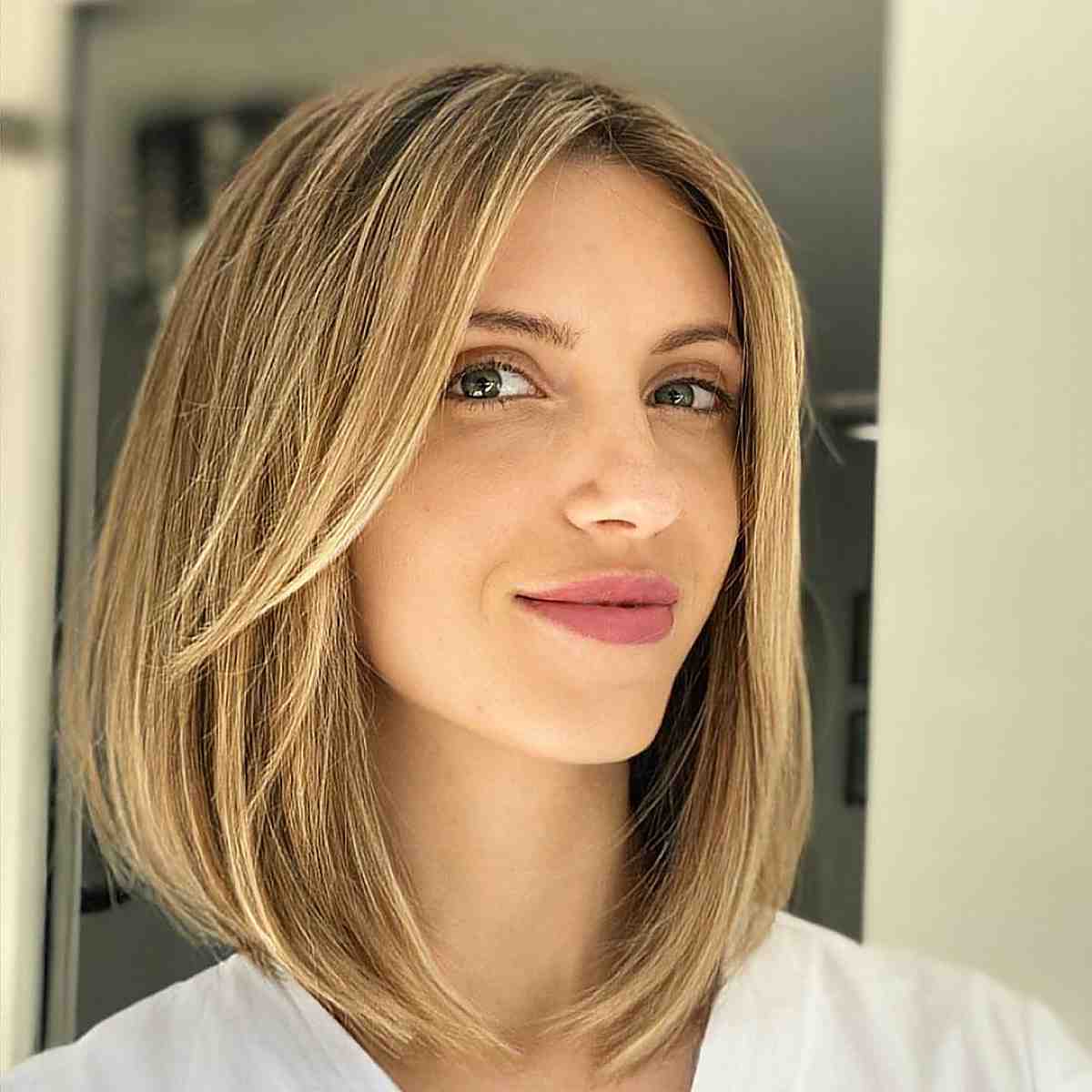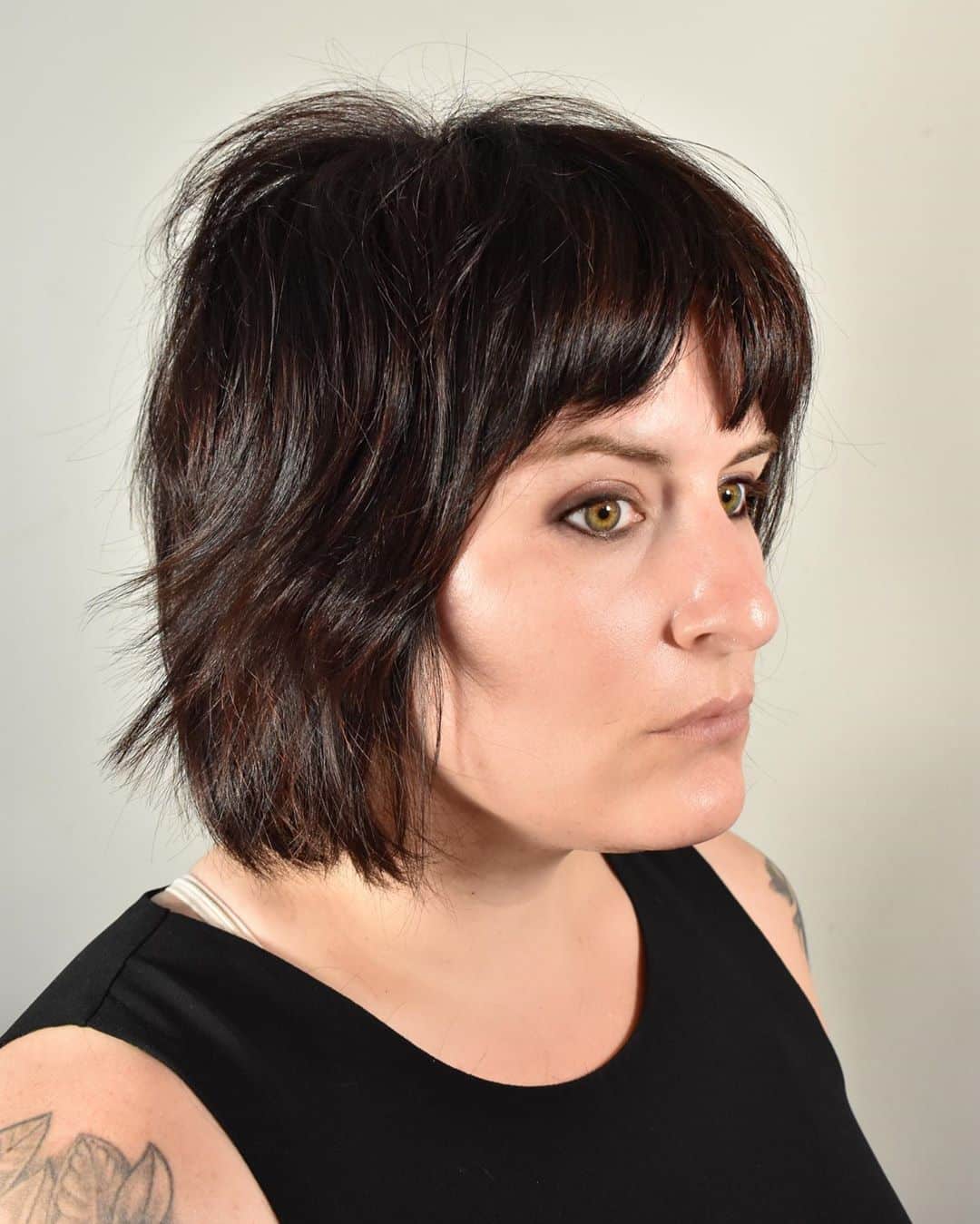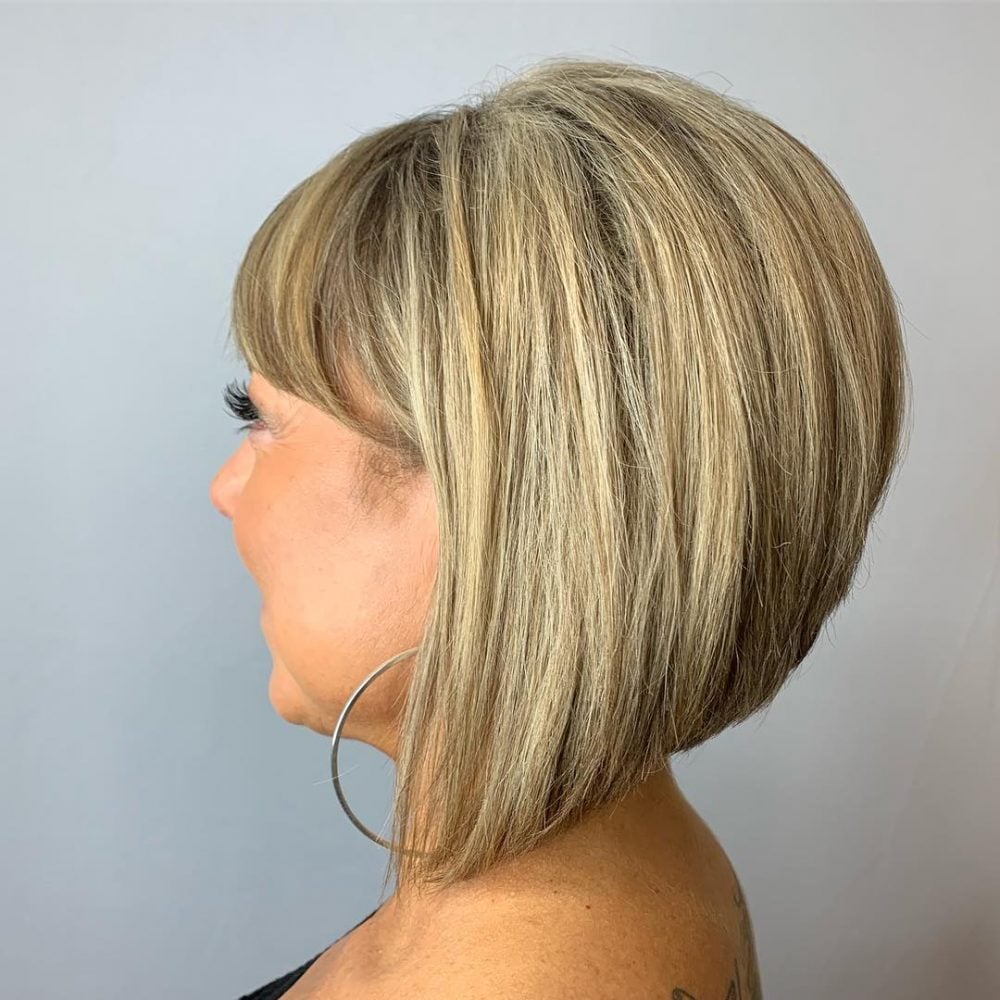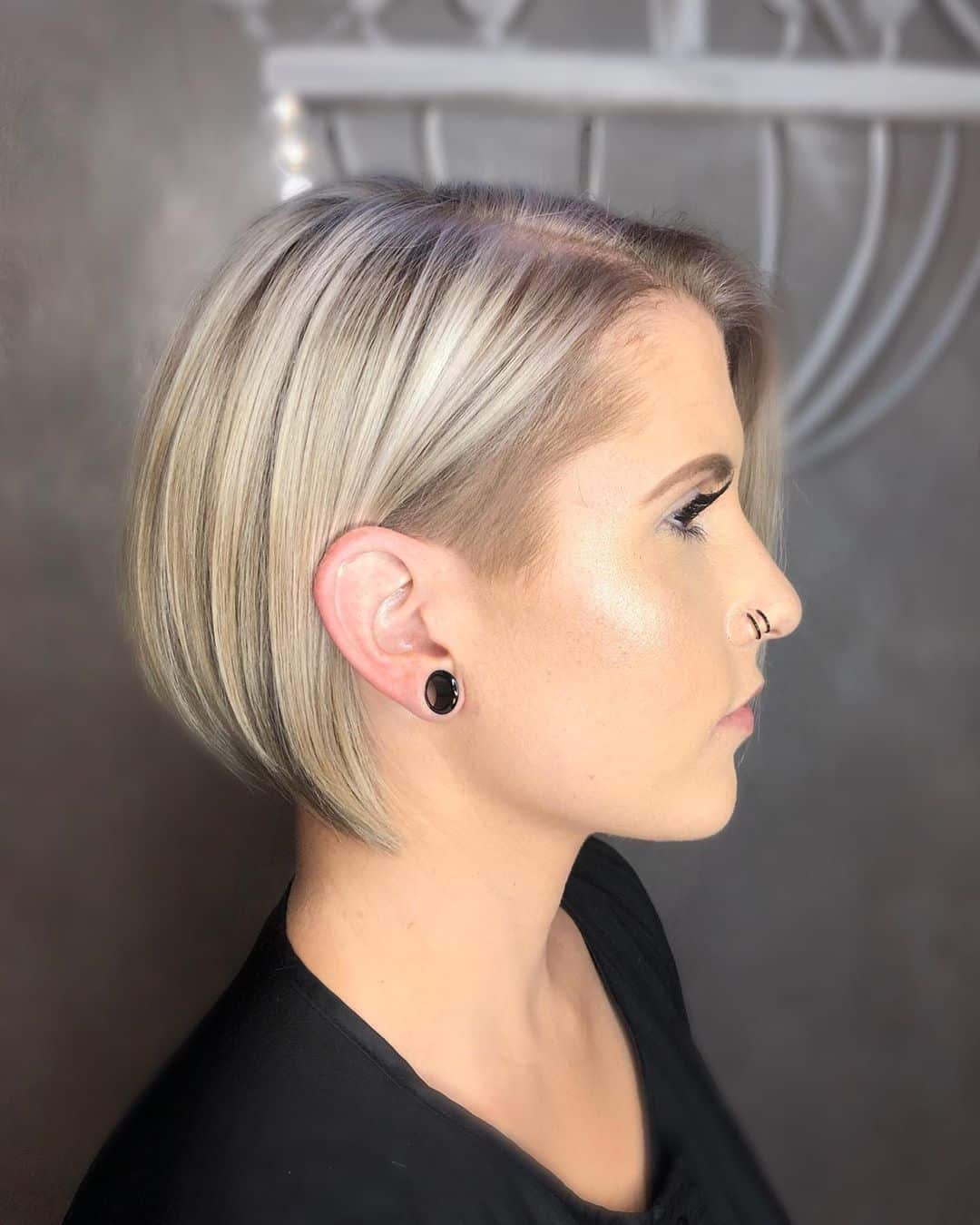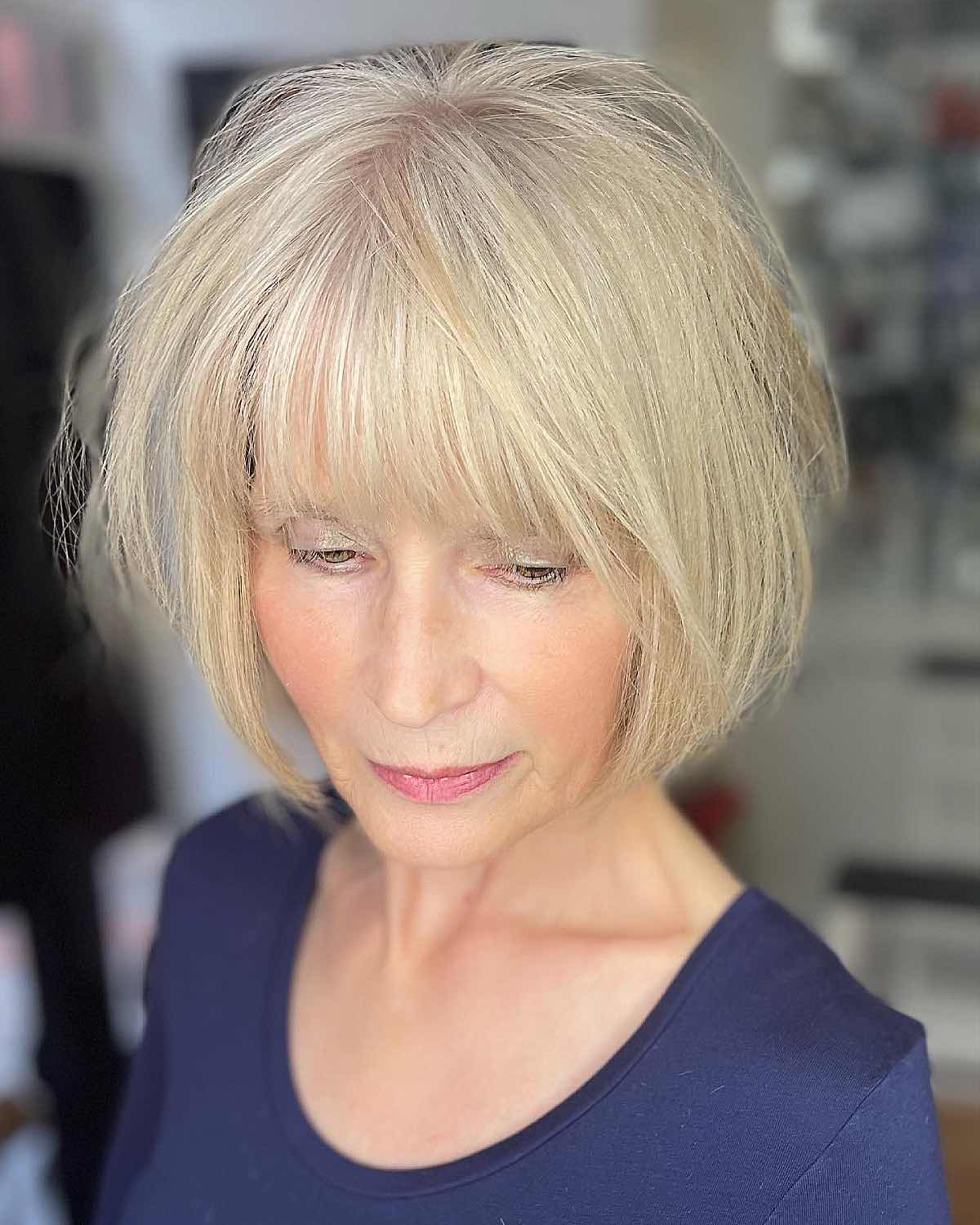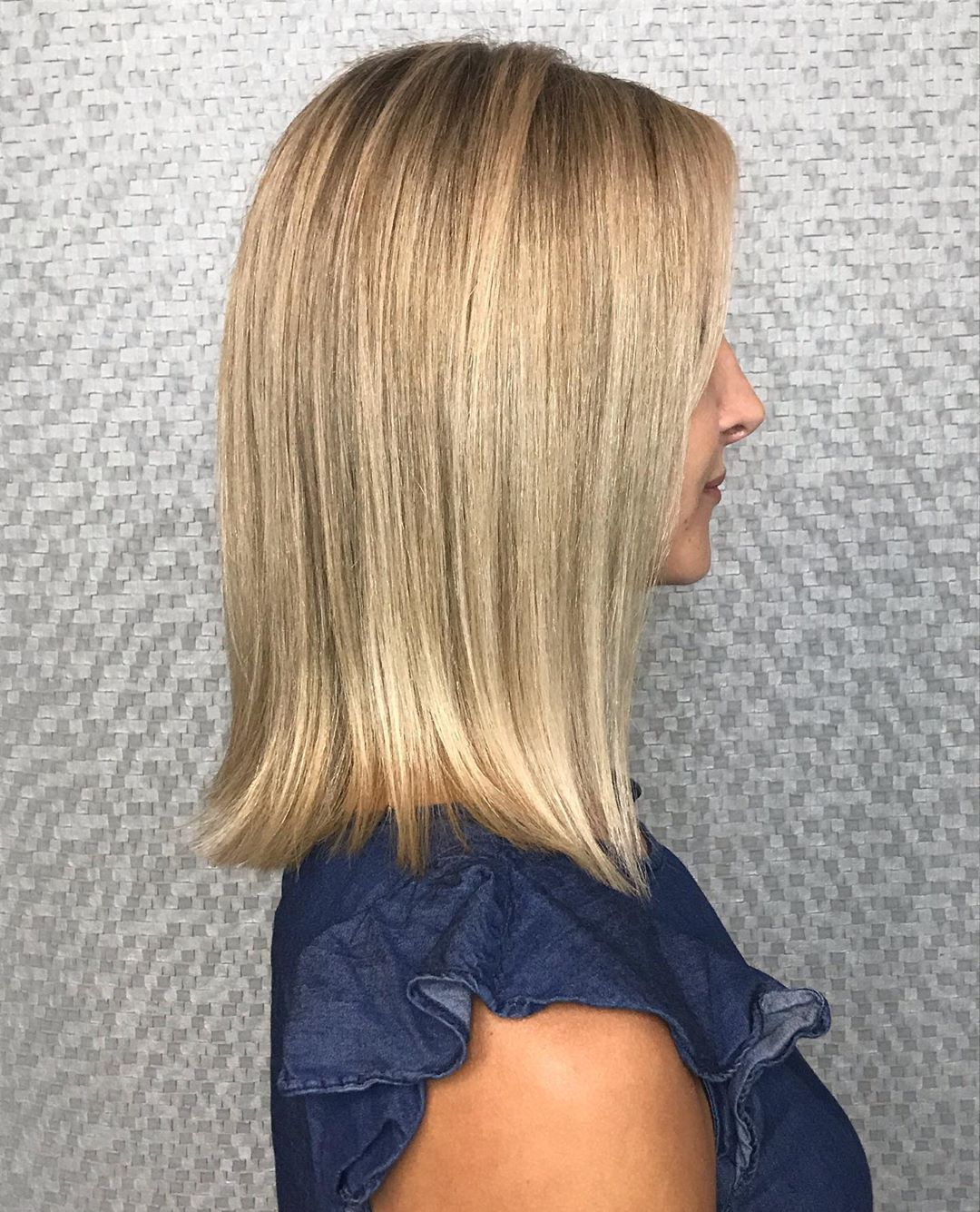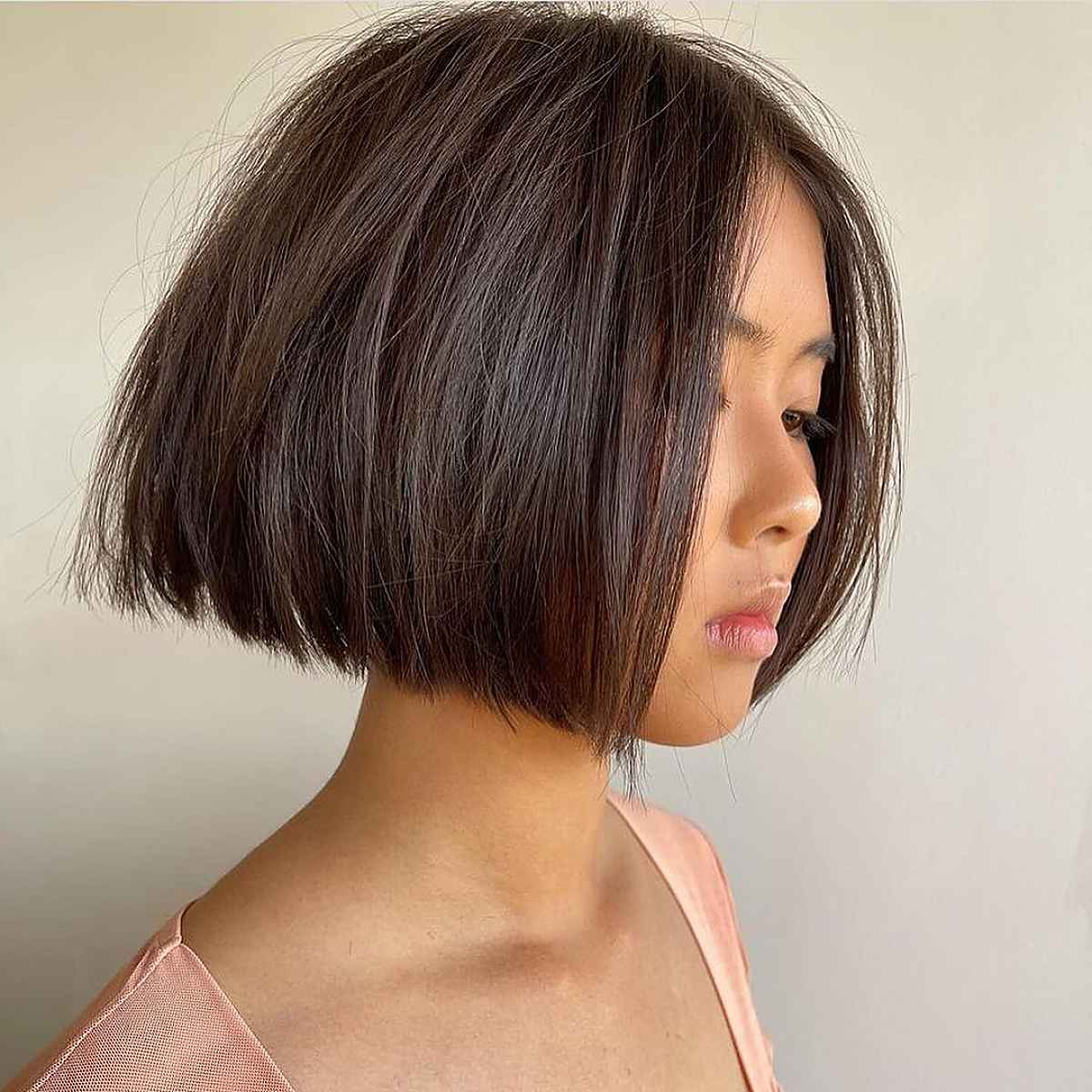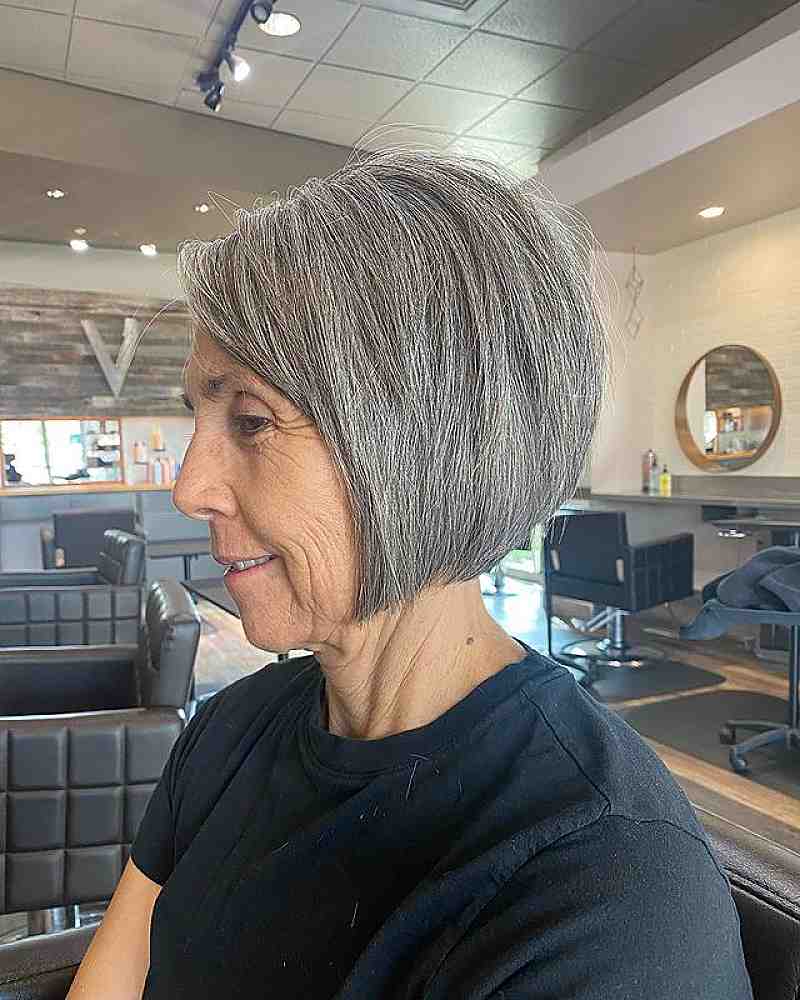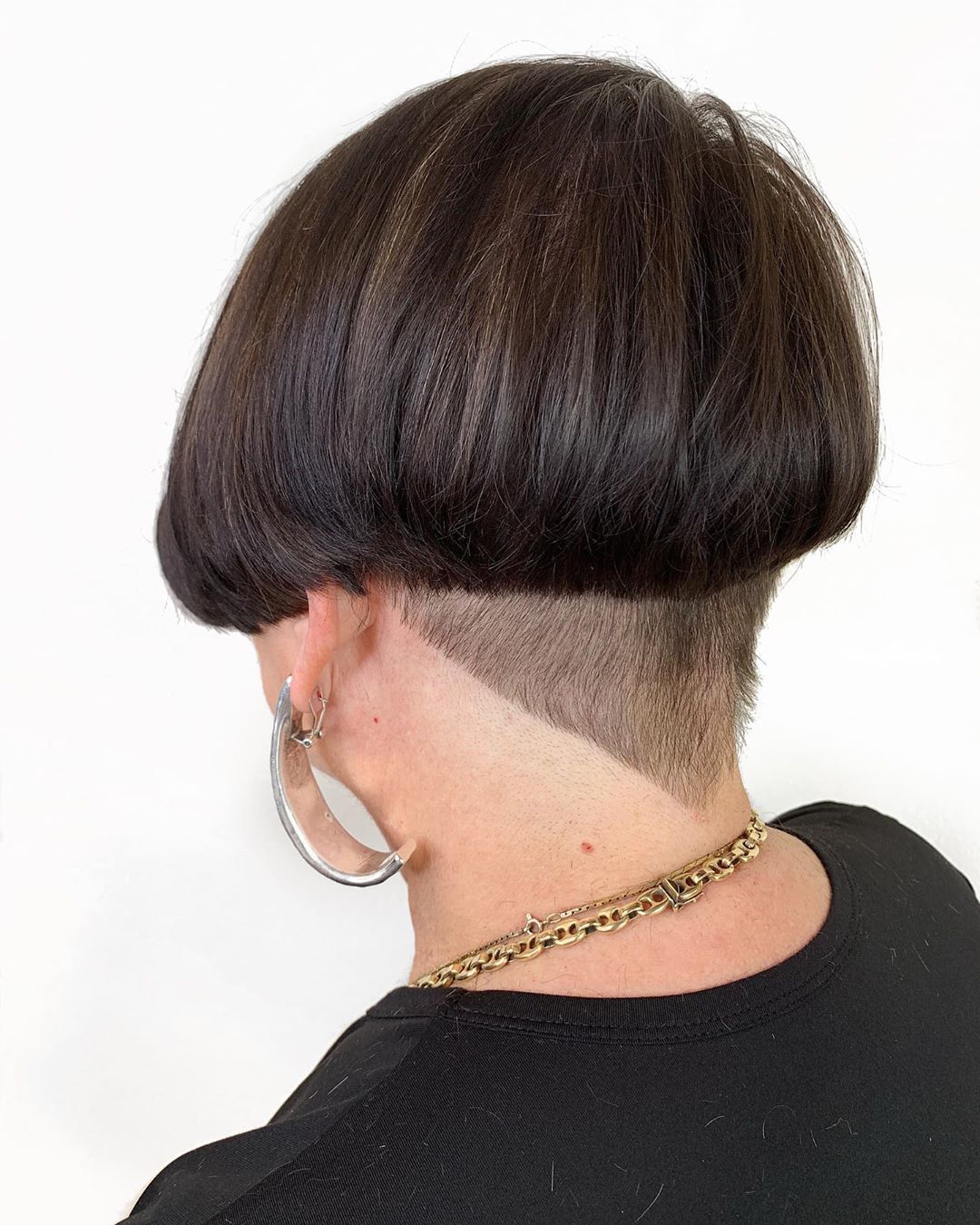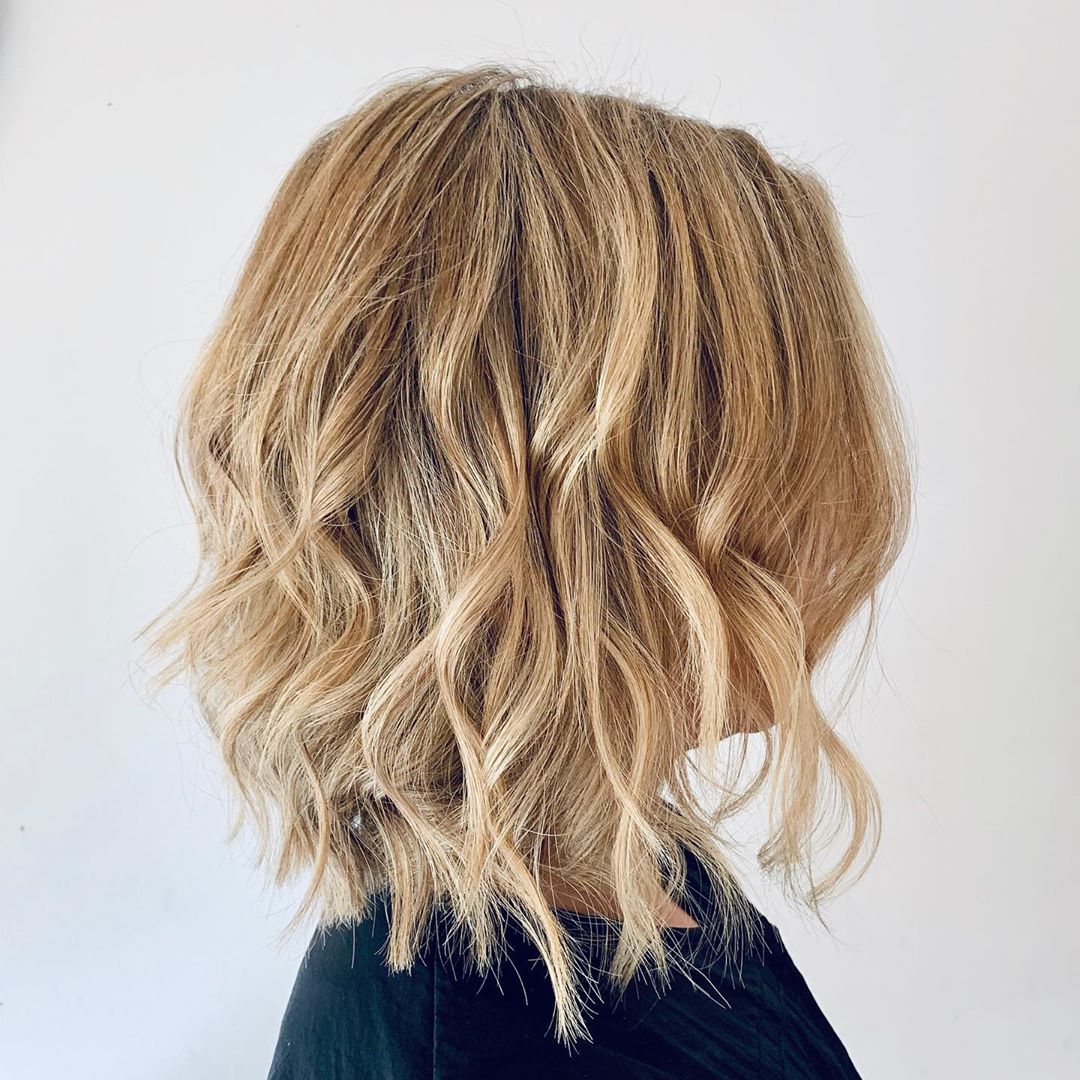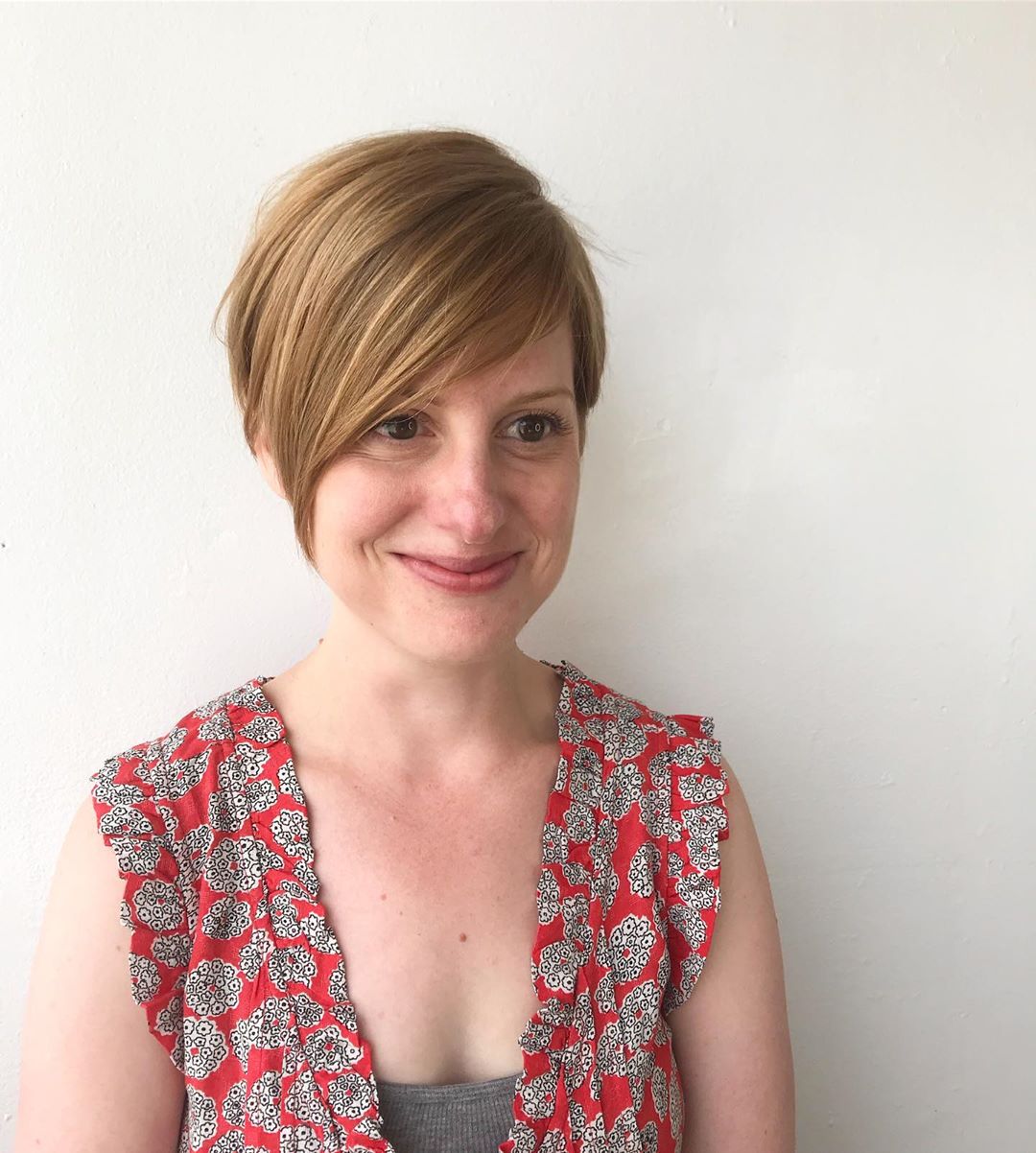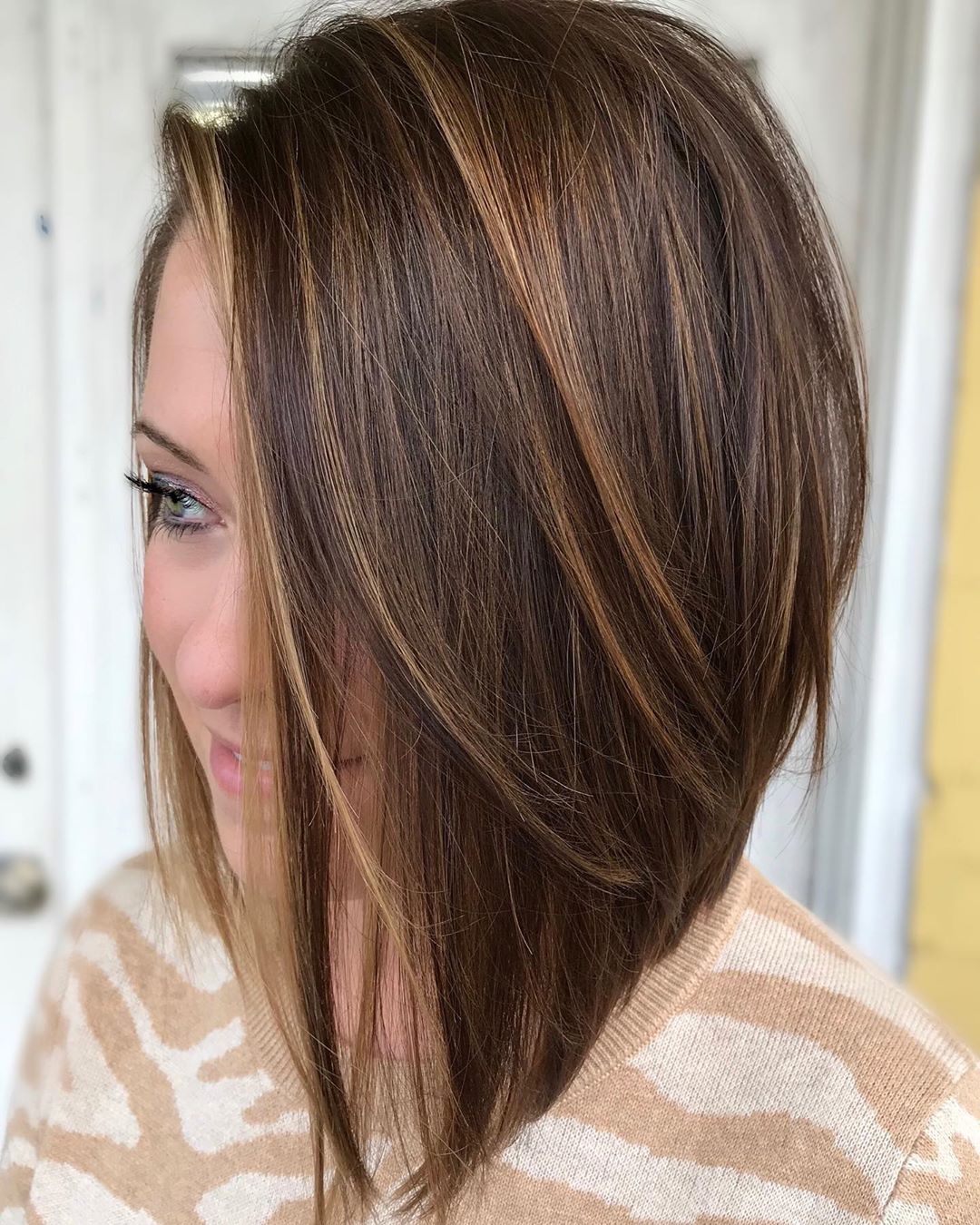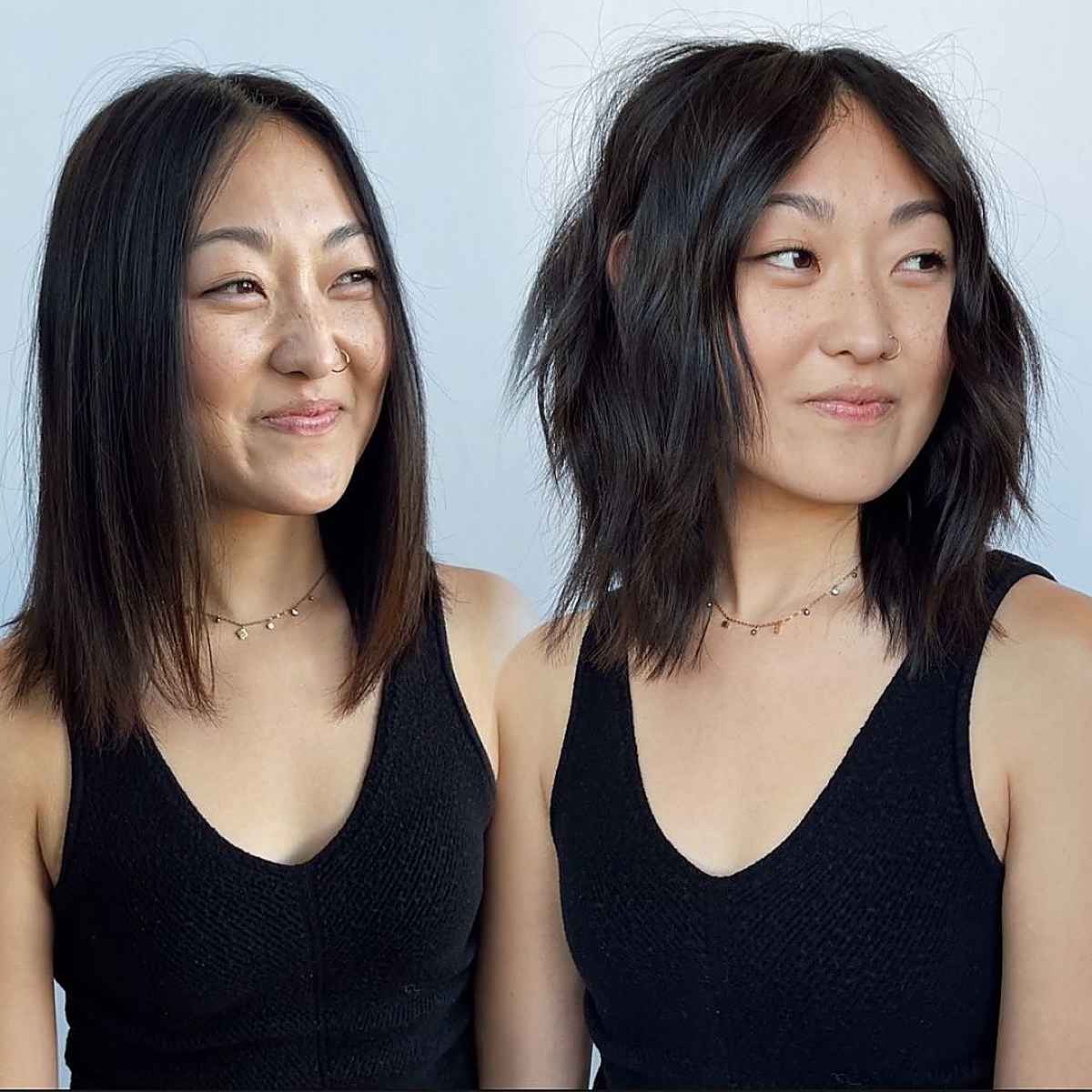In the early 2000s, being told, “You’re looking fine!” was a big compliment. But as a woman with fine hair, you may view the term as a 4-letter ‘f word.’ And your frustration is valid. Having fine hair comes with hurdles and challenges that other hair textures don’t deal with— let alone understand. But as a hairdresser with over ten years of experience under my belt and a woman with fine hair, I’m incredibly familiar with these issues. More importantly, I’ve discovered the secrets to choosing the best bob haircuts for women with fine hair. Once you read this guide and scroll through the gallery of hairstyle ideas, you, too, will be an expert in customizing any bob to suit you perfectly.
What is Fine Hair?
Fine hair is characterized by a smaller-than-average diameter of each hair strand. (Source) When you look at people, specific differences between hair types are apparent. The color and amount of natural curl are 2 of the most noticeable.
But noticing the thickness of a person’s hair can be tricky unless you’re their hairdresser.
Stylists typically break down thickness into three categories:
- fine
- medium
- coarse.
How to Tell If You Have Fine Hair
To determine if you have fine hair, pinch one hair between two fingers. You can use your thumb, pointer, index, or ring finger. Carefully slide your fingertips down the strand of hair. As you do this, imagine doing the same with sewing thread. You can even run your fingers down a strand of thread if you have some handy. Did your hair feel finer than the thread? If so, the odds are good that you have fine hair.
Fine hair tends to be more fragile and less voluminous or bouncy than medium or coarse hair. That’s why bob haircuts for fine hair are such a great choice. Whether you spring for a lived-in layered bob, a trendy stacked bob, or even a versatile shoulder-length bob, you can look forward to more volume and movement.
Fine Hair vs. Thin Hair
Before we move on, I must dispel some myths and clarify some terms. Now you know what fine hair is and how to tell if you have it. But we need to talk about thin hair, too. These terms are different– -despite some people using them as such. In a nutshell, hair thickness is measured in 2 ways. The first is the diameter of each strand, which can be fine, medium, or coarse. The second is in the density of hairs on your scalp, which is usually classified as thin, average, or thick. You can have fine, thin hair. Or fine, thick hair. Or coarse, thin hair… or any combination! So, know that fine and thin hair refers to 2 different things. And having fine hair does not automatically mean you have thin hair—or vice versa. Hollywood beauties Zoe Saldana, Charlize Theron, Gwyneth Paltrow, and Mindy Kaling all have fine hair. Check out their hairstyles over the years for a clearer picture of what fine hair looks like.
Customizing Your Bob Hairstyle for Your Face Shape
As a woman with fine hair myself, I know you’re likely laser-focused on getting maximum lift and volume from your bob haircut. But specific styles are best suited to specific face shapes. Not taking this into account can draw attention to all the wrong places. So, I advise pausing to figure out your face shape if you need more time. Once you’ve sorted that out, consider these tips for your next haircut appointment:
- Diamond: Your goal is to bring your prominent cheekbones into balance with your forehead and jaw. An inverted bob with lots of volume at the top would suit you well. You’d also look great with a bob with ends that flip outwards rather than bevel inwards.
- Heart-Shaped: The focus here is reducing the width of your forehead. Wispy or side-swept bangs would be a great choice. You’ll also want to avoid too much volume at your roots; otherwise, your forehead will look more prominent. A layered or choppy bob with lots of movement on the sides would be a good choice.
- Oval: You have what’s considered the ideal face shape! Any length or style of the bob will suit your face. Please look at your hair texture and the desired level of upkeep to pick a cut you’ll love.
- Round: With a round face, you’ll want a bob to make your face look a tad narrower and longer. Longer bobs (or “lobs”) are best for achieving this. If you prefer a shorter style, an inverted bob will also create the illusion of an oval face shape.
- Square: Square face shapes look best with hairstyles that soften hard angles. Wispy bangs and lots of facial framing are a great choice. Medium layers will help add even more softness if you have curls or waves.
- Rectangle: The biggest challenge for rectangular or oblong face shapes is hollow-looking cheeks. A chin-length bob and wispy fringe is the best option to add fullness and balance. A shorter bob will look great too. But the longer your ends are, the longer your face will appear.
Is Fine Hair Compatible with Bangs?
Bangs can look fantastic with fine hair—so long as they’re cut to suit your hair type. But specific styles or types of fringe will make your hair look flat and lifeless. Think of it this way. You want more volume in your crown and around your roots in general. Adding bangs requires taking some of the hair contributing to this extra volume. Opting for a type of fringe that lays very flat will draw more attention to how fine your hair is. So, steer clear of a straight, blunt, or heavy fringe. Opt for wispy bangs, side-swept or swoopy fringe, or layered bangs. The more softness and movement your fringe has, the more naturally voluminous and bouncy your hair will look!
Hair Type Considerations
Just like fine hair can be any density, you can have any hair texture. And choosing the best bob haircut for fine hair requires considering your face shape, hair type, thickness, and texture. That’s why I’m sharing these tips for every texture:
- Wavy: When layered, fine wavy hair will have more volume than straight fine hair. A layered or choppy bob will give you lots of body and a low-maintenance hairstyle.
- Curly: (including perms). Stacked bobs are excellent for curly hair. You’ll enjoy movement and bounce without the dreaded “pyramid” grow-out. Just remember curls shrink up when they’re dry—be very clear with your stylist about how short you want your ends.
- Coily: Coily hair tends to vary quite a bit from woman to woman. Usually, a strategic mix of stacking and layers is the best choice. Finding a stylist who specializes in coily hair will guarantee that you get a flattering haircut.
- Straight: (including relaxed hair). Layering straight, fine hair will seriously reduce your natural volume. A blunt or stacked bob with texture in the ends will make your hair look thicker and fuller.
- Gray: You’ll want a bob that works with your grays, not against them. An inverted bob will be stunning if your strands are super-soft, as gray hair sometimes is. Consider adding a fringe and facial framing if yours are wirier. While wiry gray hairs can be frustrating, they can add tons of volume when appropriately cut.
- Damaged or heavily processed: The more damage you’re willing to cut off, the sooner your hair will feel healthy again. So if you have curls or waves, follow the guidance above. But as I mentioned above, layers aren’t great for straight hair. If you have straight, damaged hair, cut your ends as short as possible. You’ll also want lots of texture and point-cutting to remove split ends without reducing volume.
How to Style Bob Haircuts for Fine Hair
Styling fine hair can feel like a catch-22. You want to add as much volume as possible—whether you have to blow-dry, curl, flat iron, or tease it. But fine hair is more delicate and prone to breakage than medium or coarse hair. (Source)That means the wrong techniques can make your hair look finer and flatter. Check out my pro secrets below to get maximum movement with minimum damage!
Styling Curly, Wavy, or Coily Hair
If you prefer wearing your natural texture, you’re in luck. Wavy, curly, and coily textures add movement and volume to fine hair. You don’t need much heat styling to bring out your gorgeous texture. My fine hair is a mix of wavy/curly, and I swear by the Curly Girl method. This method shows off my natural texture, gives me significant volume, and doesn’t damage my hair. It’s normal to spend a few weeks dialing in the perfect method for your hair once you start using this method. Be patient, stick with it, and you’ll have some of the best hair days you’ve ever had! If you aren’t a big fan of your natural texture, you can wear it straight too. The key is protecting your hair from heat. You’ll also want to be cautious with the temperature of your hot tools. For fine hair, a safe temperature range is 350 to 375 degrees F. Anything higher will quickly start to cause breakage and frizz.
Styling Damaged or Frizzy Hair
Is your fine hair already damaged or frizzy? Then you need to be incredibly gentle—more breakage and damage will make your hair look flat and lifeless. My advice is to be strategic with your styling and choose your battles. The less brushing and styling you do, the faster your hair will return to a healthy state. Being strategic means wearing your hair natural and air-dried as often as possible for a few months. If you have a special event, photoshoot, or anything of that nature, you’ll want to look your best. But on lazy Sundays or WFH days, consider brushing out any knots and leaving them at that. Finally, restorative hair products can speed up this process. The Olaplex Hair Repair Treatment Kit can make your tresses up to 3 times stronger, repair broken bonds (which reduces frizz), and protect them from further damage.
Styling Straight Hair
Most women I meet with fine, straight hair wish they had thick, curly hair. I get it—straight hair can be challenging to style. Getting your hair to hold a curl or stay volumized throughout the day can be difficult. The best way to get all-day volume starts with how you blow-dry. With the proper technique, you’ll have a lift at the roots that won’t fall flat. So, how do you do it? Towel dry your hair first. If it’s soaking wet, this process will take ages. Part your hair wherever you usually do. Tilt your head to the right like you’re trying to press your ear to your shoulder. With your head tilted, use your fingers or a brush to lift the hair on the left side of your head. Move it up and over the top of your head, and blow dry your roots on this side as you do so. Continue this fashion until all your roots on the left side are dry. If your blow-dryer has a “cool” button, use it once the roots dry on one side. Following up with the cool air locks in the lift you’ve added. Tilt your head to the left and repeat for the right side. Finally, brush the hair in your crown area towards your face and do the same. This method reduces frizz while giving you tons of movement and volume. If your mid-shafts and ends are still damp, you can blow dry them as usual.
The Best Products for Adding Even More Volume to Your Bob Haircut
Volumizing products are essential if you’re a woman with fine hair. While the styling techniques I outlined above will help, using the right products will make life much easier. First up is shampoo and conditioner. I’ve tried so many volumizing shampoos and conditioners—with mixed results. Some make my hair feel sticky, and others seem to wash my color out. My top recommendations are Davines Volu Shampoo and Davines Replumping Conditioner. I love these two products because they’re the best of both worlds. My hair has more volume but feels healthy, conditioned, and soft. Both products are safe for daily use (or however often you wash your hair). Finding good ones can also be tricky when it comes to styling products. I’ve tried many things over the years, but Paul Mitchell products are my favorite. Thicken Up, and Extra Body Sculpting Foam is a match made in heaven. Thicken Up will make your strands feel thicker without that gunky feeling. The sculpting foam adds lightweight bounce, lift, and movement. Apply both to damp hair, then style as desired. If you use the blow-drying technique I mentioned for straight hair, you can expect some serious va-va-voom!
Talking with Your Stylist to Get the Perfect Bob
Even with all this new information under your belt, are you a bit nervous about communicating with your hairdresser? You aren’t alone. Especially if you’ve ever gotten a haircut you didn’t love, it’s normal to feel anxious about explaining what you want. I will also teach you how to talk effectively with your hairstylist. The biggest thing to know is that we don’t expect you to know everything! You don’t have to study the terms we use or watch any online videos to educate yourself. Just think about what you want from your haircut, let your stylist know, and your stylist will do the rest.
Preferred Level of Upkeep
Bob haircuts for fine hair can be super low-maintenance or require lots of upkeep. It’s important to consider how often you want to visit the salon for trims, plus how much time you want to spend styling each day. As hairstylists, it’s our job—and our passion—to help you discover your new favorite hairstyle. But we can only do that with a bit of information from you. So, while bringing in a photo or two is always helpful, tell your stylist about your preferred level of upkeep. If you’re a curly girl who brings in pictures of straight, sleek bobs, achieving that look will take a lot of daily effort. And if you fall in love with shoulder-skimming lobs, you’ll need frequent trims to maintain the length and shape. But if you prefer fine hair haircuts once or twice a year, that level of upkeep won’t work for you. Take some time to think about your preferences before your appointment. While we’re happy to help you pick a style that looks amazing on you, you will only be satisfied if it aligns with your desired level of maintenance too. During your consultation, tell your stylist how often you’d ideally like to come in for trims and how much time you’re willing to spend styling. Bob haircuts can easily be customized to suit your lifestyle.
Your Desired Benefits
I can’t tell you how many clients have asked me to do something specific in their haircut… just for them to realize it didn’t have the desired effect. And that’s a letdown for both me as the stylist and the client in my chair. Let’s use short layers in the crown as an example. Many women think shorter layers equal more volume, but that isn’t the case. Layers reduce volume for most hair textures (curly/wavy/coily hair is the exception). So unless you’re a curly girl or plan to tease your hair daily, short layers in the crown will make your hair look sleeker and less voluminous. Instead of asking for features in your haircut that you think will help, explain the benefits you want out of your cut. Telling your stylist, “I want a chin-length cut that adds as much body as possible but doesn’t require me to spend an hour styling each day. I’m interested in bangs or anything to soften my square face,” is exactly the info we need.
On the other hand, saying, “I want an inverted bob with tons of layers and blunt bangs,” doesn’t tell us much about what you honestly expect from your haircut. Lastly, if you need more clarification, feel free to ask your stylist for advice. That’s what we’re here for!
The Best Bob Haircuts for Fine Hair
Now you’re 100% equipped to find the perfect bob haircut for fine hair that’ll also flatter your features and hair texture. Scroll through the gallery below to find a photo or two to inspire your next salon visit!
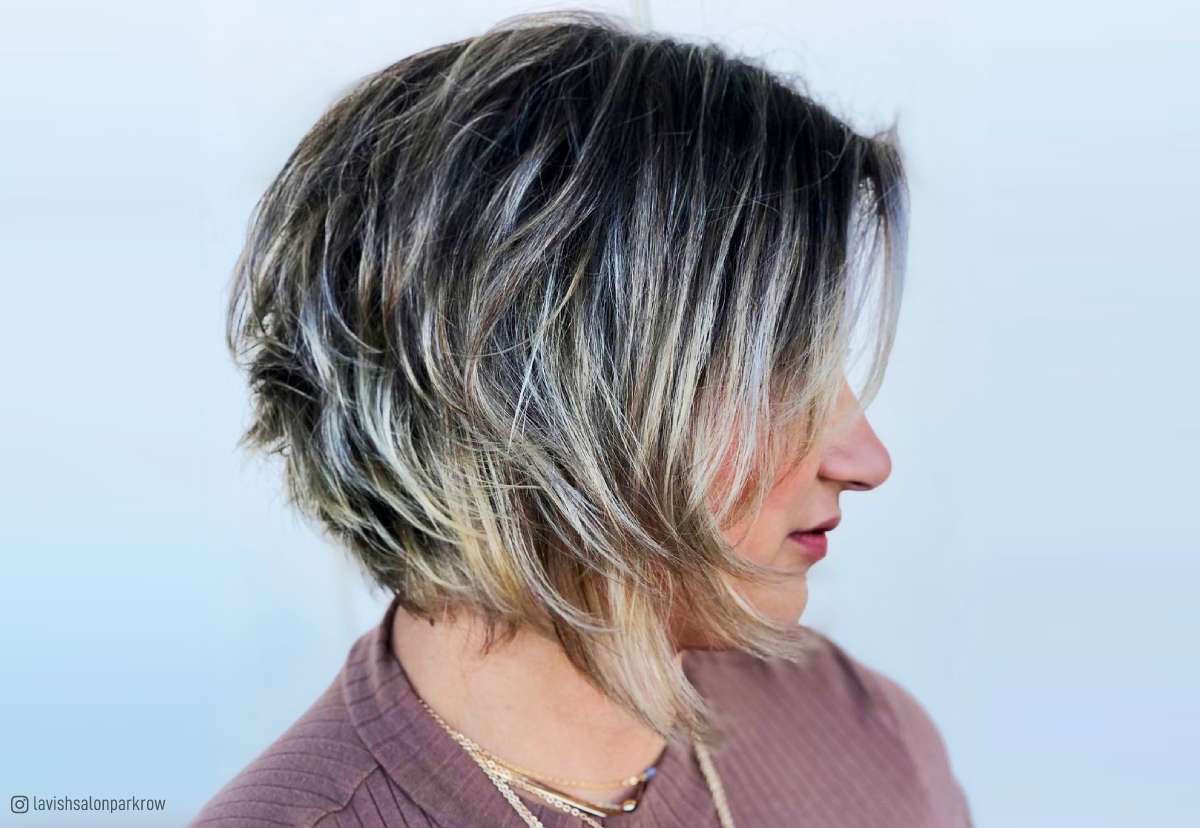 ↓ Jump to Photo Gallery
↓ Jump to Photo Gallery

